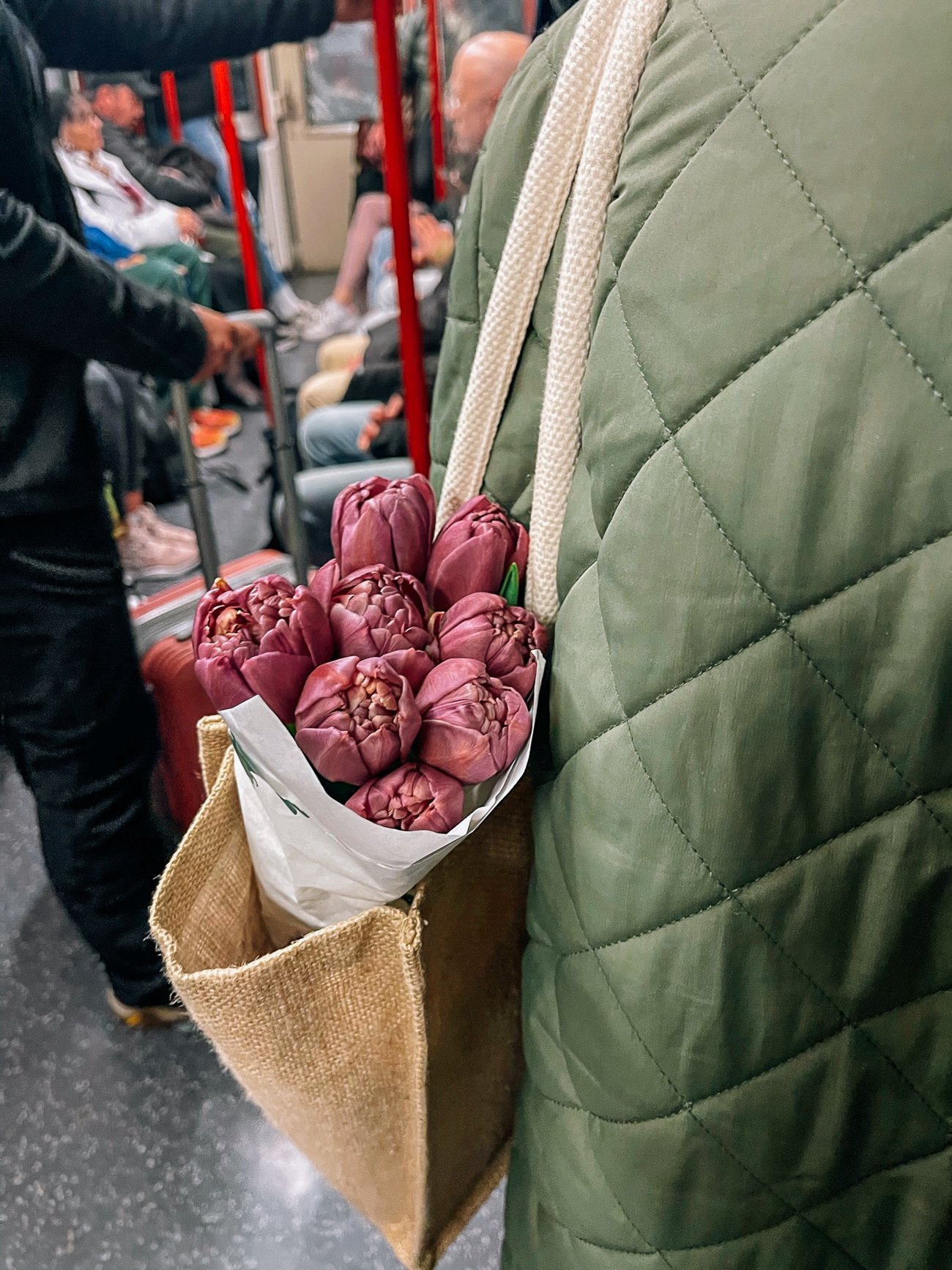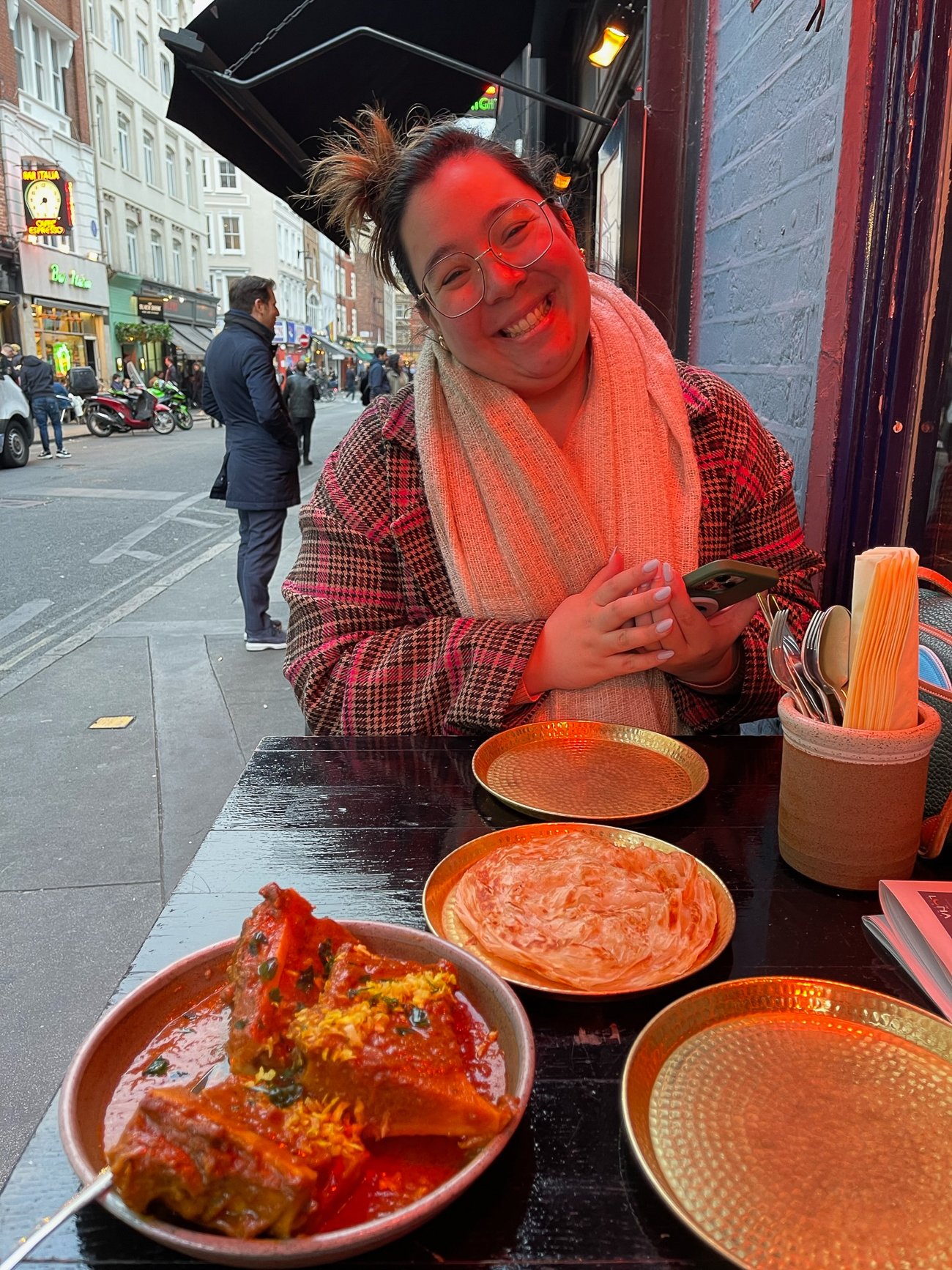It’s Kaitlin—I’m back with another adventure! Oxford is a beautiful city full of history and charm. Here’s a look at what we did during a quick two days in Oxford—during my trip to London.
As promised in my review of a recent trip to London, Oxford is Part 2, with Part 3—the Harry Potter Studio Tour—coming soon.
worth the trip
I have to say, Oxford was one of the most enjoyable parts of the trip. It was refreshing to see more of England even if it was only for a brief time. Arguably, it was still pretty touristy/traditional in terms of what we Americans might think of when we think of England.
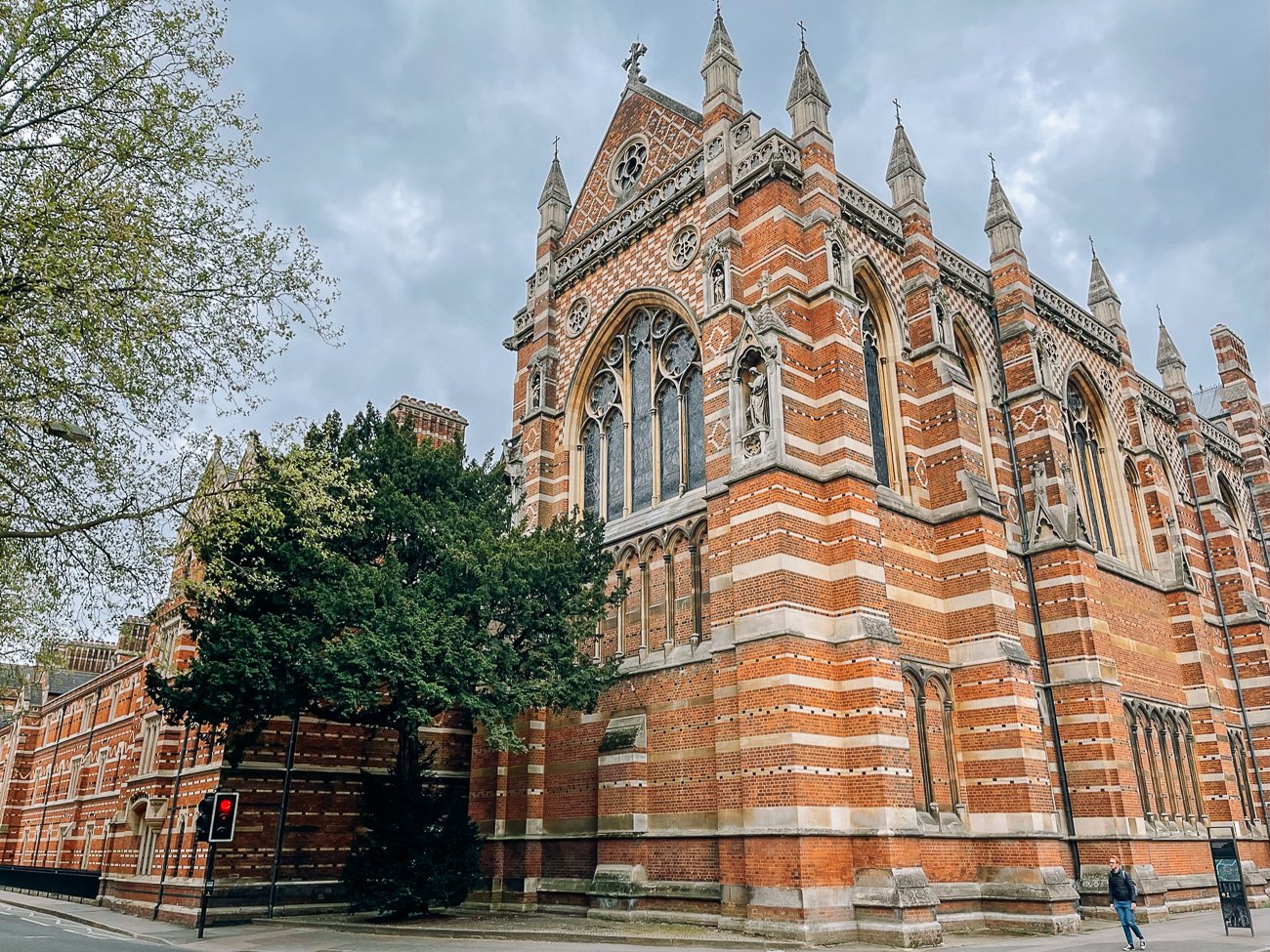
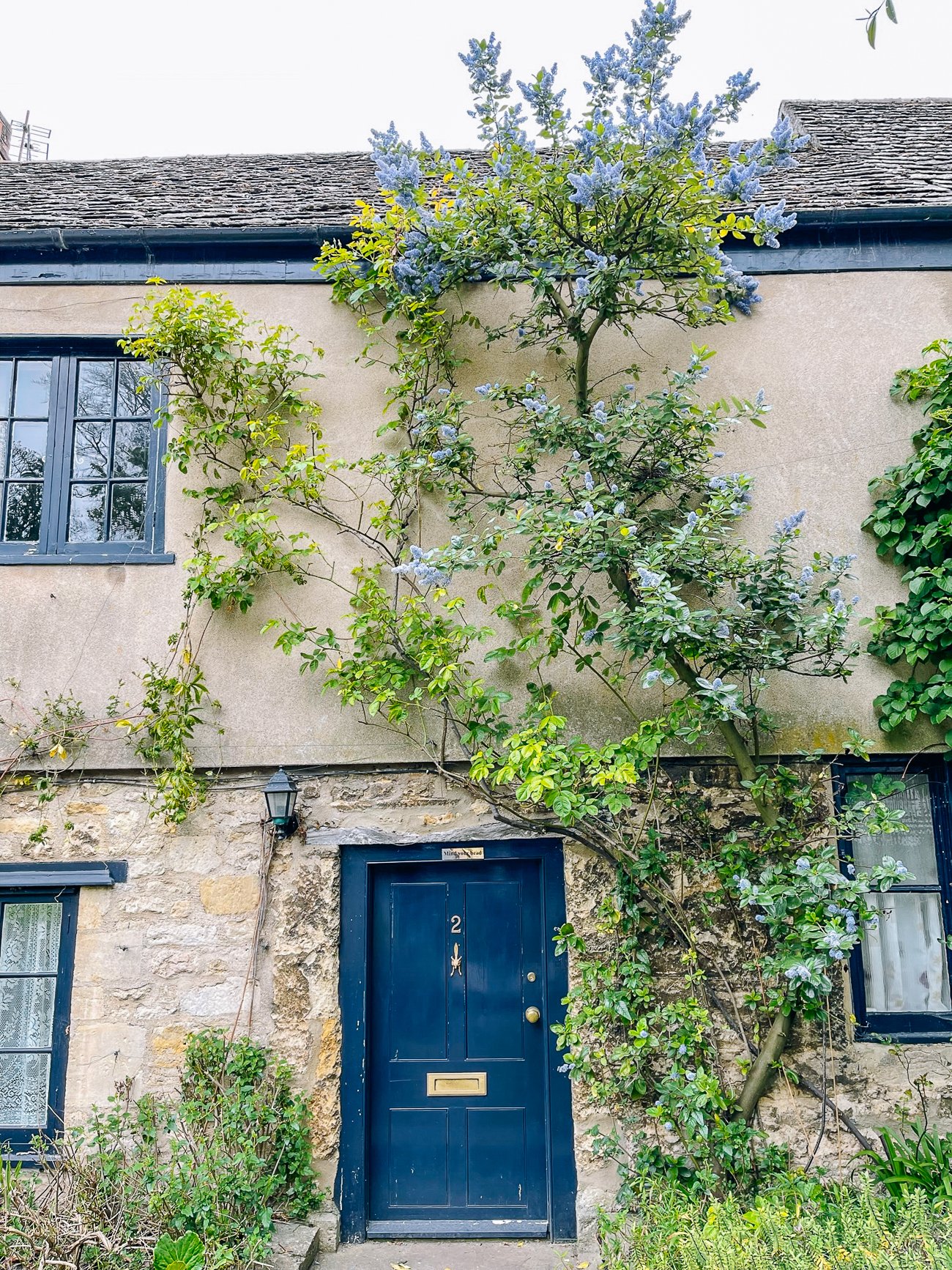
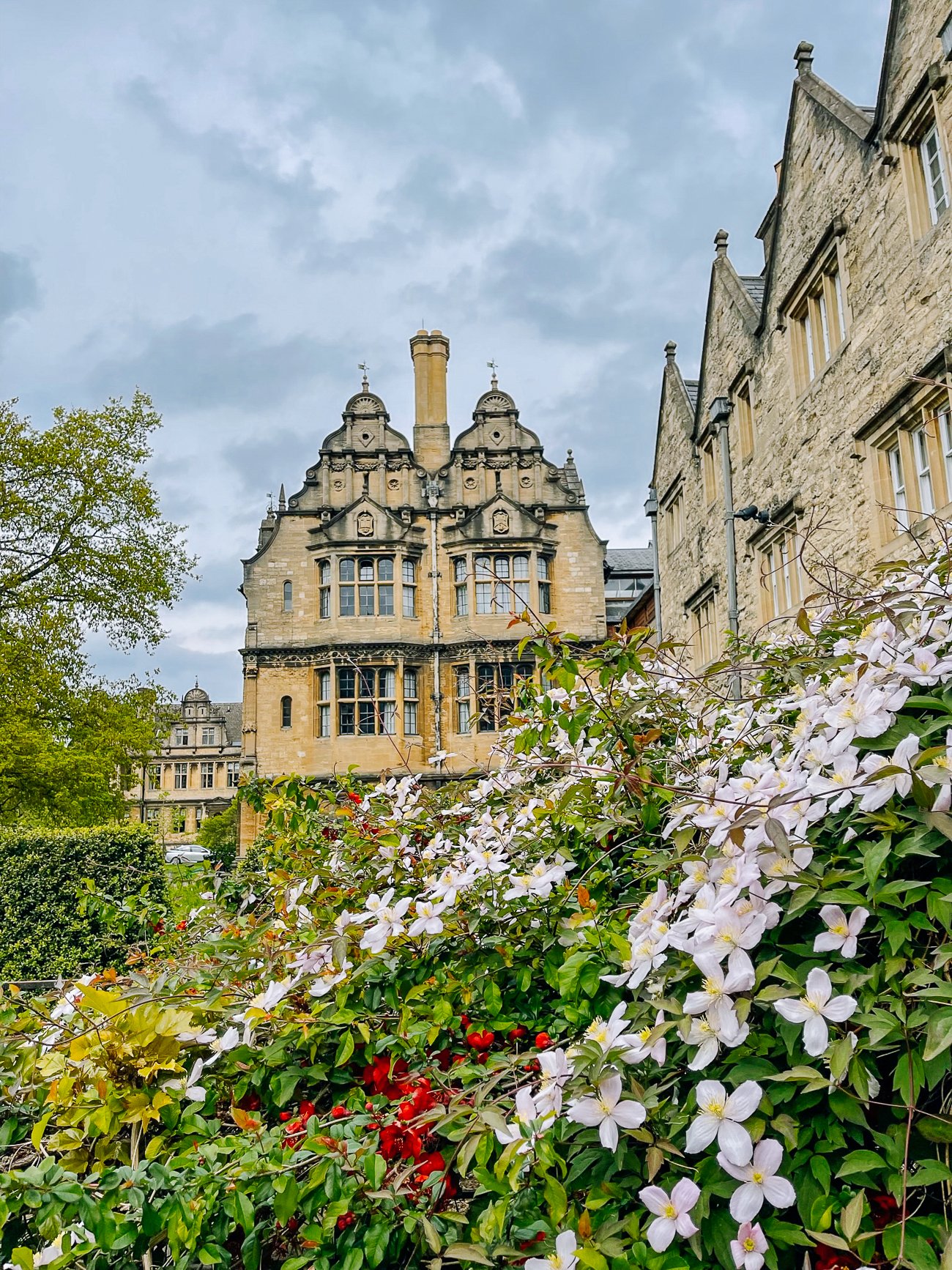
As I’ve said with these guides, let it be an example, not a blueprint, of how to spend time in Oxford and have your own unique adventure.
While I was only there for two days, I found enough things to do in my research to keep you busy for a week! In hindsight, I wish that we’d had 3-4 days. On the second day, we felt a bit rushed.
Getting to Oxford from London
We took a Great Western Rail train from Paddington Station in London to Oxford train station. There’s more information in the London post comments about the finer points of London public transport from folks who actually live there.
But the TL;DR is: you can buy your tickets directly from Great Western Rail (they have a handy app and offer discounts for buying in advance), or you can simply walk into the station and buy a National Rail ticket from whatever station you’re in (at any ticket machine, apparently) to your desired destination. If you’re nervous like me, just ask a station attendant for help.
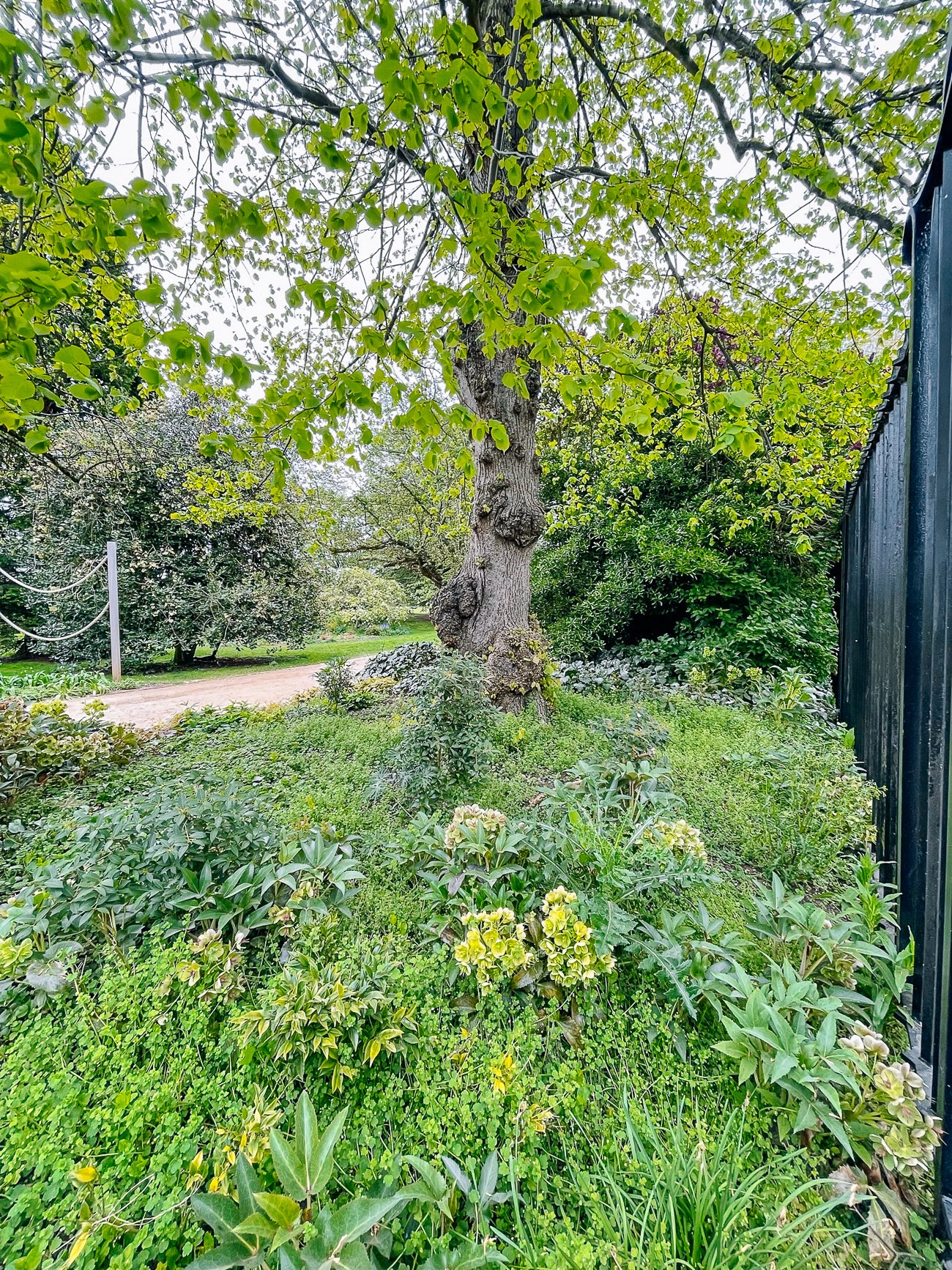
Oxford is also a mid-way stop on the way to less familiar destinations like Hereford and Banbury. But as I recall, it was pretty seamless getting on the train, and there wasn’t much danger of boarding the wrong one. Here’s a map in case you’re curious.
Where to stay in Oxford
I’m not going to be of much help here, unfortunately, as I crashed in my good friend Vicky’s dorm. (Technically against school rules, but she graduated already, so they won’t be doing anything about it now!)

Vicky and I met at work, when we were just babies learning how to really be proficient at Microsoft PowerPoint and how to artfully answer client emails without having a minor panic. Now, I’m leaning into working on the blog full-time, and when I visited, Vicky was at Oxford getting her MBA!
Back to the topic at hand though, we walked by what seemed to be a very posh and popular hotel right across from the Ashmolean Museum called the Randolph Hotel.
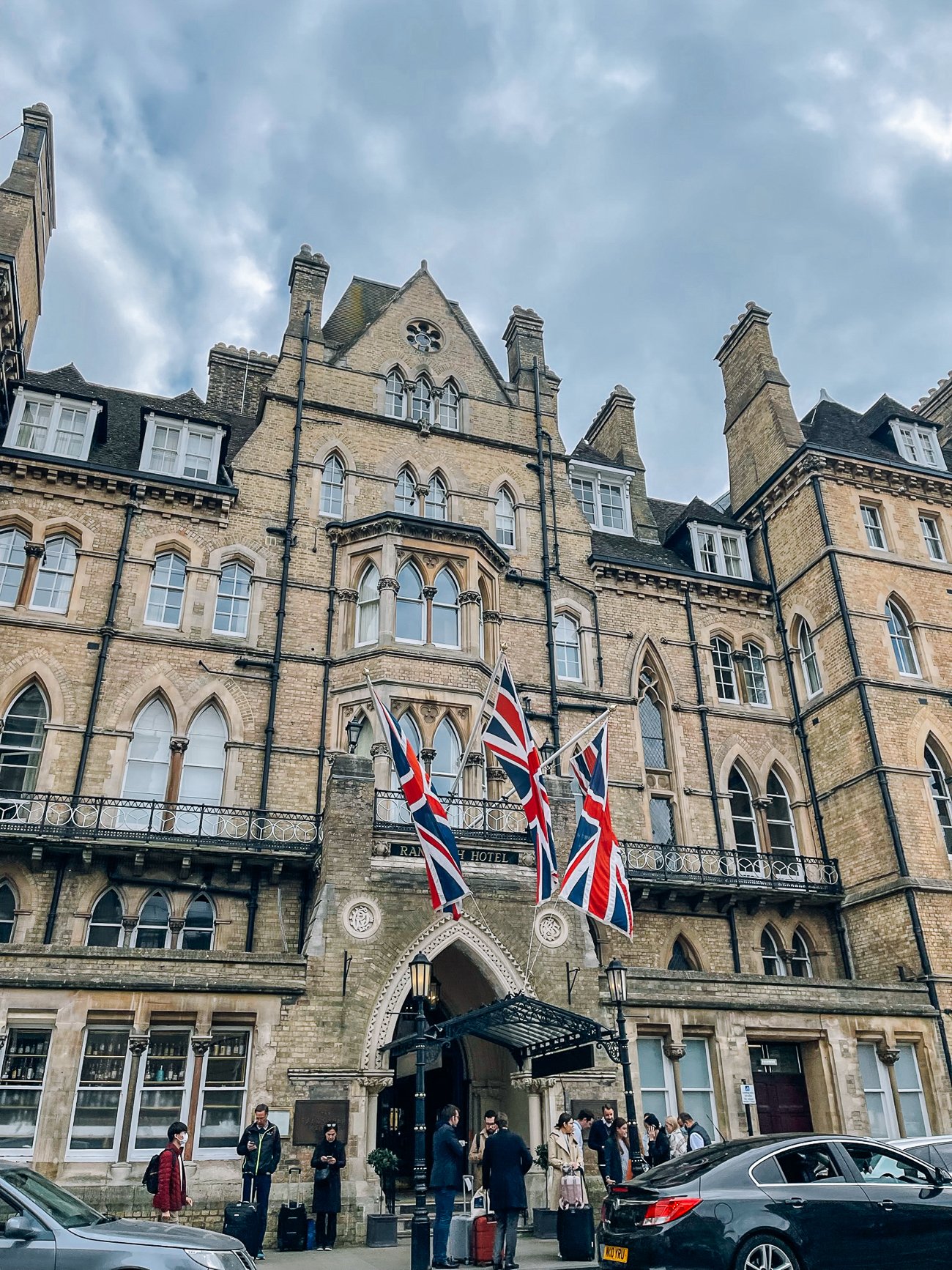
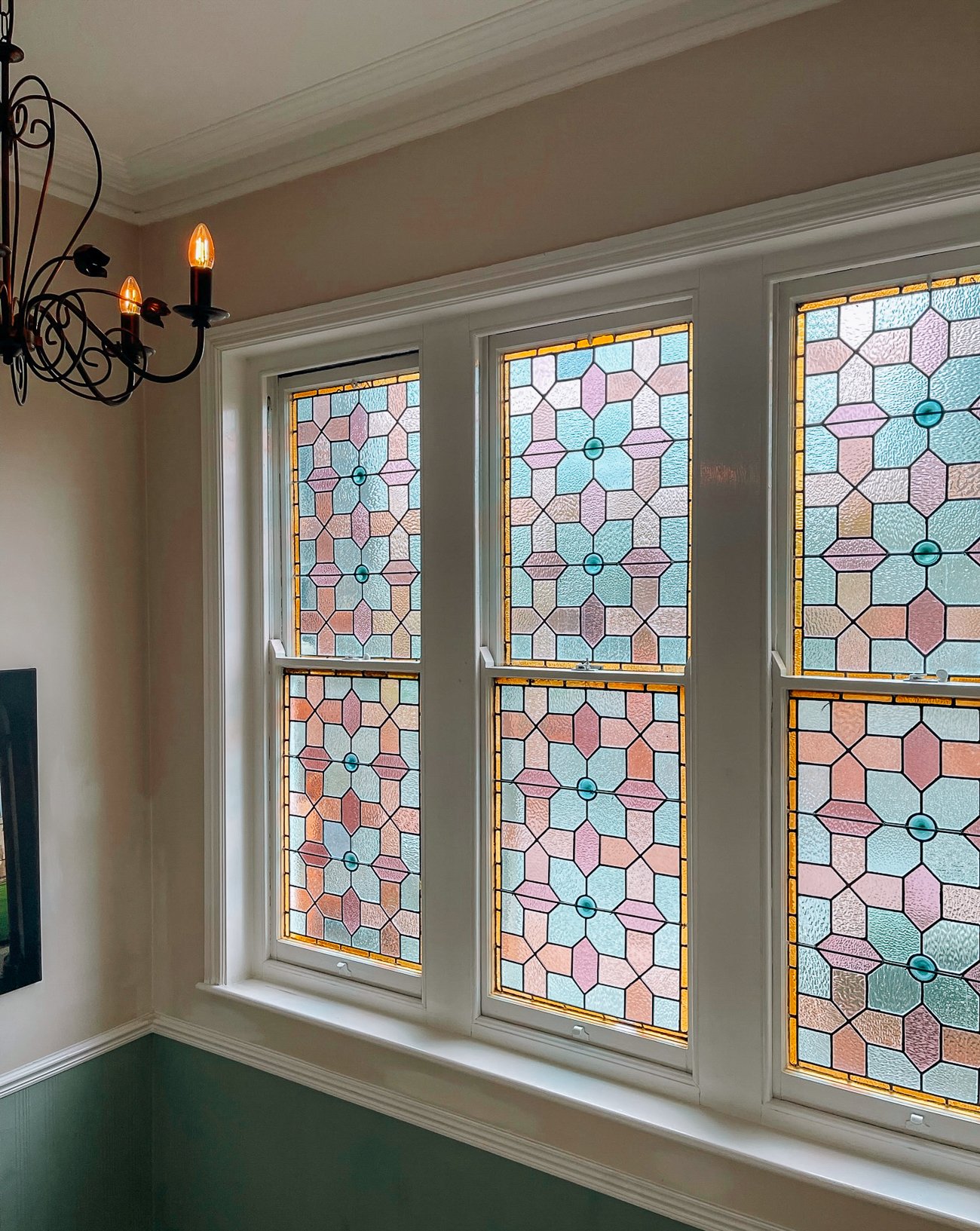
There were also other reasonably-priced hotel options that I briefly perused before deciding to couch surf.
Getting around Oxford
Oxford is primarily a walking city. It’s easy and pleasant to walk around, especially given the city’s rich history.
There are also Voi scooters, which was our main choice of transportation. Ever since last summer, when Kim converted me to the scooter life at the Jersey Shore, we jump on scooters whenever we see them on our travels, because they’re fun, convenient, and fairly cost-effective.
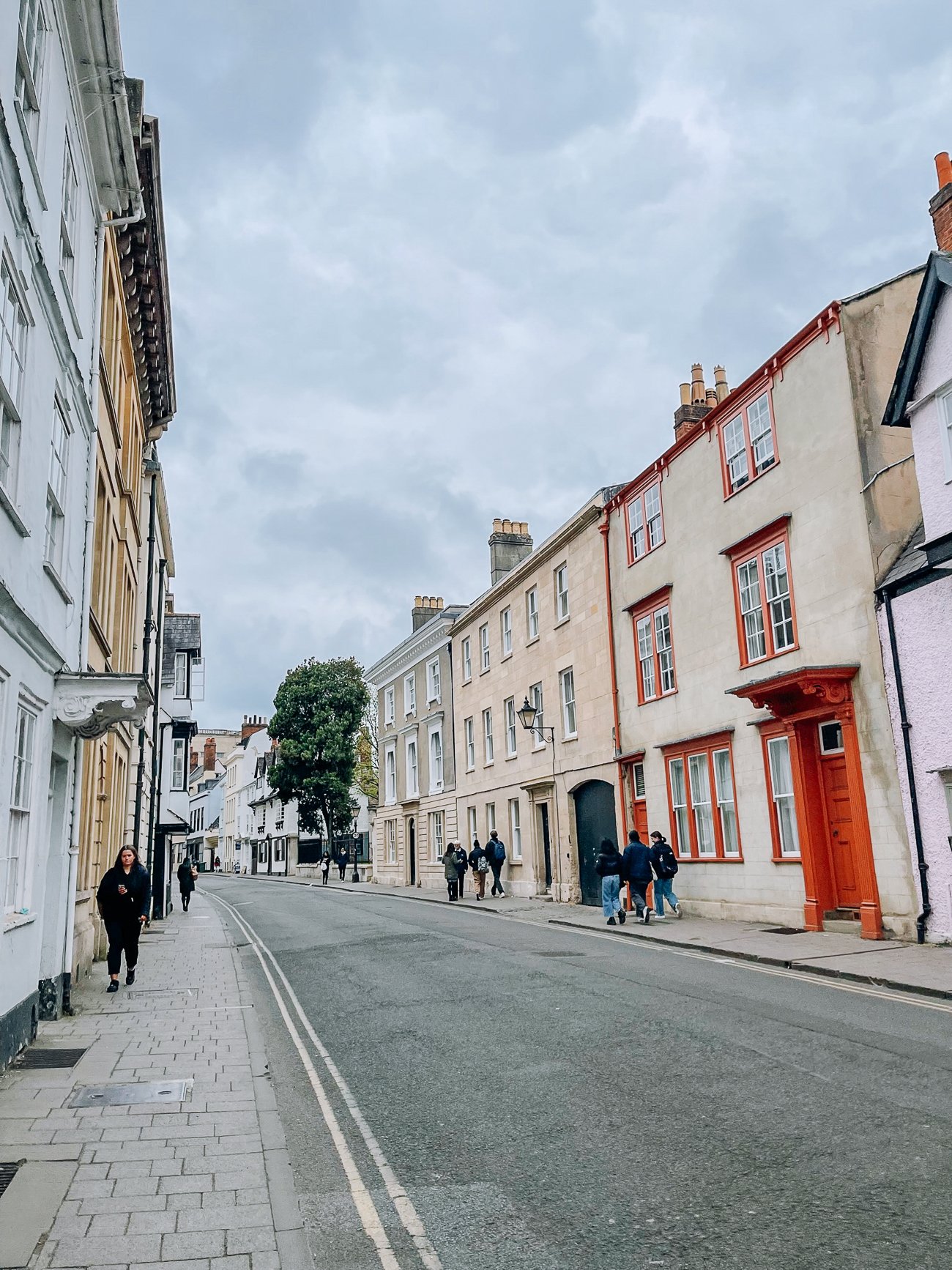
They are popular though, so you may have to walk to a couple scooter stations before you find one, depending on the time of day. It’s honestly a miracle that I didn’t get run over by accidentally riding on the wrong side of the road.
When I thought of Oxford, I pictured a sleepy little college town, but it’s a pretty large city, so there are taxis. Depending on the time of day and where you are (i.e., not a sleepy side street or busy thoroughfare at an odd hour), you can just hail a cab the old-fashioned way.
For every other situation, there’s a taxi hailing app called FREE NOW—similar to Uber, but for taxis. We used it to get to the train station at the end of our trip, as Vicky’s housing wasn’t close enough to walk from.
Touring Oxford University
Oxford University was founded in 1096. Think about that for a sec. YEah.
So when my friend Vicky broke the news that she had GOTTEN INTO their MBA program, I knew I wanted to plan a visit to see her and get an inside look at the school.
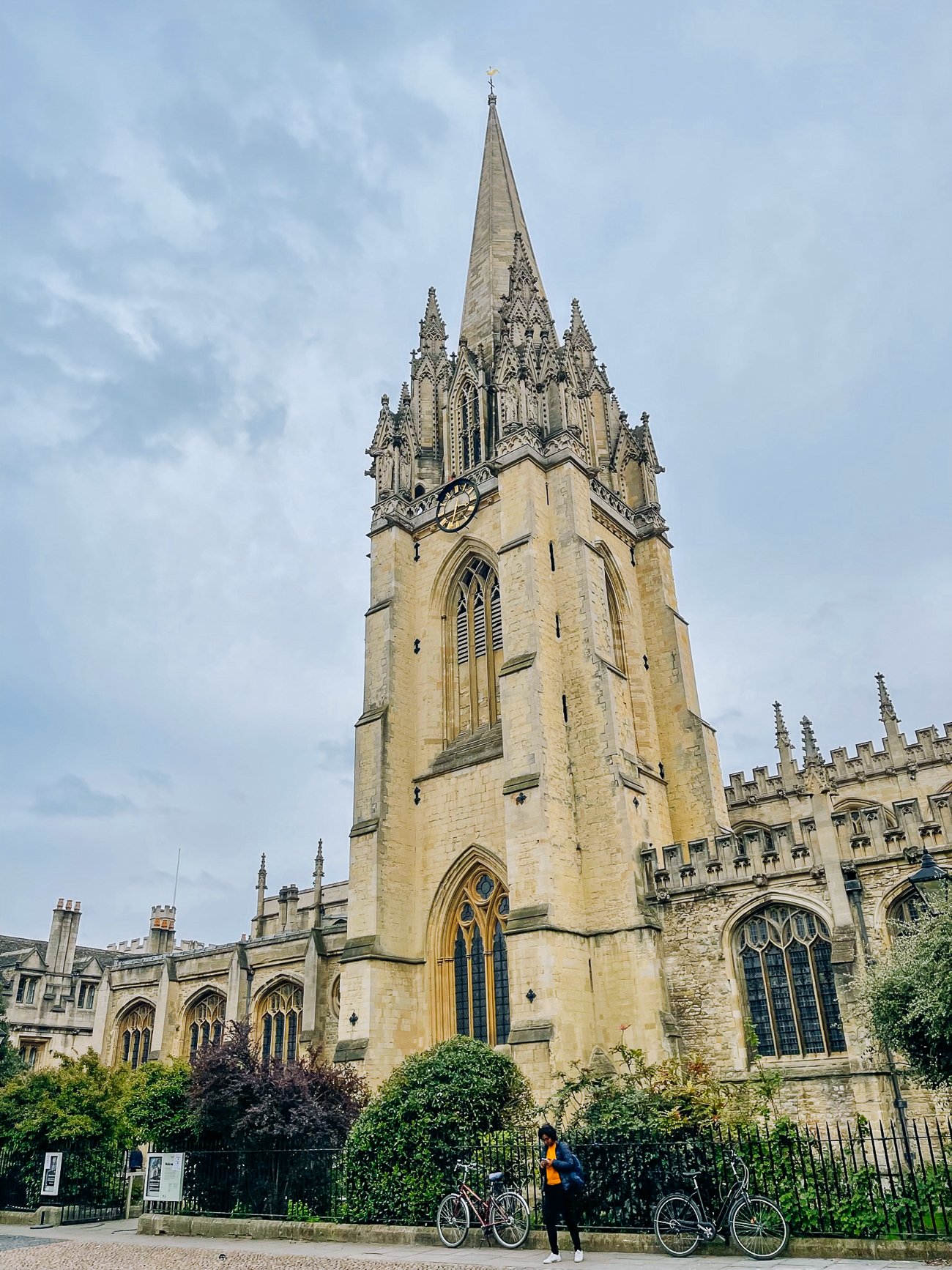
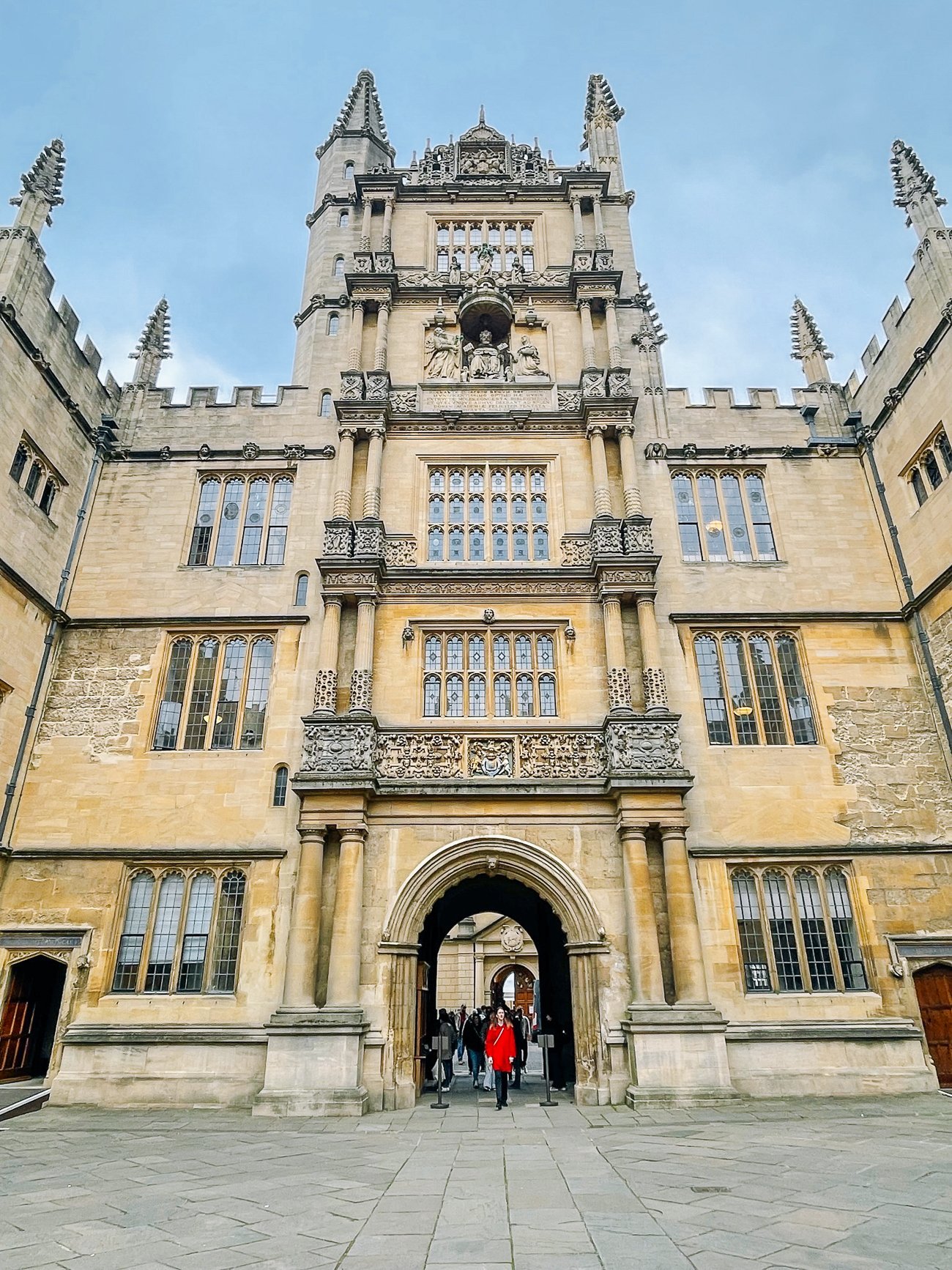
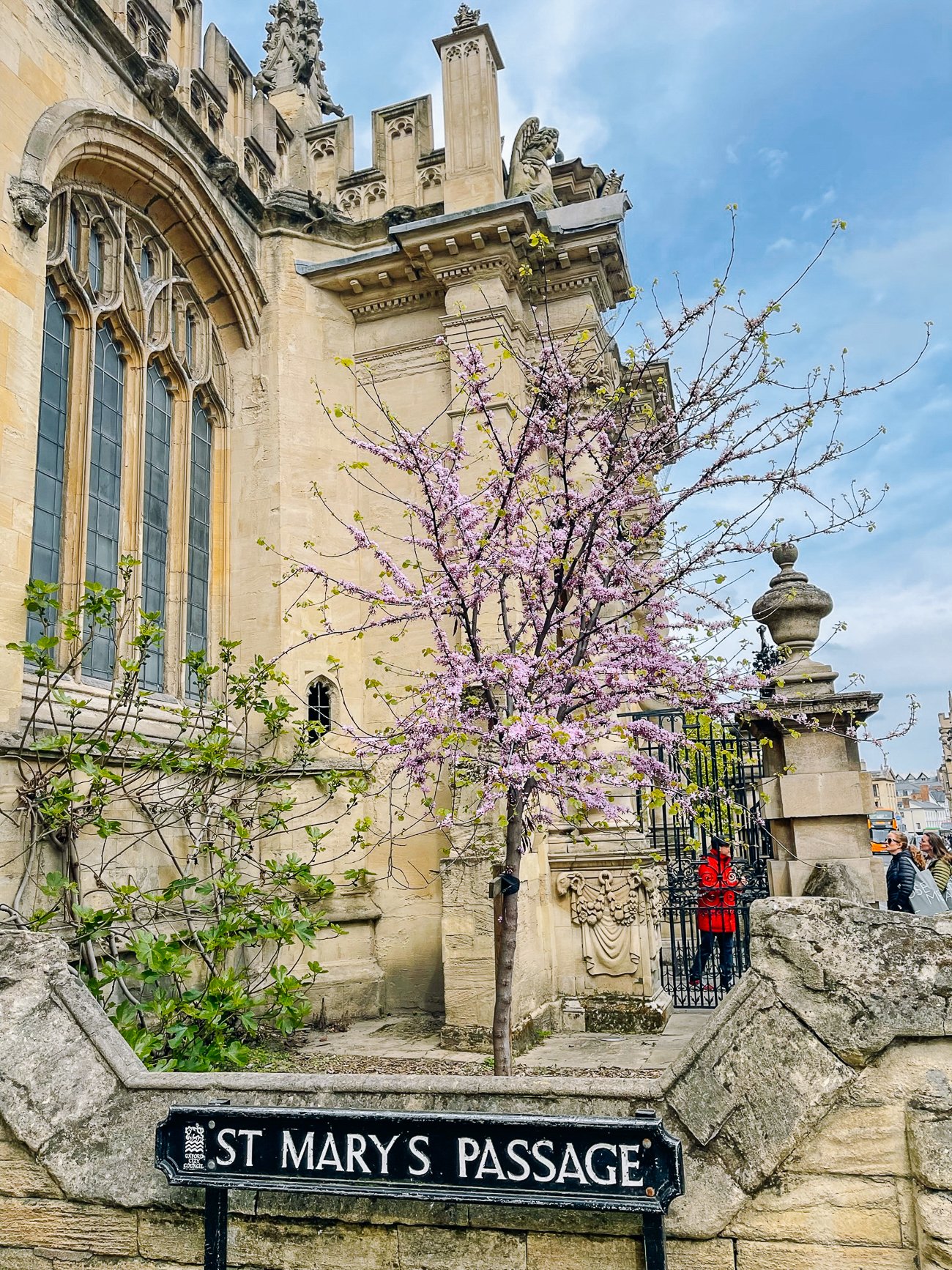
Lucky that, too. Because you get nickel and dimed a bit to see the university itself. It’s not expensive per se, but all the sites do add up.
Unless you’re faculty, a student, or a guest of the university, they make you pay to gawk at the history, medieval splendor, and portraits of old white guys in the main campus attractions.
Luckily, simply walking around is a truly amazing sight. (Student IDs were flashed more than I’m letting on, but I feel like there were plenty of tourists around not obviously with a student.)

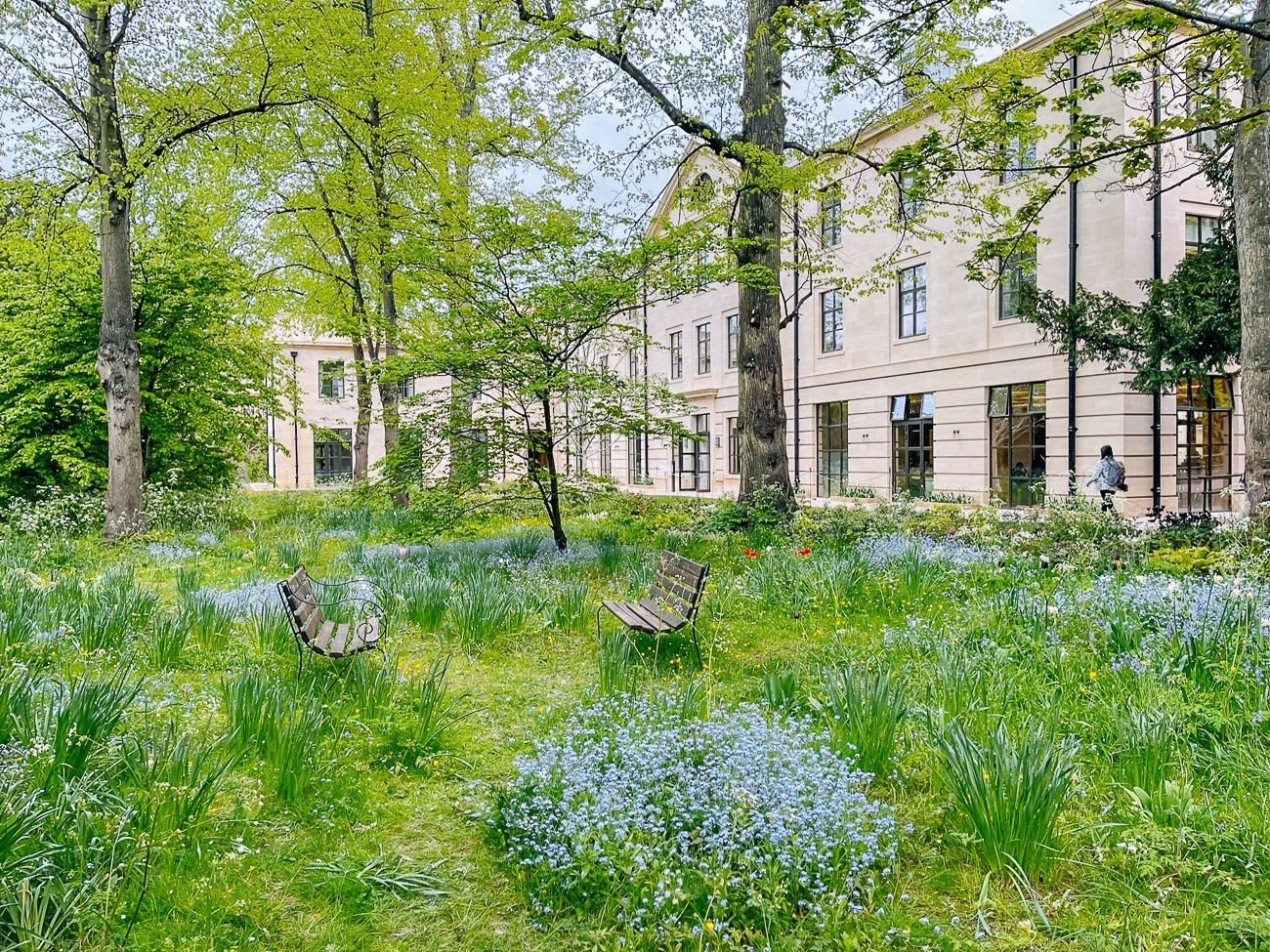
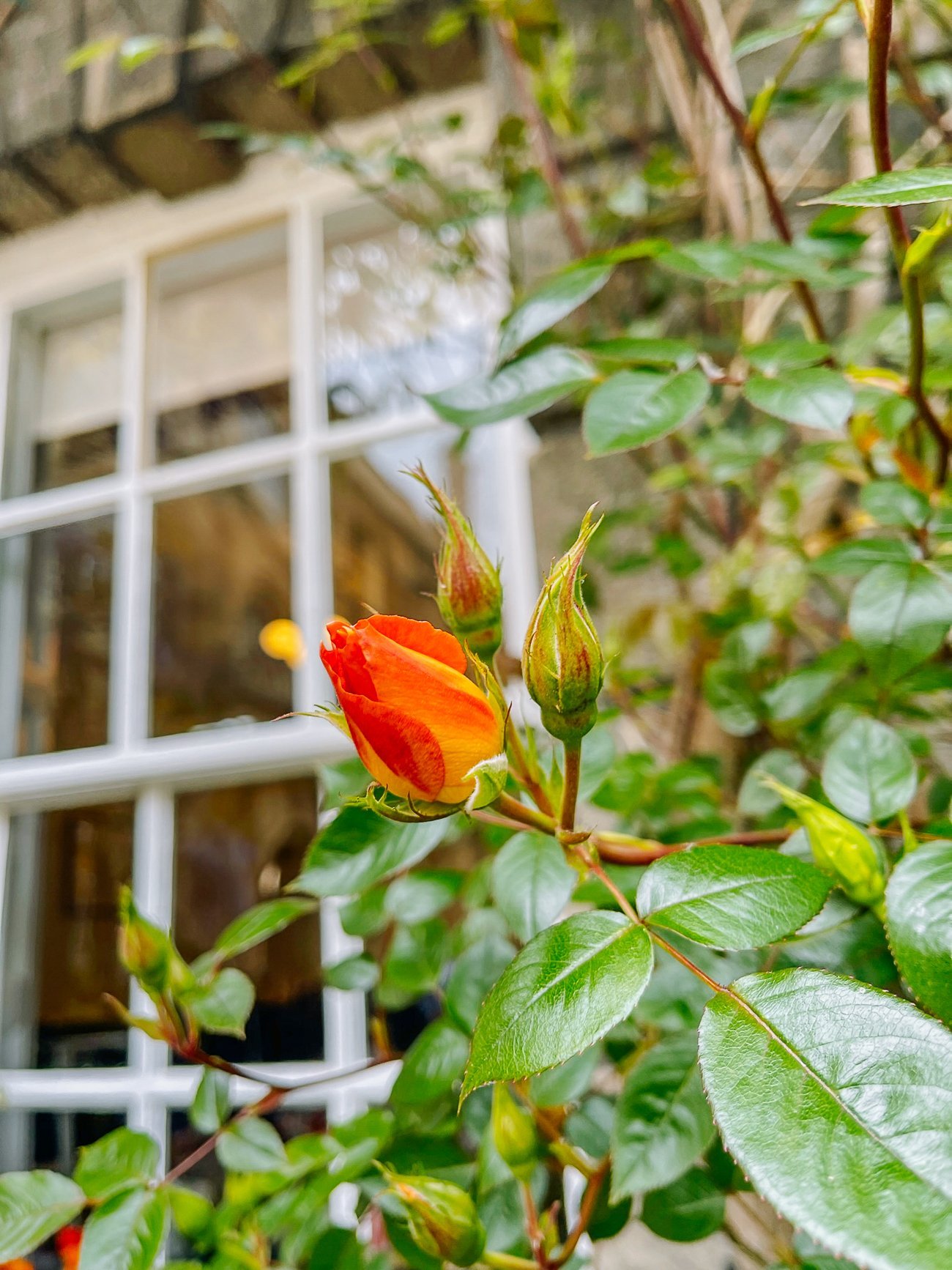
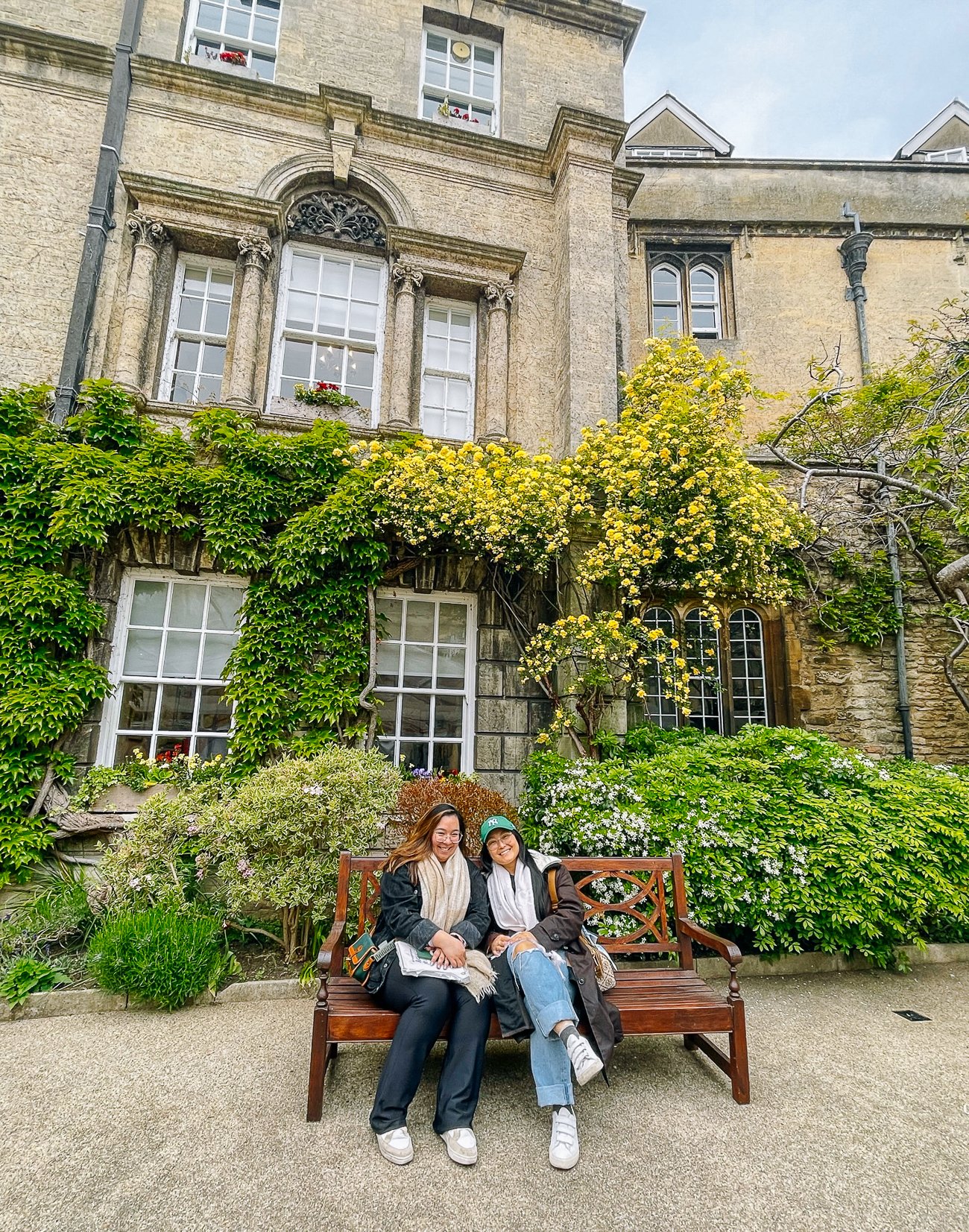
Most of the time, Vicky quietly ushered us in with her student ID, but there were a few spots that we paid to see, like the Bodleian Library and Divinity School.
At many places, we just admired the exterior, because we didn’t have enough time for a more in-depth visit to make a ticket purchase worthwhile.
Radcliffe Camera (Radcliffe Square)
Radcliffe Camera is an iconic piece of Oxford University architecture. It is a working library—part of the Bodleian Library. You can go inside, but you probably won’t want to linger for too long. Like many of the study spaces in Oxford, you could probably hear a pin drop.
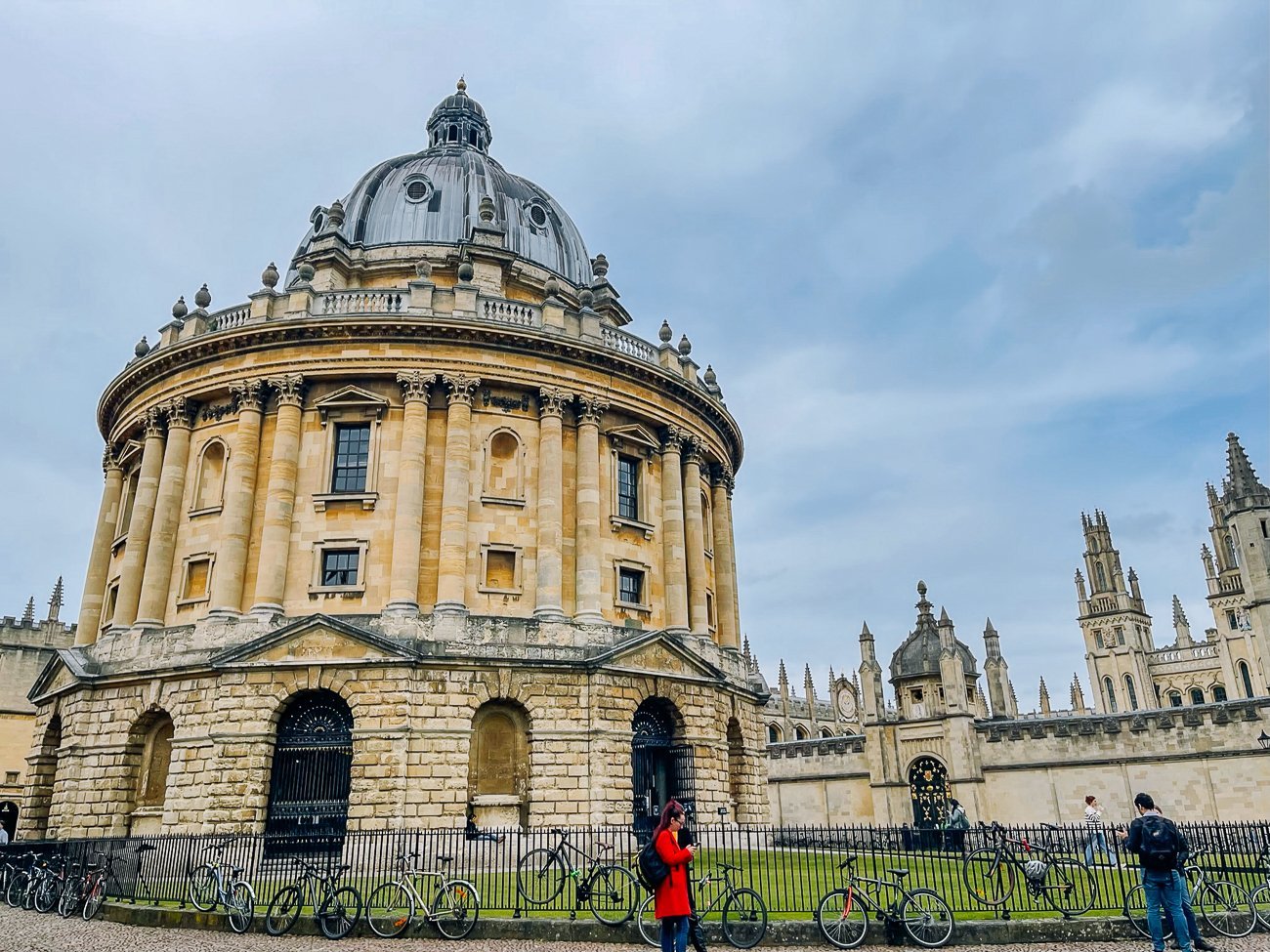
The Oxford Union
The Oxford Union is a university hub for legendary debaters and prominent thinkers and speakers. The walls are filled with photographs of luminaries and Oxford Union members through the generations, who’ve graced the union with their thoughts and words.
It’s a funny place with a wall of DVDs available for rent, a bar for social events and parties for students, as well as an extremely beautiful and ornate library that was dead silent in spite of having a handful of people there.
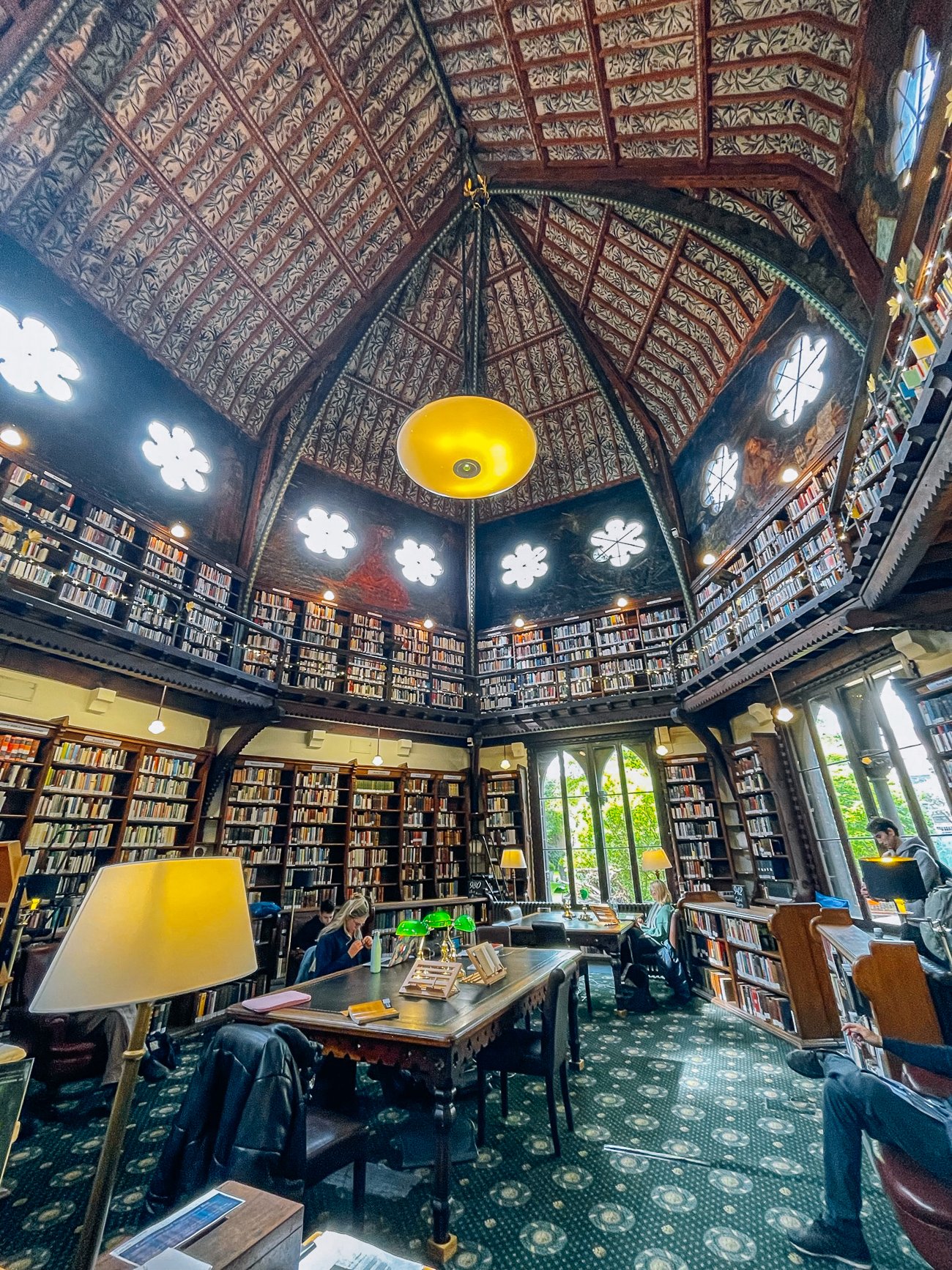
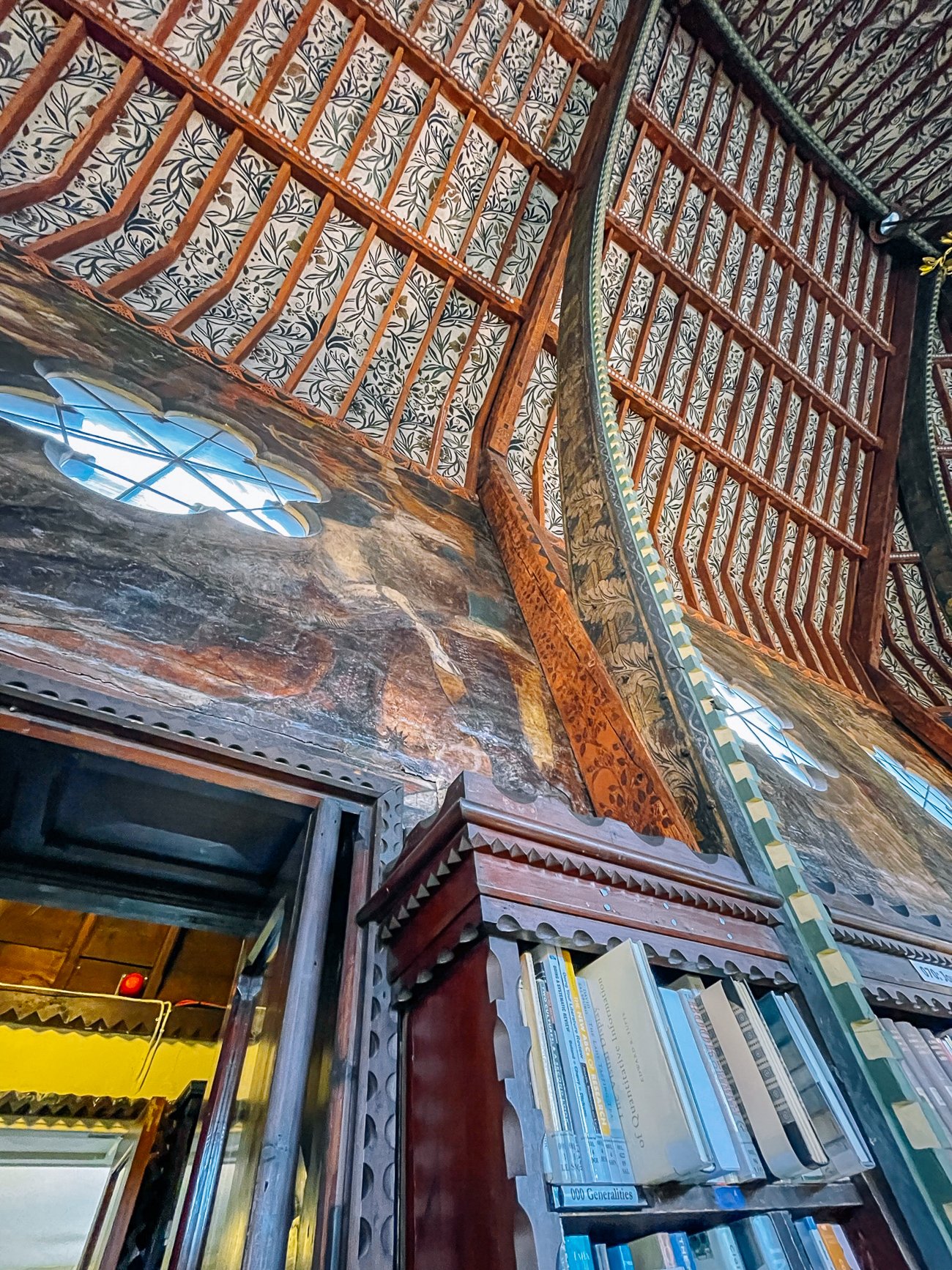
Bridge of Sighs
Hertford College was Vicky’s college (it’s kind of like your Hogwarts house—designating the places you spend the most time living and studying, and the people you spend time with). The Bridge of Sighs is within Hertford College.
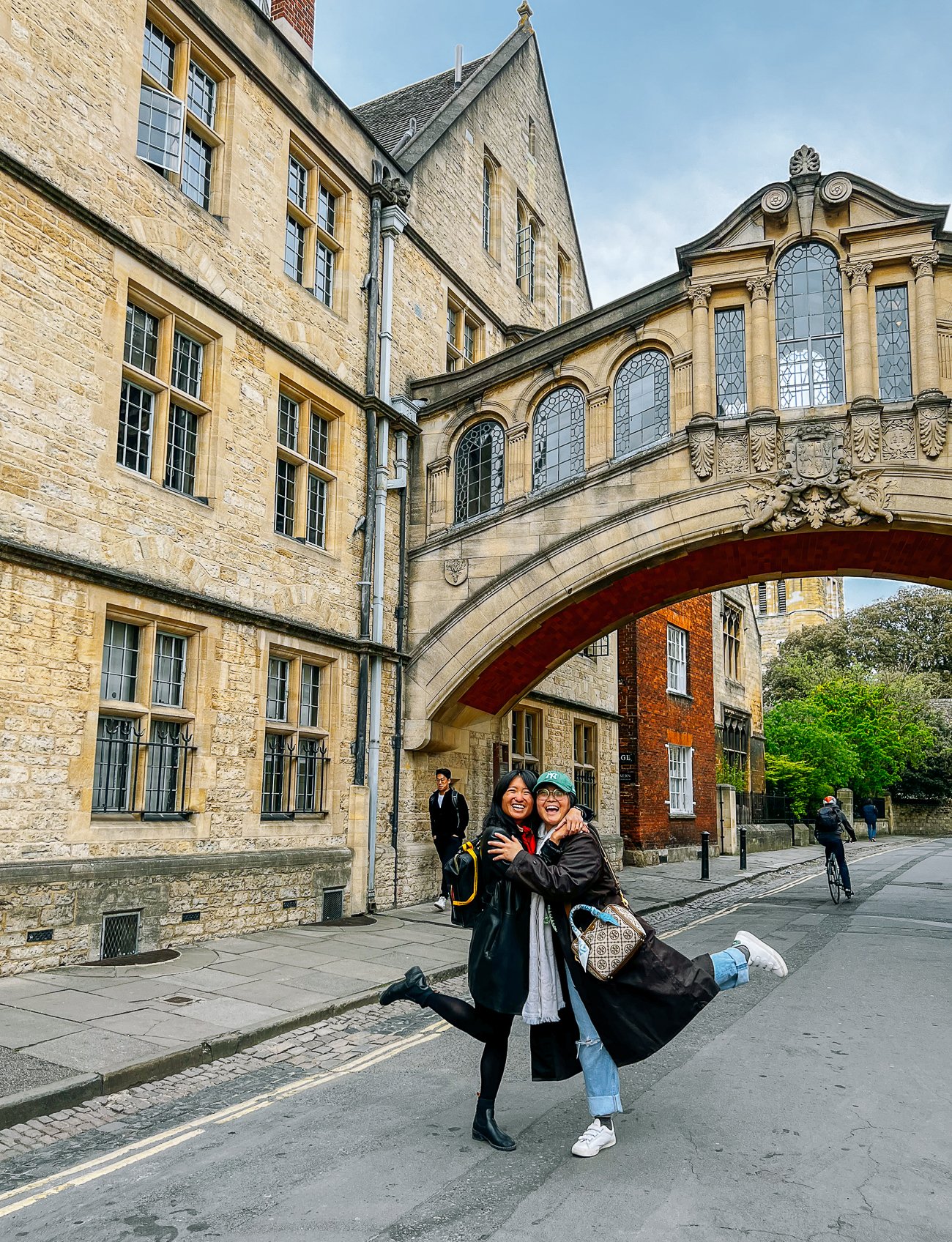
We had a chance to walk inside and see it from the outside too. (Spoiler alert, the story isn’t as romantic as the name might suggest, and it’s also not technically modeled after the bridge of the same name in Venice.)
Inside Oxford:
We walked through some of the other colleges as well, courtesy of Vicky’s friends. For instance, we walked through St. John’s College (I have very few pictures, sadly, except for the St. John’s chapel—it was too dark at night), which is known as the swankiest of Oxford’s colleges.
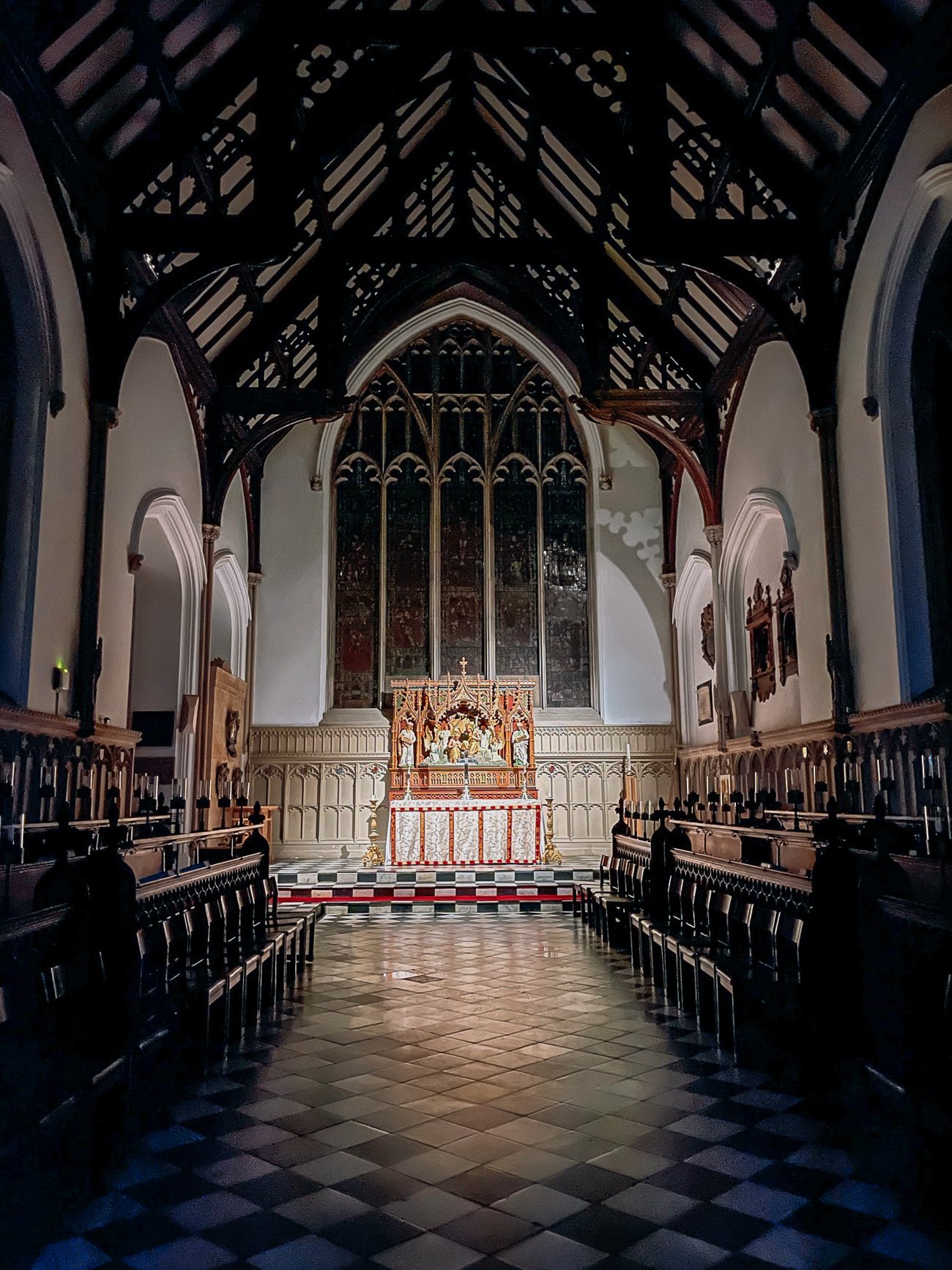
Their assets amount to some £600M (at least as of 2018, according to The Guardian. Former British Prime Minister Tony Blair is an alumnus).
It’s quite competitive in the way U.S. college admissions can be. First, you get into Oxford University, but then you have to apply to the colleges themselves, with the university giving its brightest, most promising or—real talk: likely also the wealthiest—students the pick of any college they desire.
As you can imagine, with colleges having vastly differing levels of wealth to put toward academia and student life (read: perks), it can create a big difference in the college experience.
Hertford College was what I would have imagined. Cozy, lived in, and distinctly old.
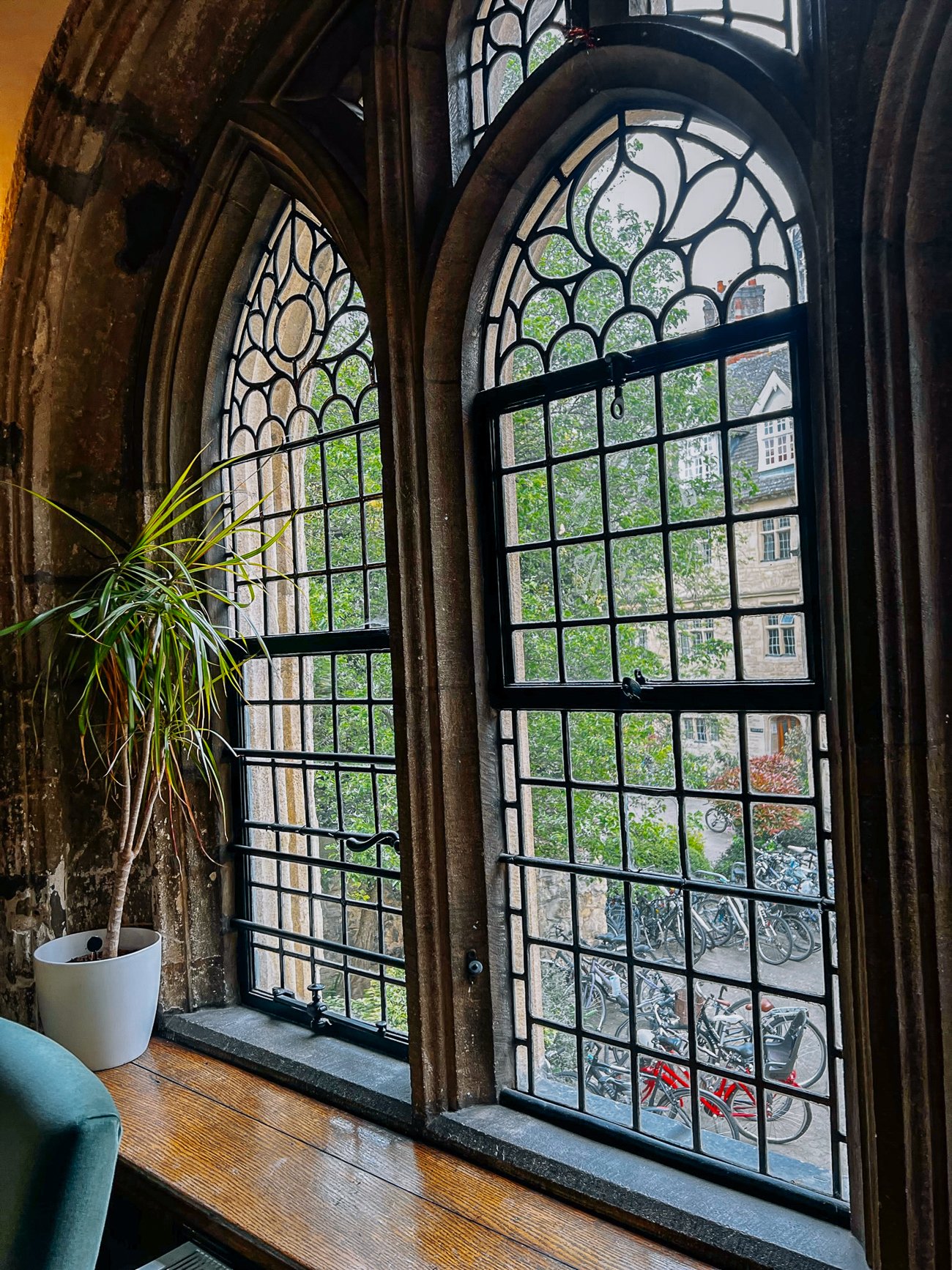
St. John’s College was sleek, expensive, and modern. It looked like a luxury condo complex in Shanghai. Enough said! Nevertheless, it was fascinating to learn more about the inner workings of the university.
Broad Street, University of Oxford main thoroughfare
In your wanderings, you’ll probably end up on Broad Street, which has quirky bookshops, boutiques, and shops to get souvenirs. I bought a magnet for my refrigerator collection!
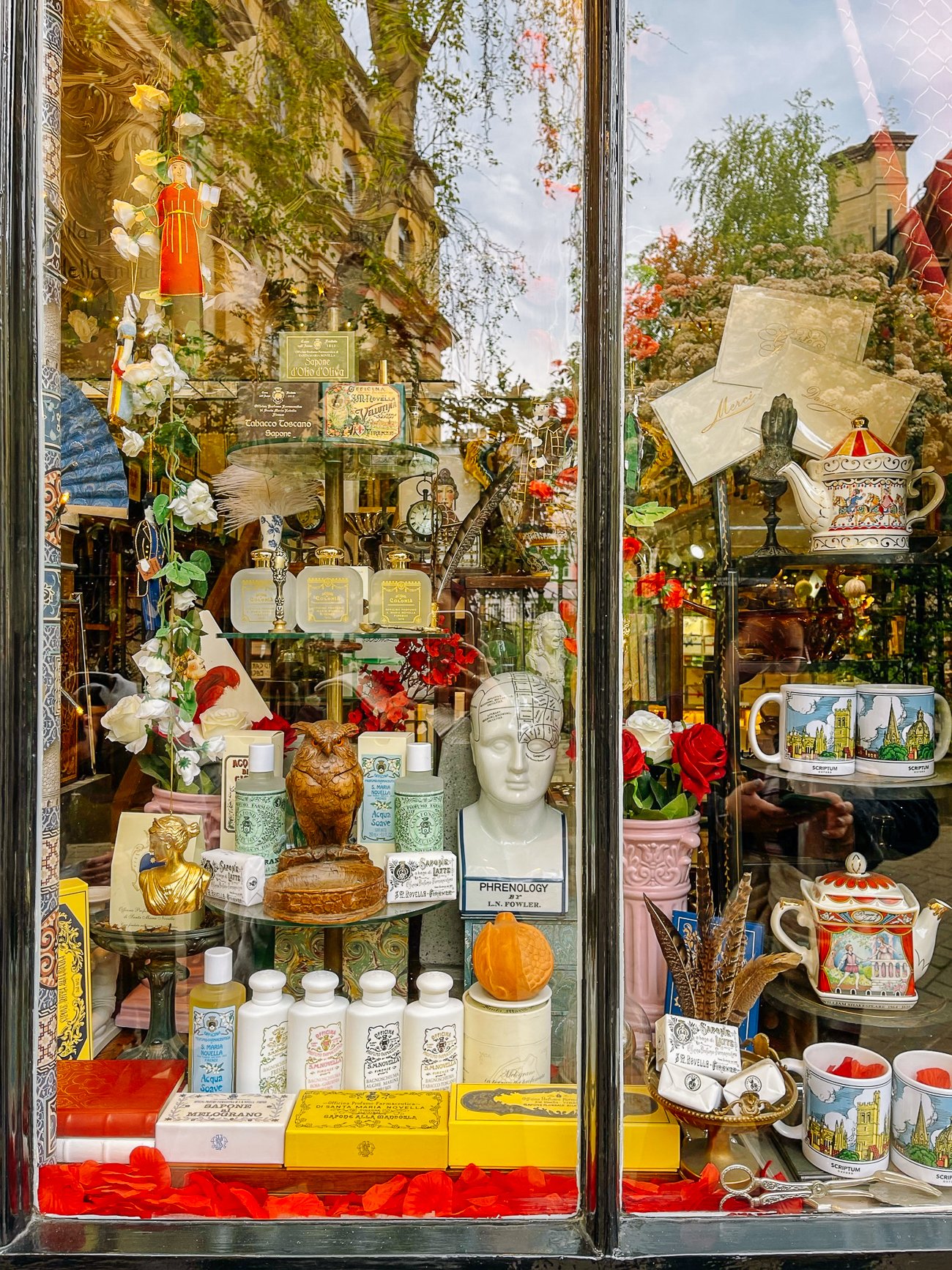
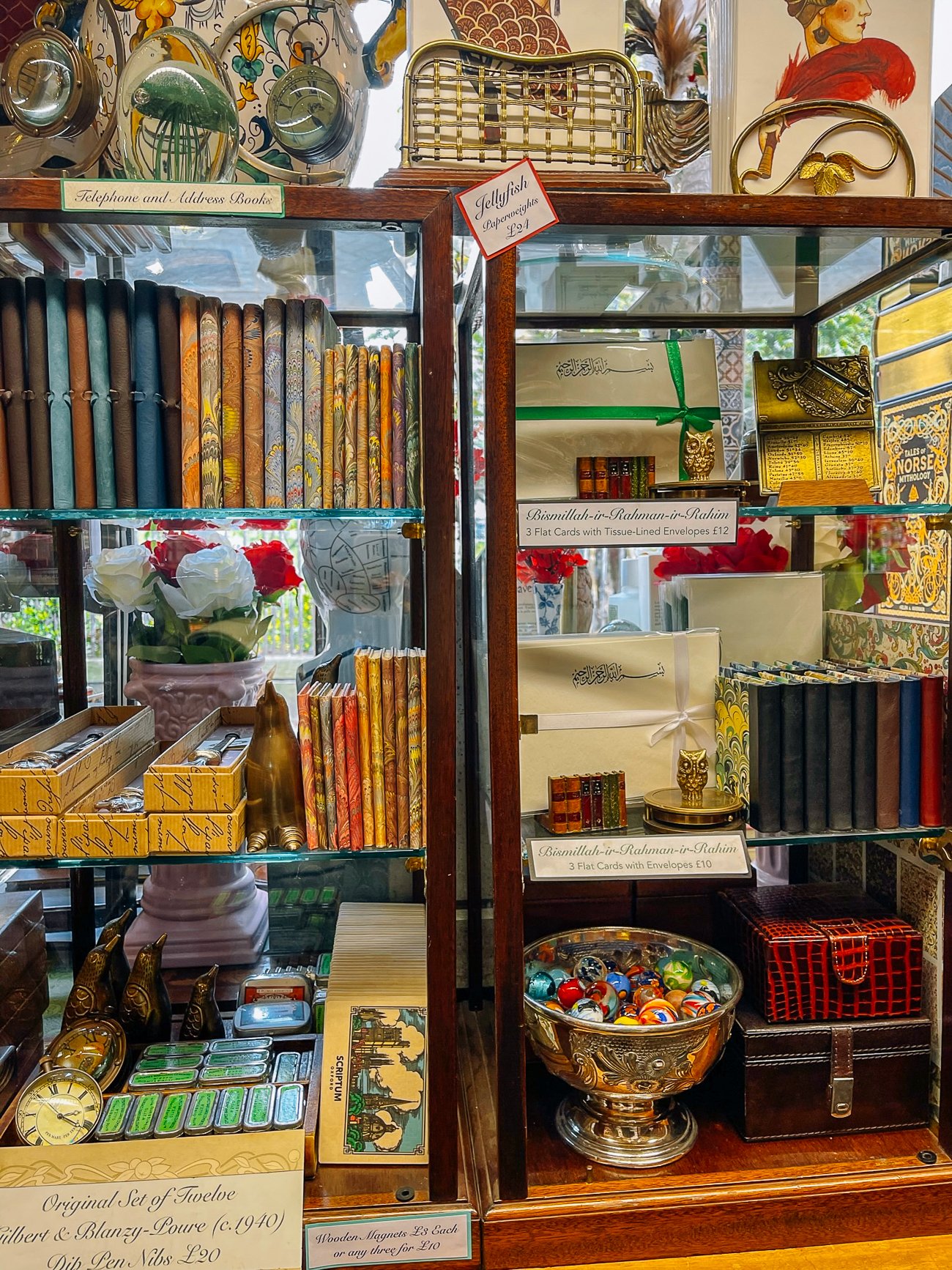
Up the street is the King’s Arms pub, the oldest pub in Oxford (opened 1607). They also boast the highest IQ per square foot in the world!
I sadly didn’t have any unexpected meet-cutes with a charming metaphysician, mathematician, chemist, doctor, or poet. Drat.
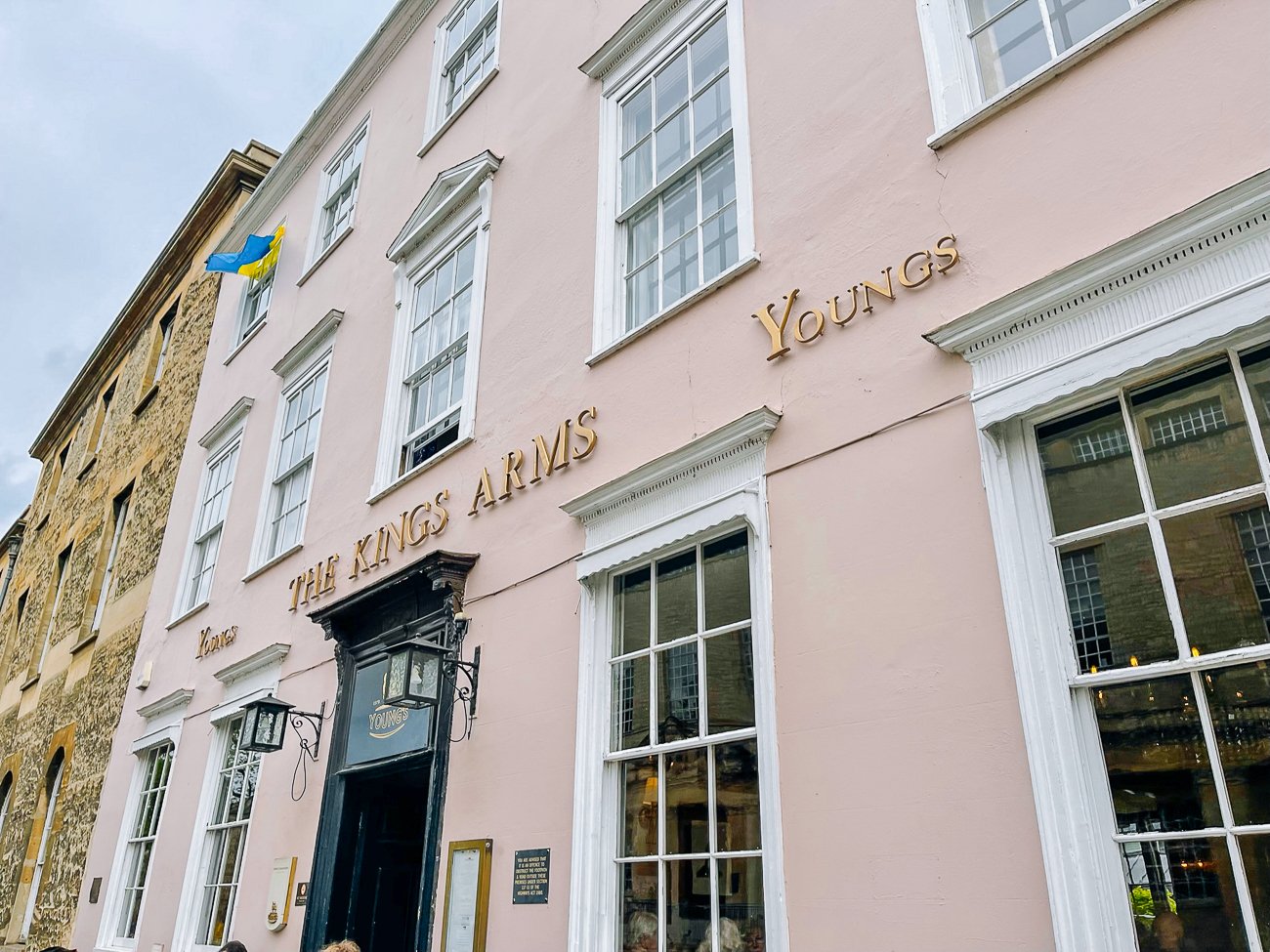
Christ Church Cathedral
You may recognize the cathedral from various Harry Potter scenes. It was built from 1160 to 1200. It’s open as a house of worship, but there are ticketed guided tours as well.
These pictures below are not Christ Church Cathedral, but we wandered into some of the old chapels of the school, of which there are tons. If anyone recognizes this space, sound off in the comments with the name!
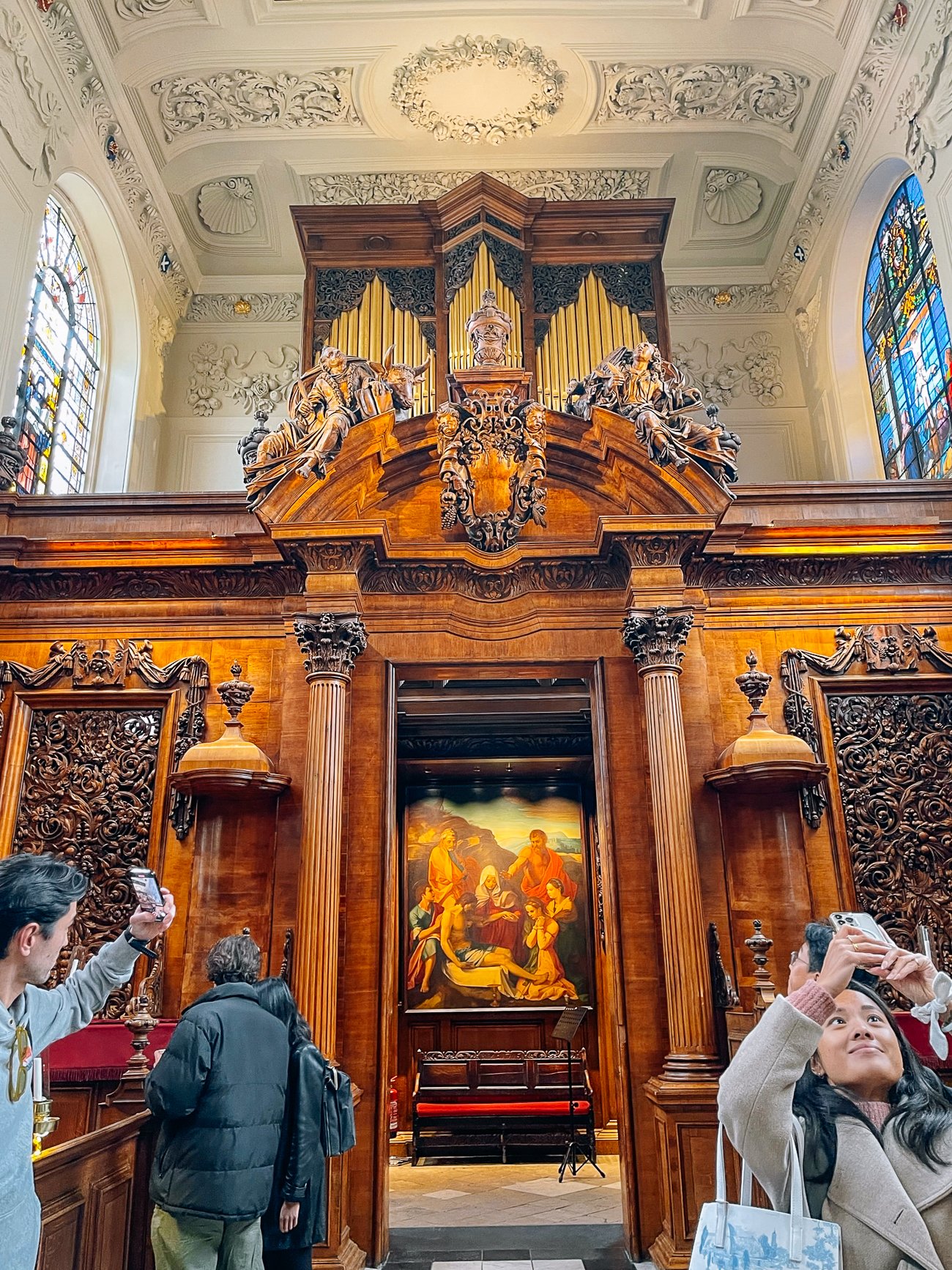
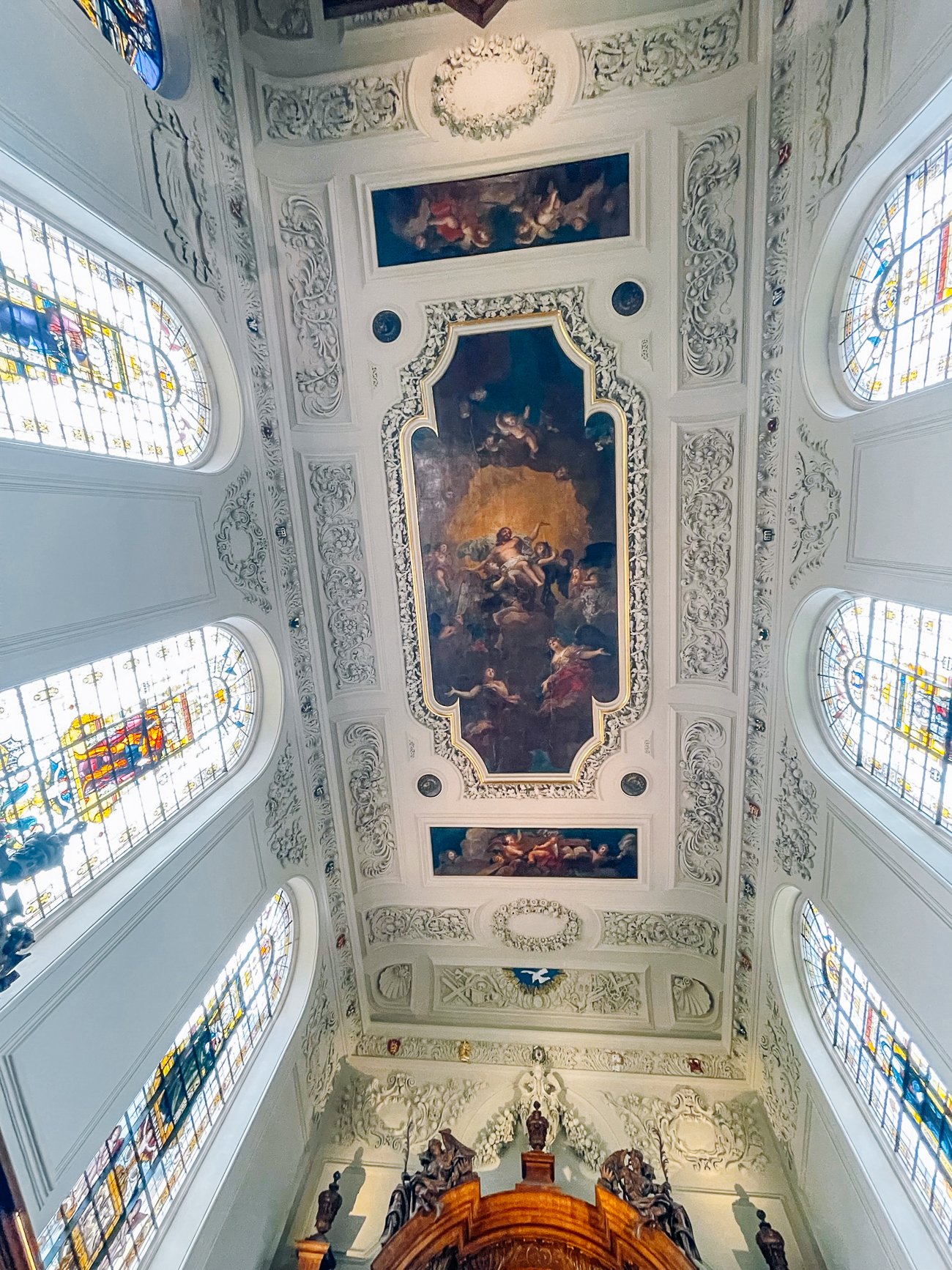
The Divinity School / The Bodleian Library
This is where Kim and I decided to spend the lion’s share of our touristing time during our second day in Oxford. We went on a guided tour through the Divinity School and learned about the fascinating history of building it in the Gothic style.
(For example, at one point, the school had to cut their building budget, so if you look closely, one side is more ornate than the other in spots.)
The Bodleian Library has a strict no pictures policy, but it’s filled with extremely old tomes and is very beautiful and extremely cool.
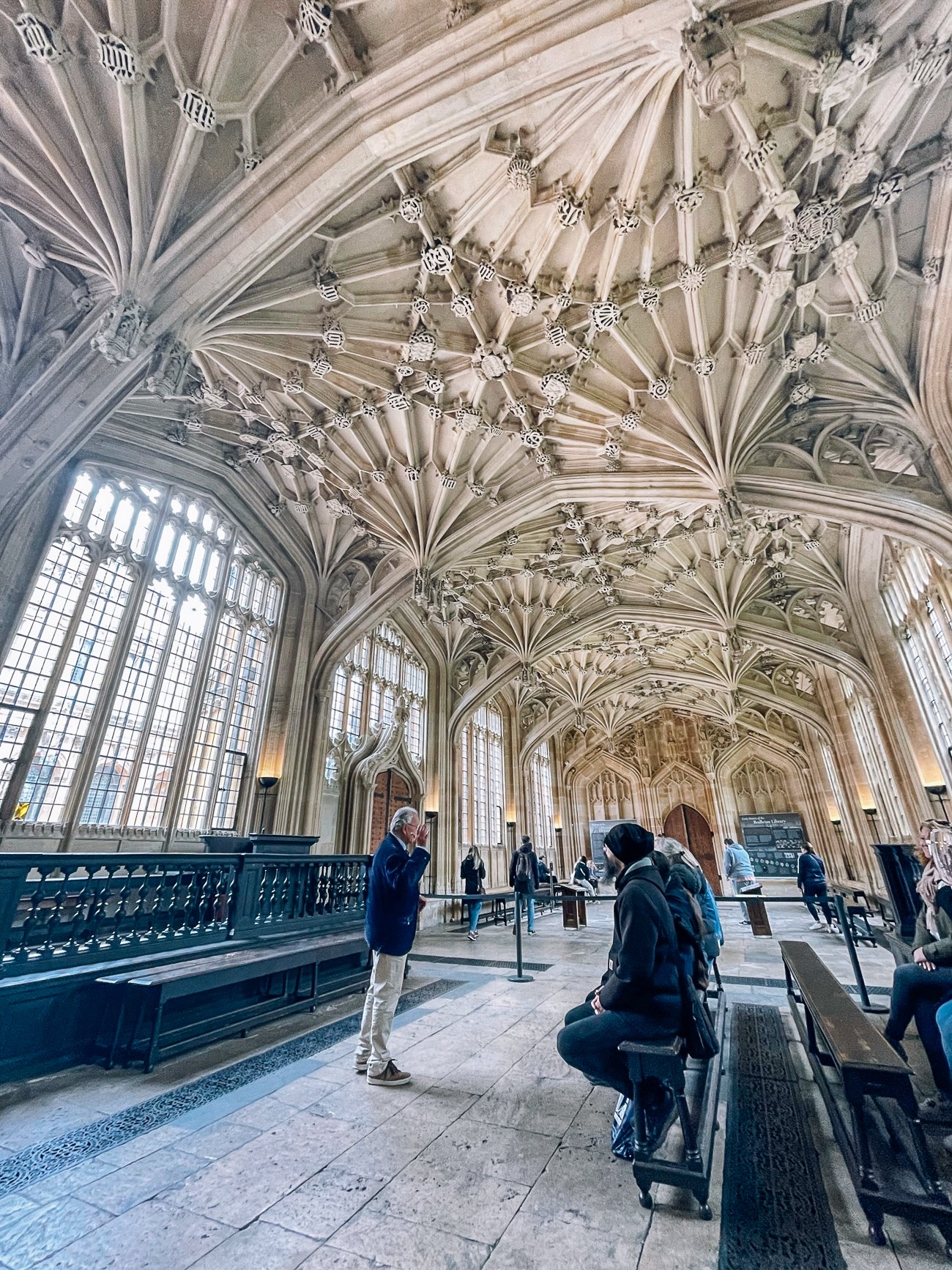
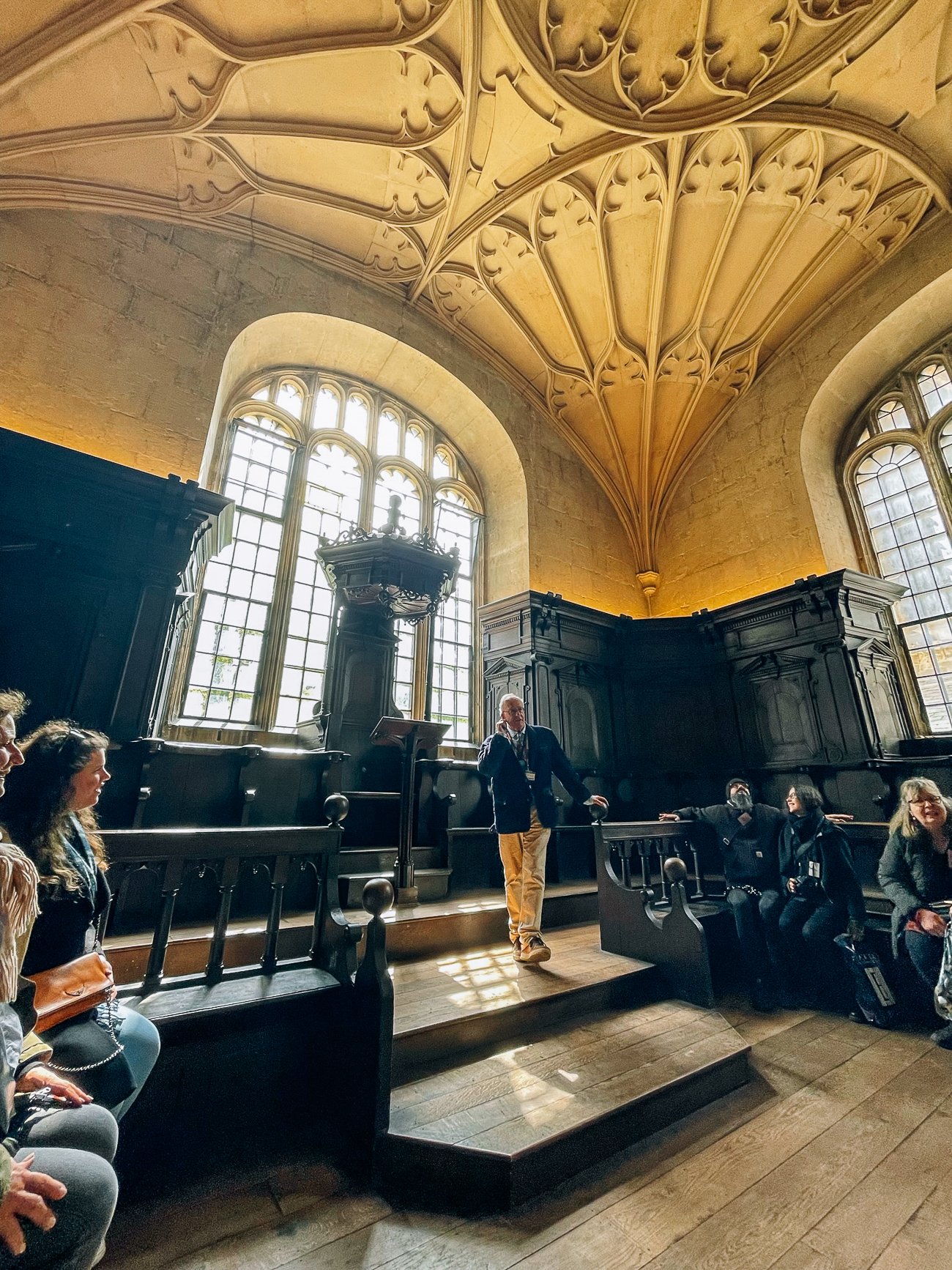
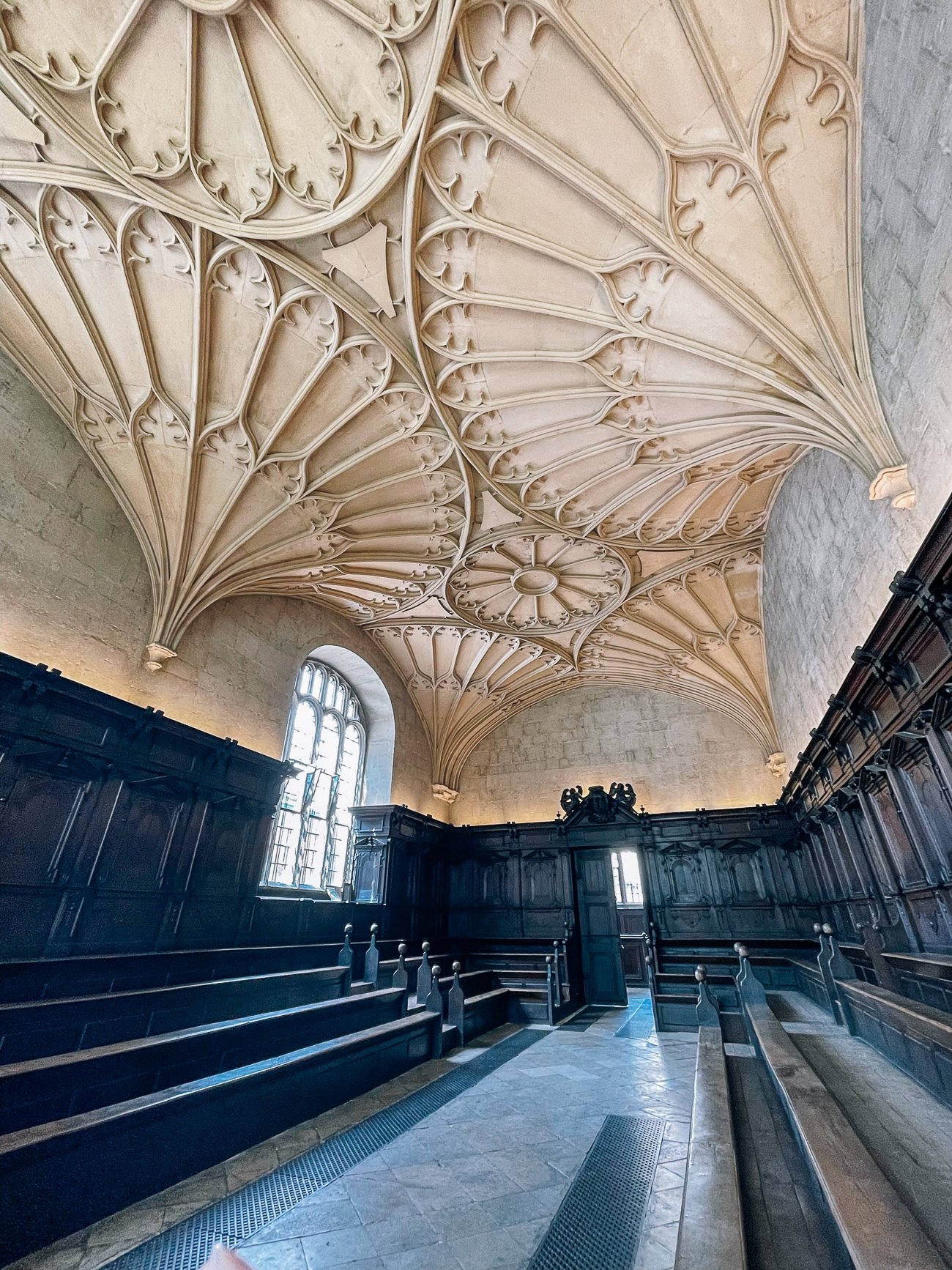
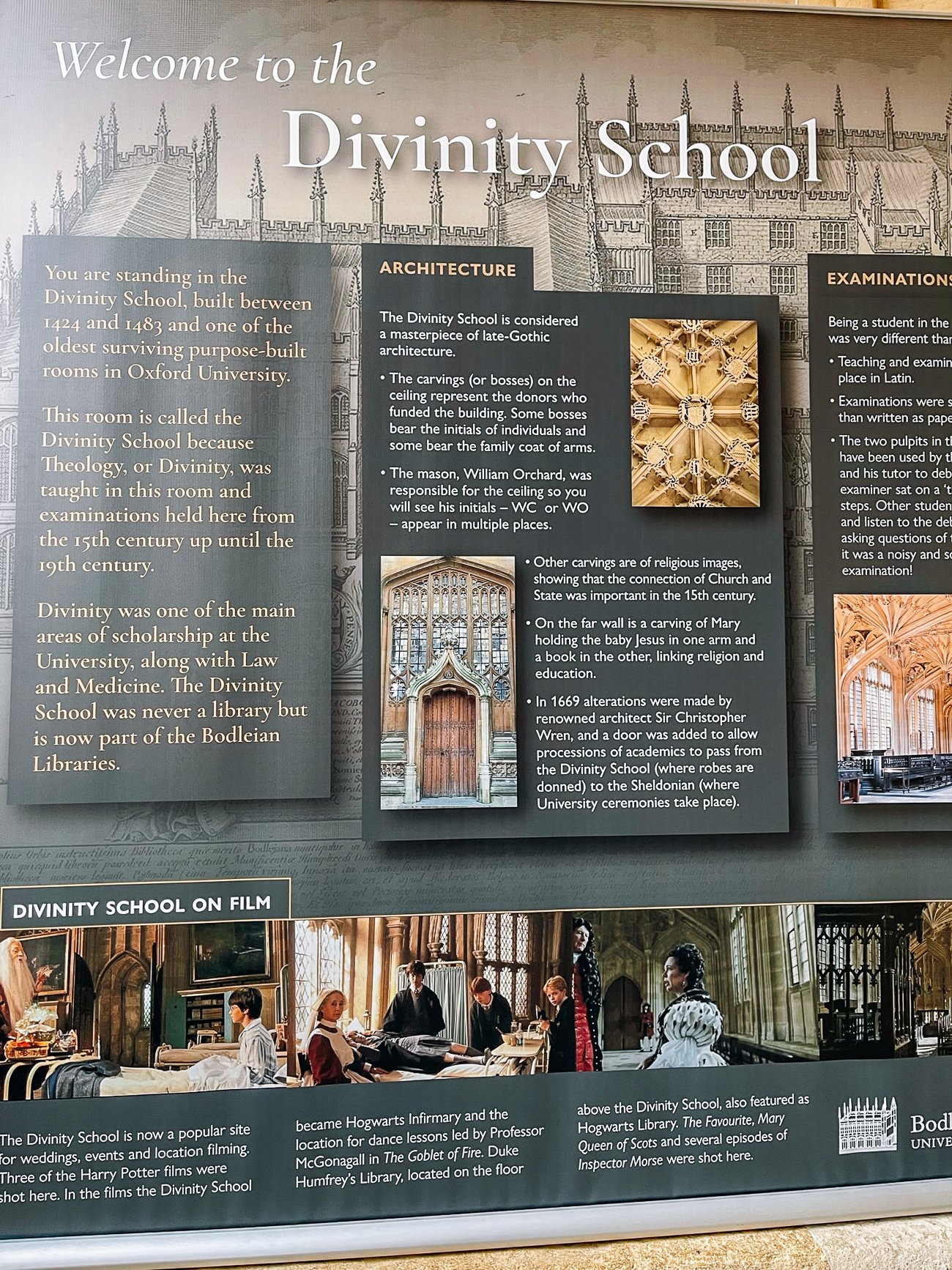
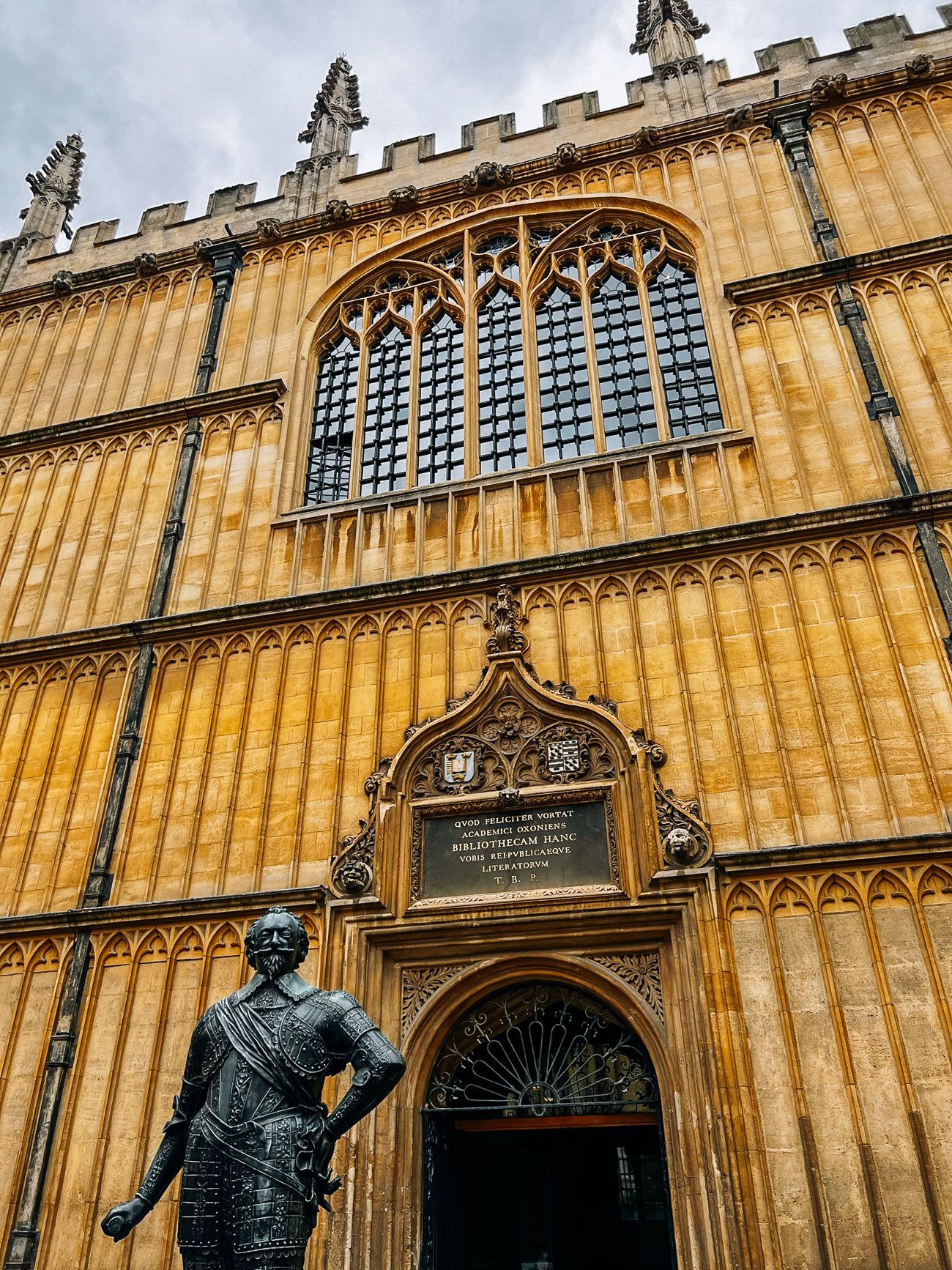
It used to be the private library of Humphrey, Duke of Gloucester (thanks, Internet) and began as only 281 manuscripts in one large room. Now it houses 5 million.
The books are stored off site and a truck trundles to and fro regularly with books at students’ and official “Bodleian readers’” requests.
The Sheldonian Theatre
Right next to the Divinity School and Bodleian Library, the Sheldonian Theatre is the ceremonial heart of the university.
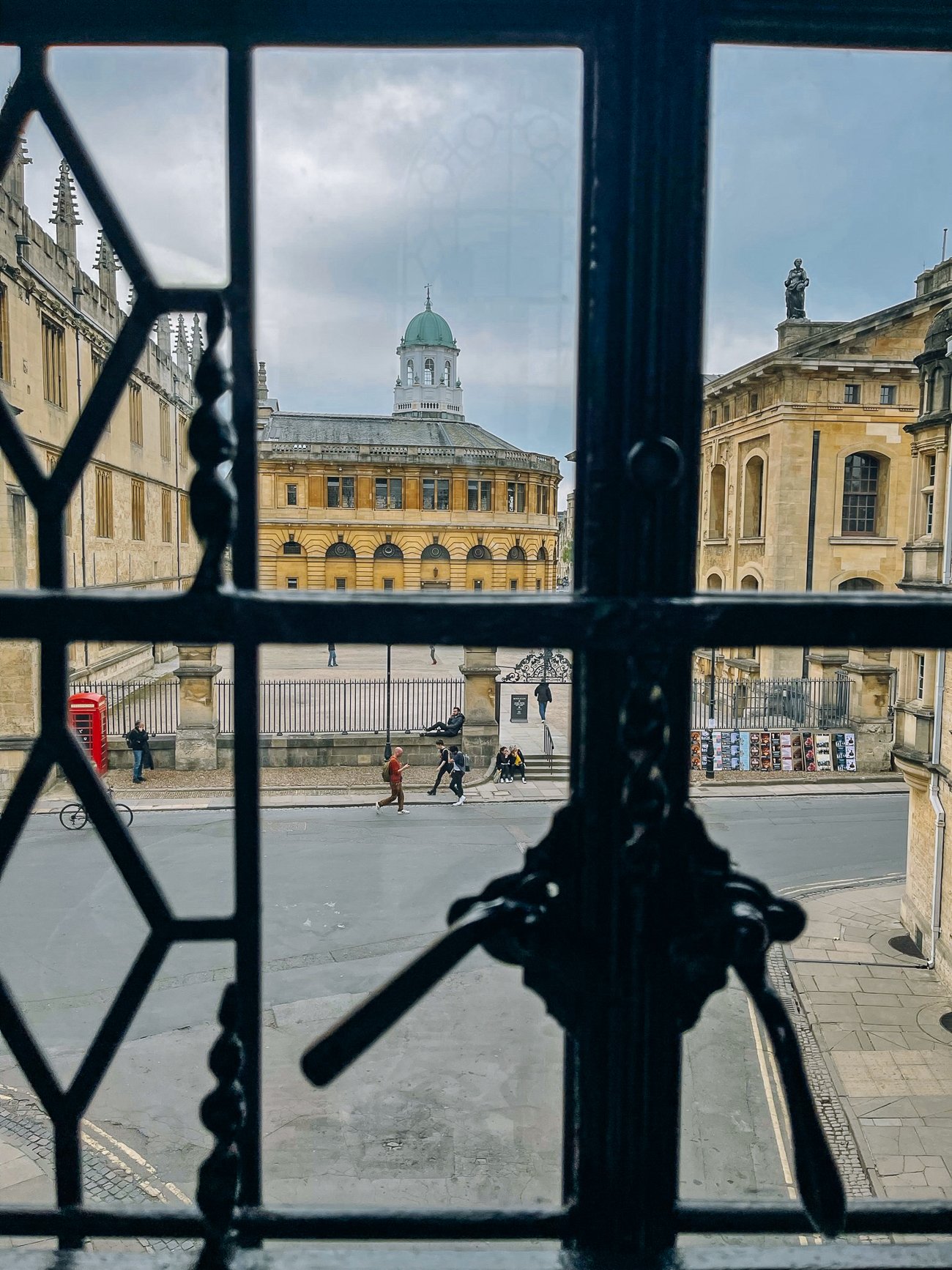
Apparently, you can get a great 360° view of Oxford inside, and there are tickets and guided tours available. They also have regular concerts, talks, and lectures.
“Formal Hall”: a formal college house dinner
College formal halls are where the various colleges host formal dinners for students—usually a three-course meal.
I’m always tickled by niche mealtime experiences like this, so Vicky was kind enough to host us (you can pay to bring in visitors), and I was sure to document it for all of us to be able to gawk at our leisure.
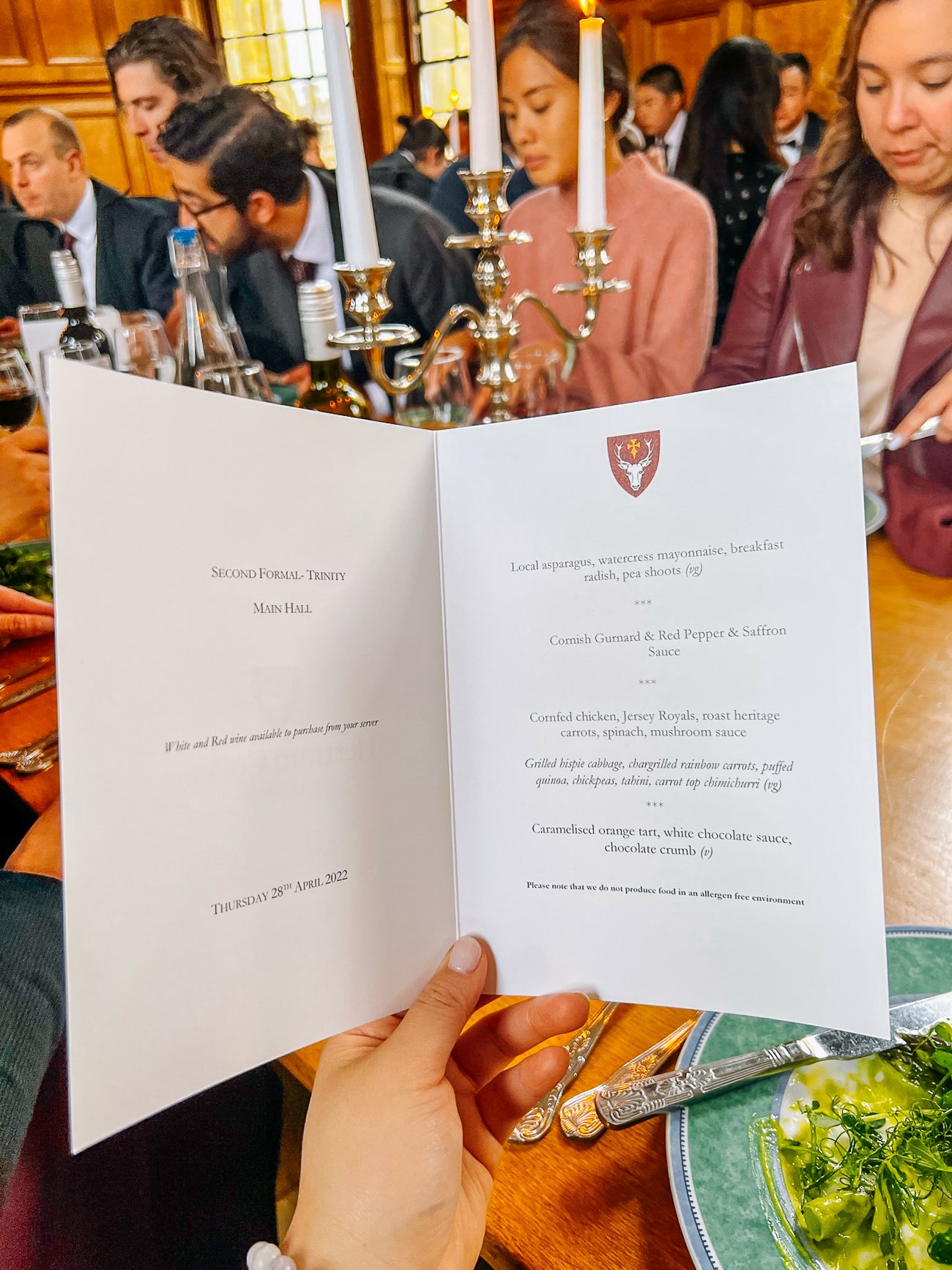
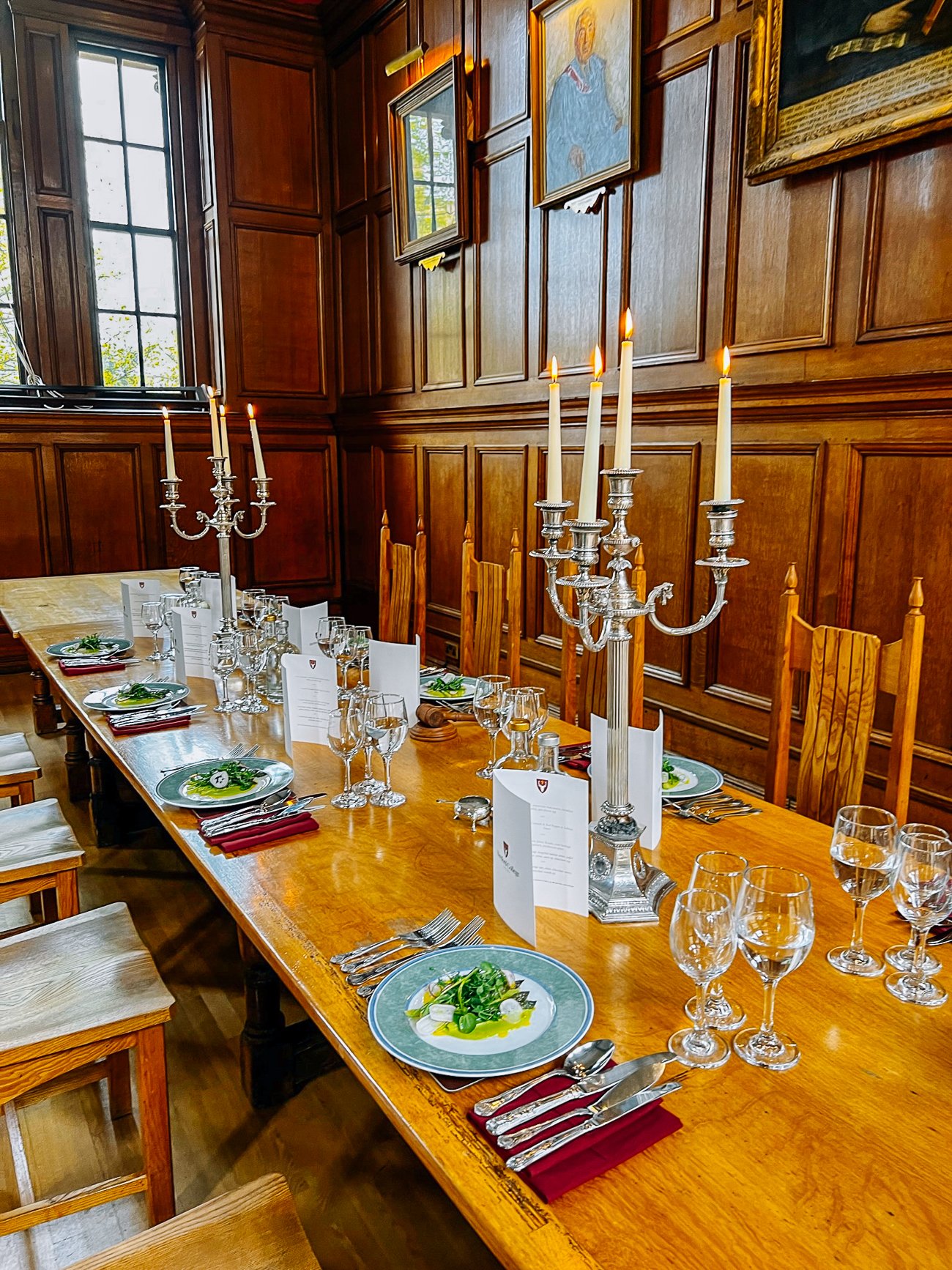
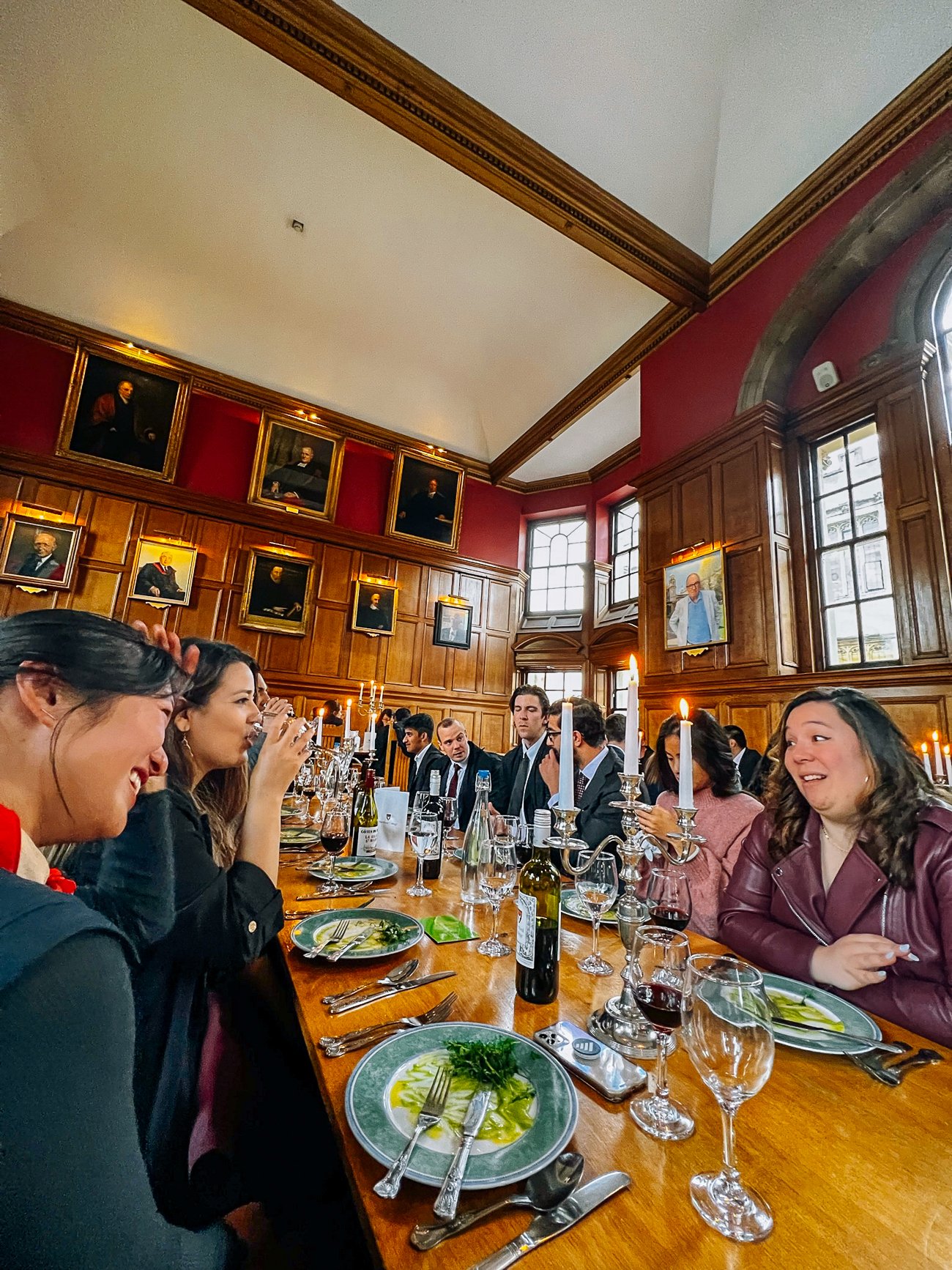
Students of the college usually don’t have to pay, and it’s often the case that students from other colleges will join their friends for formal nights.
Everyone is expected to look polished, but don’t mistake a formal dinner for a legit “ball” (yes they actually call them balls) with floor-length gowns. Students wear their signature black academic gowns (i.e. pseudo Harry Potter robes).
It’s all very official. Students enter first, where they take down any food allergies. There are long wooden tables and benches, a la the Great Hall in Harry Potter (I’m very much the crass American tourist, because I keep comparing everything to Hogwarts lol). There were silver candelabras, lit candles, and no shortage of professors’ portraits lining the hall.
Once everyone was seated, the professors filed in—also wearing their robes and fancy hats. There was some kind of Latin address in which everyone stands, mumbles things, and then sits. Everyone is quite respectful and serious about it, and then the food comes out.
For the first course, there was an extremely delicious asparagus with watercress mayonnaise. The second course was chicken with carrots, potatoes, and a mild mushroom gravy. The third course was a delightful little citrusy tart.
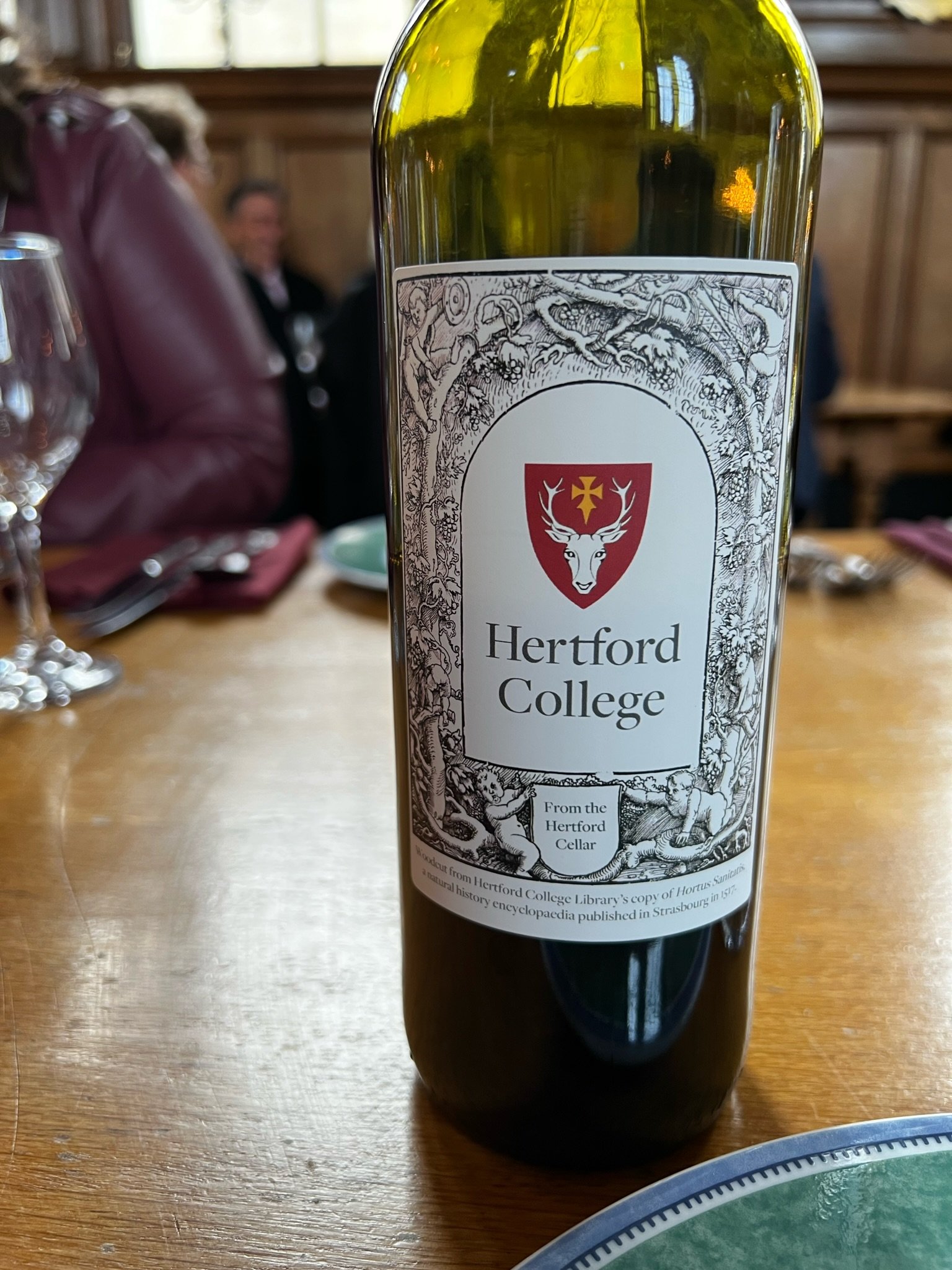
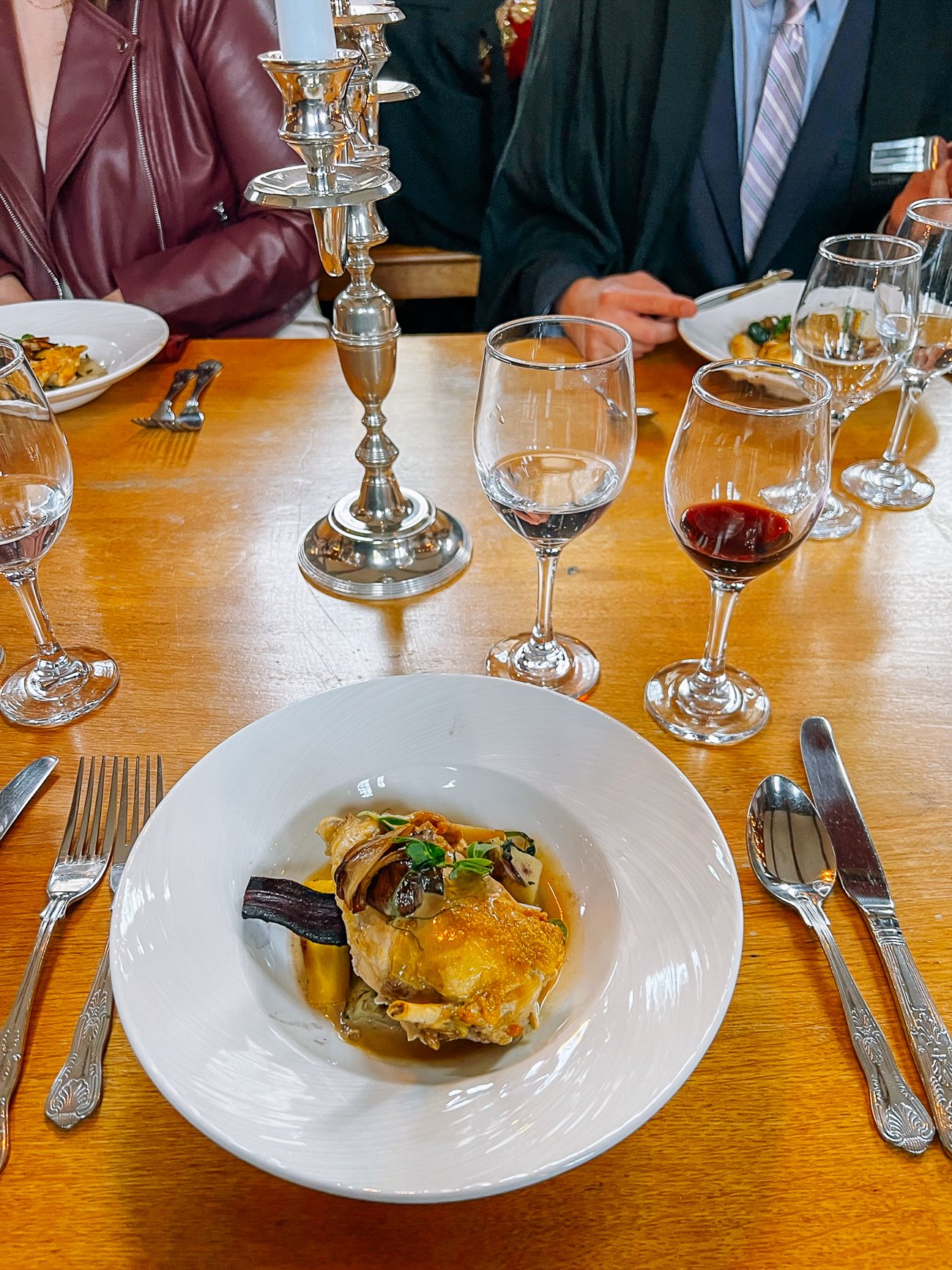
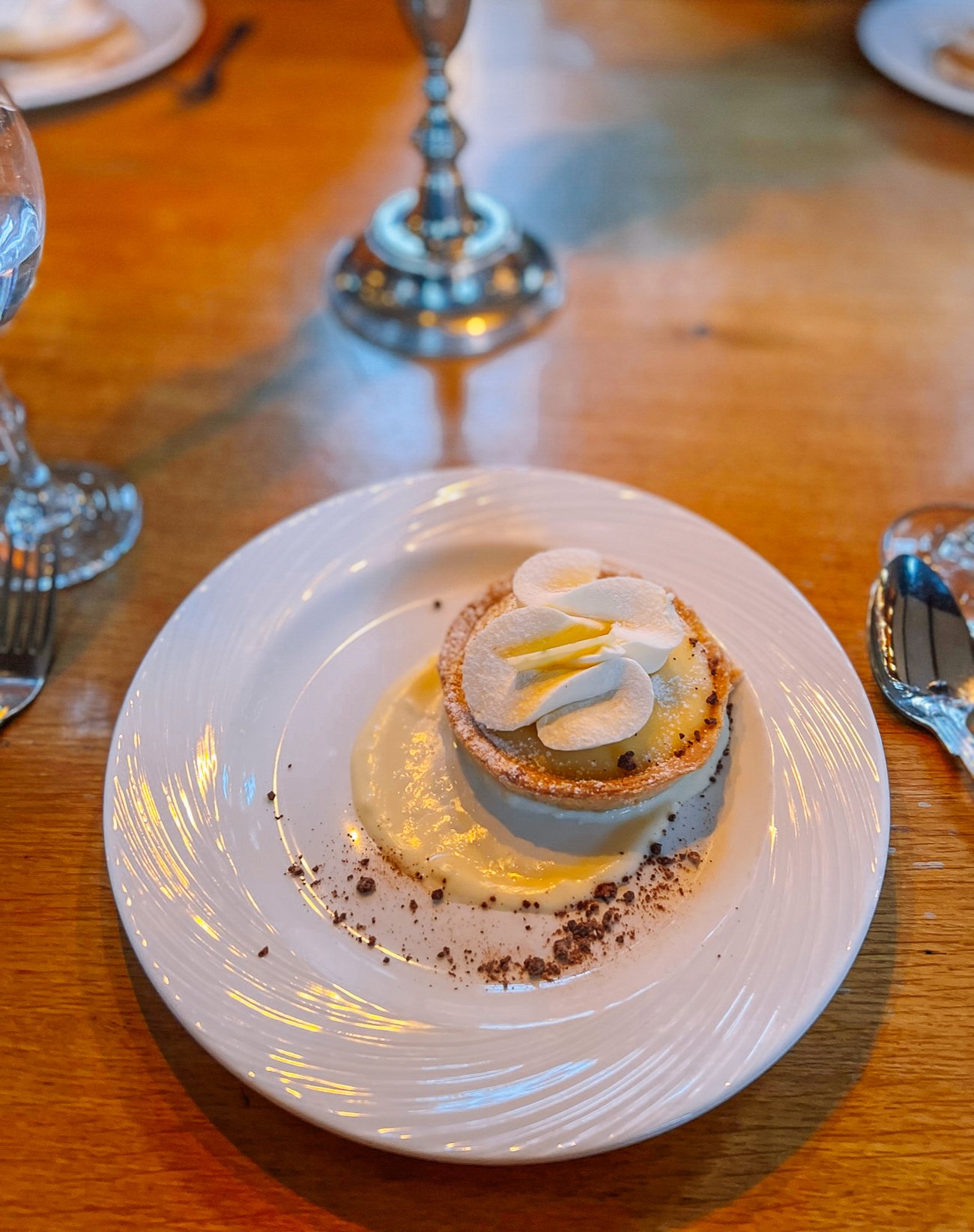

The house college wine was poured liberally and enthusiastically by Vicky and her schoolmates.
Here are some student newspaper musings on “Formal Hall” etiquette I dug up. We definitely took many selfies.
Side note: I was also super impressed by the extremely economical yet delicious and fresh meals we had at the Saïd Business School for like…the equivalent of $12. For Vicky as a student, it was even cheaper, I believe.
It was 1000x better than the vast majority of the dining hall meals I had in college.

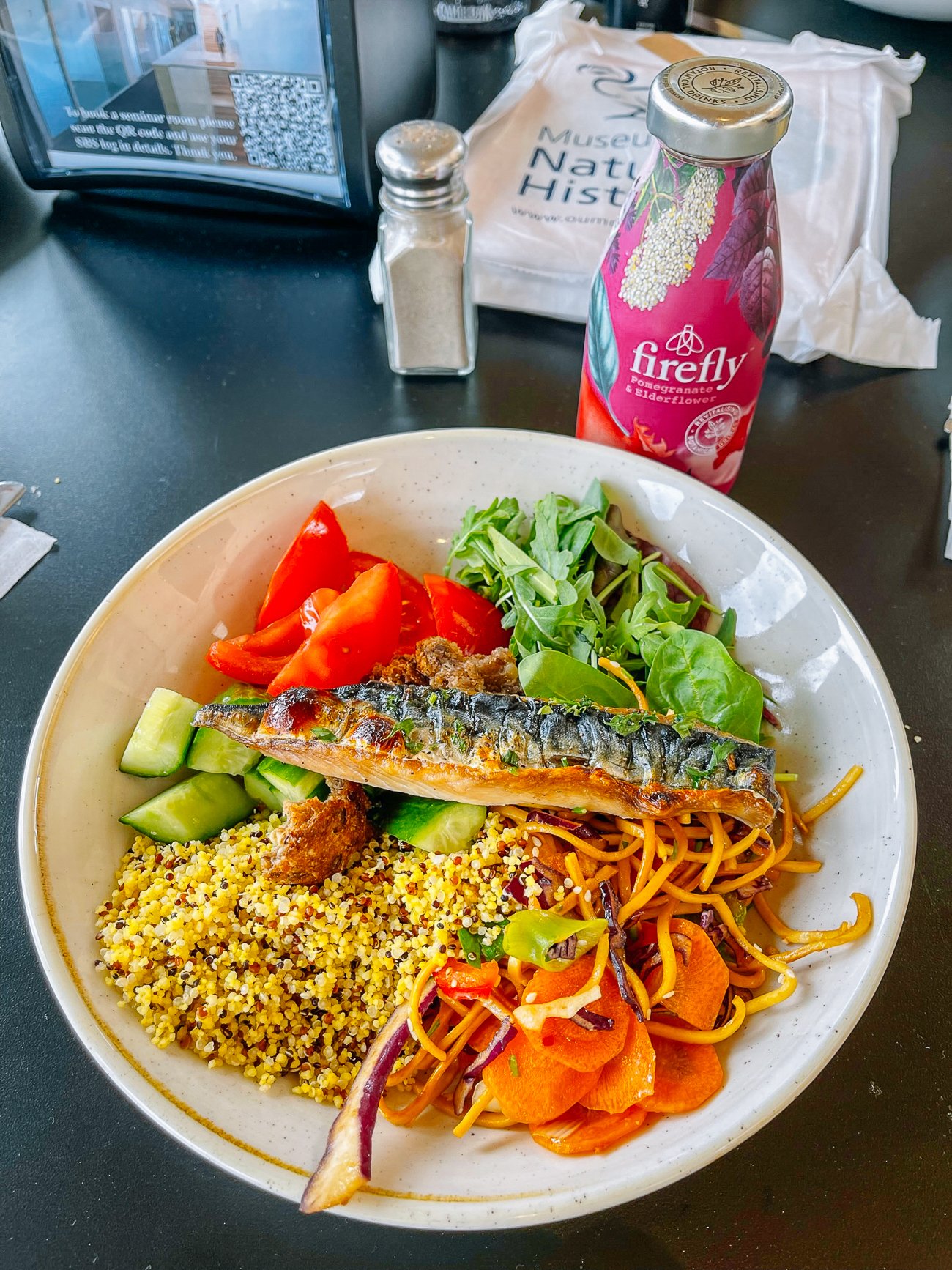
Check out Oxford museums
Technically, the Bodleian Library is also a museum, but the following are more traditional museum experiences you can find in Oxford. Less nickel and diming here—they’re free!
Oxford Natural History Museum
The Oxford Natural History Museum documents the many dioramas, paintings, documents, sketches, and observations that had to be made in order to riddle out the history of nature.
There’s lots of rich information on animal species and evolution, but they also have newer exhibits that examine some of today’s questions and pressing matters of natural history.
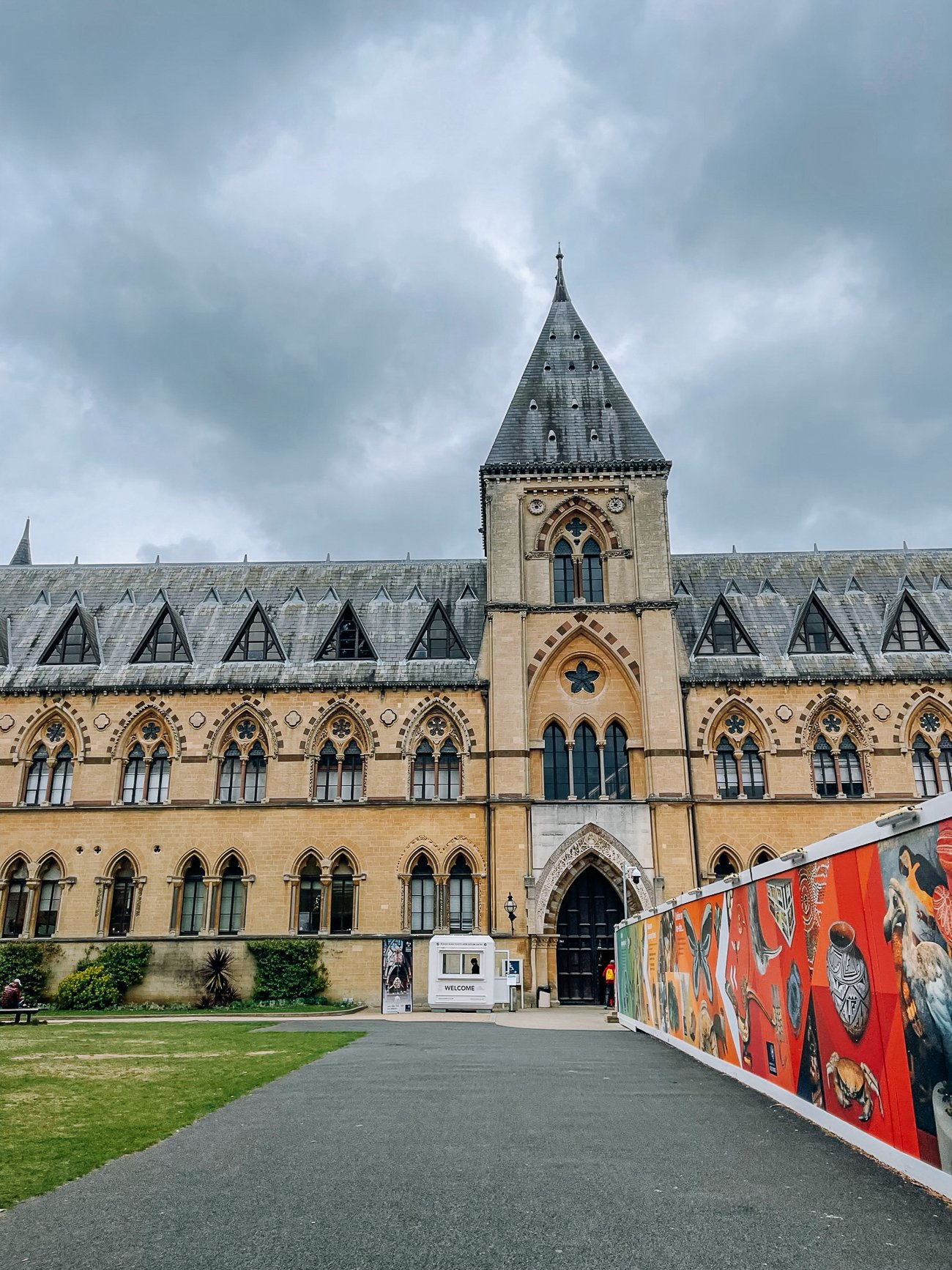
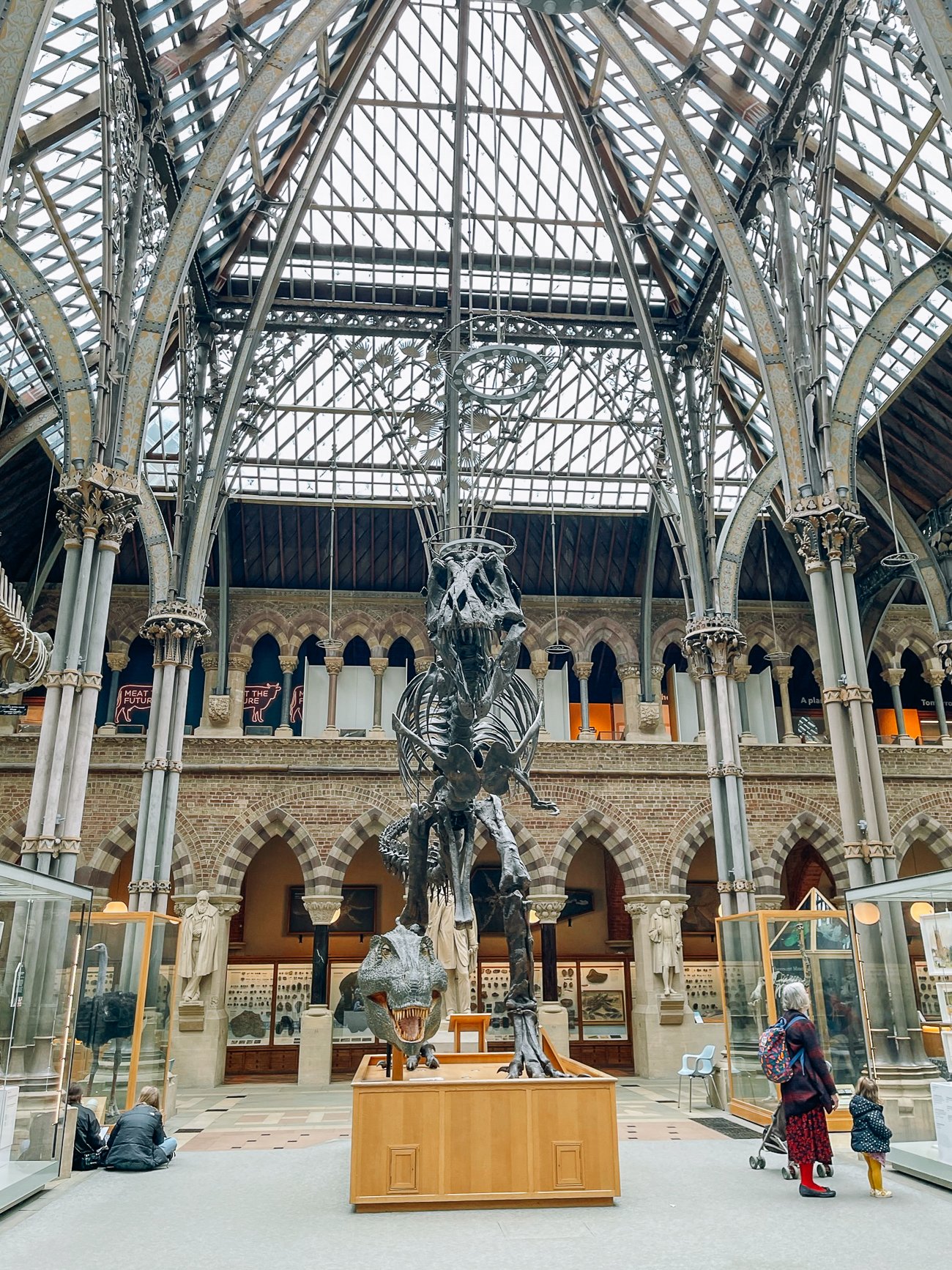
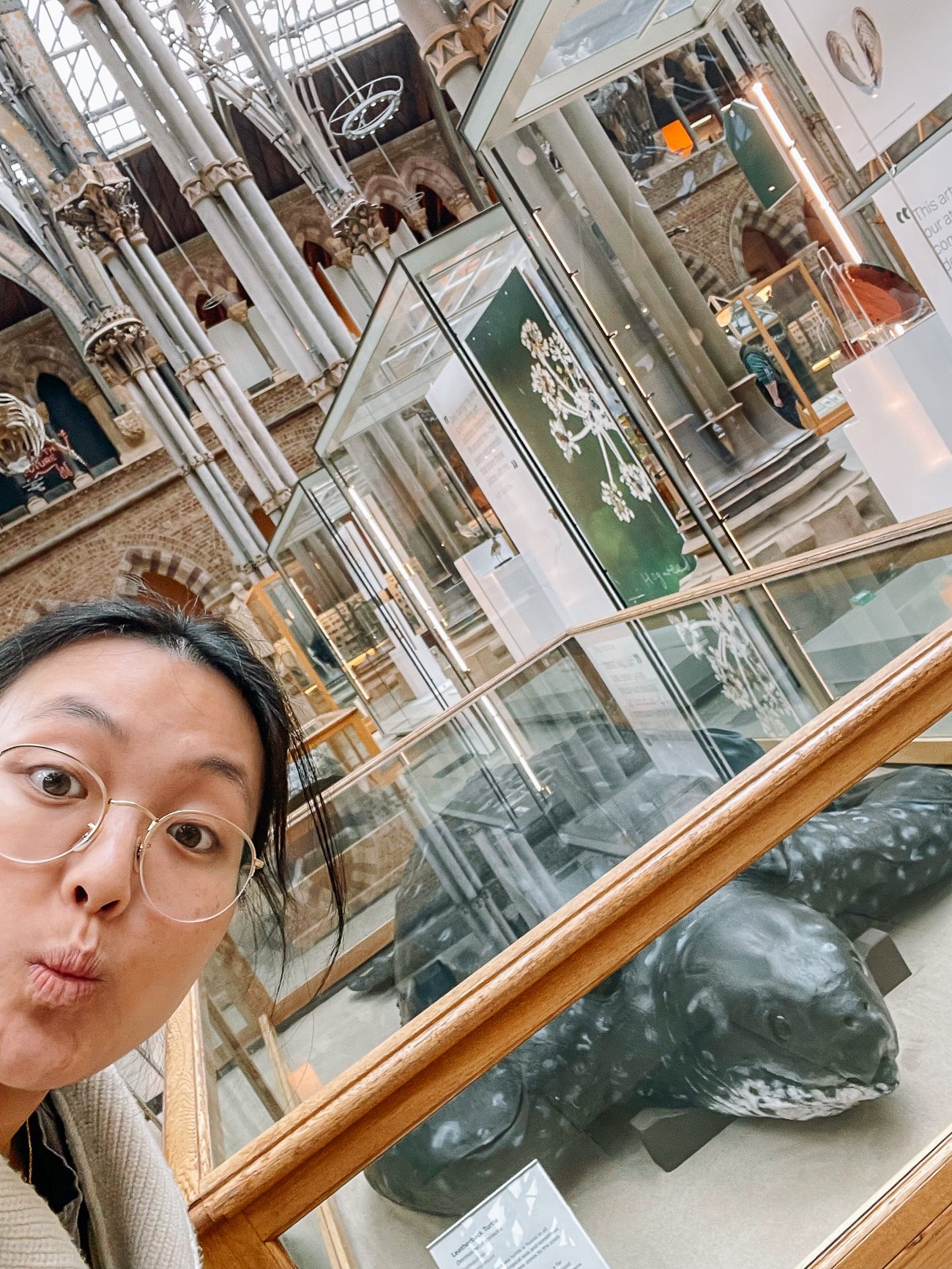

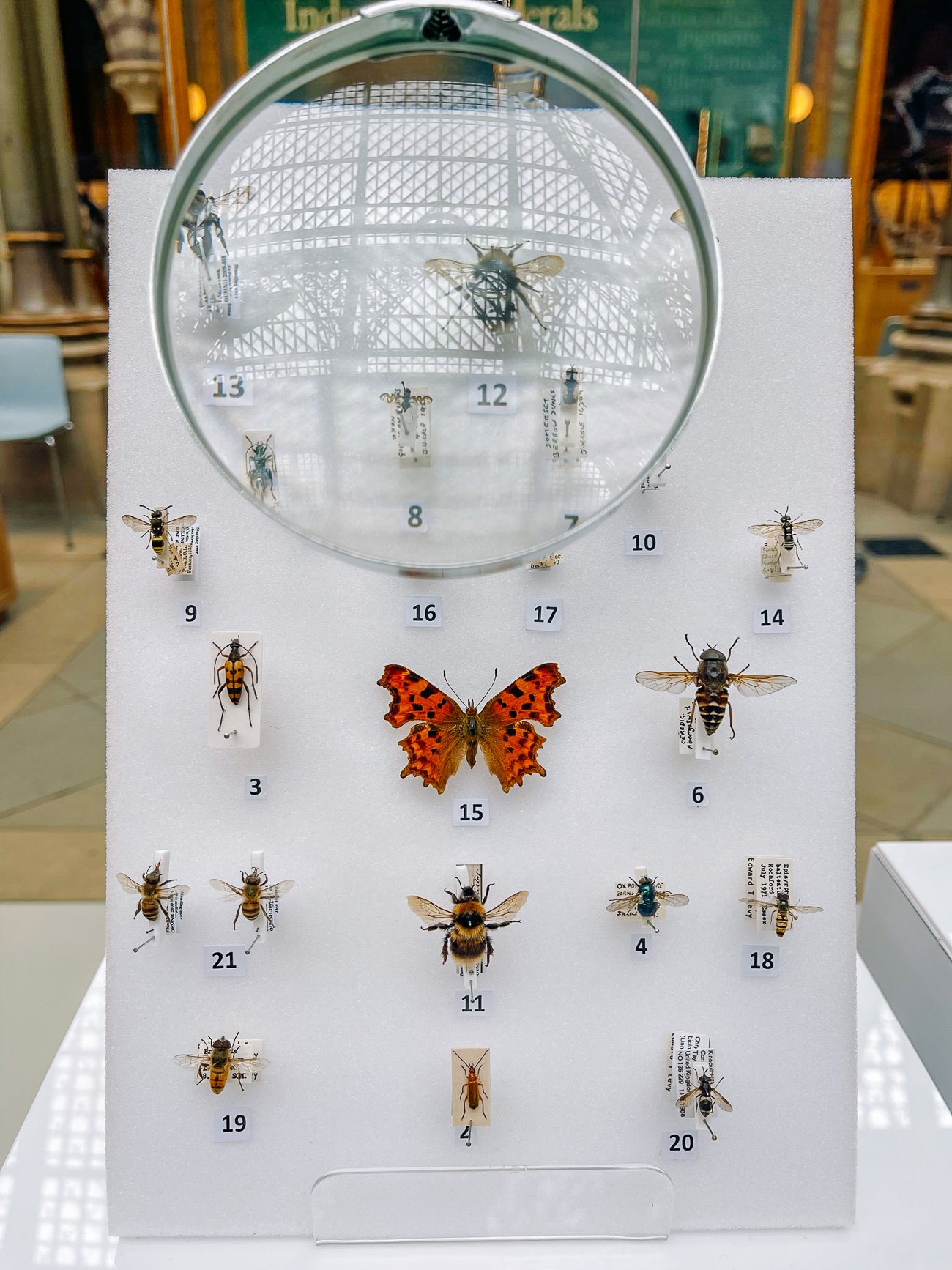
Also—there are So. Many. Bird. Dioramas. I loved it. It might seem a bit macabre, but they were actually quite beautiful, with the bird species represented in approximations of their natural habitats.
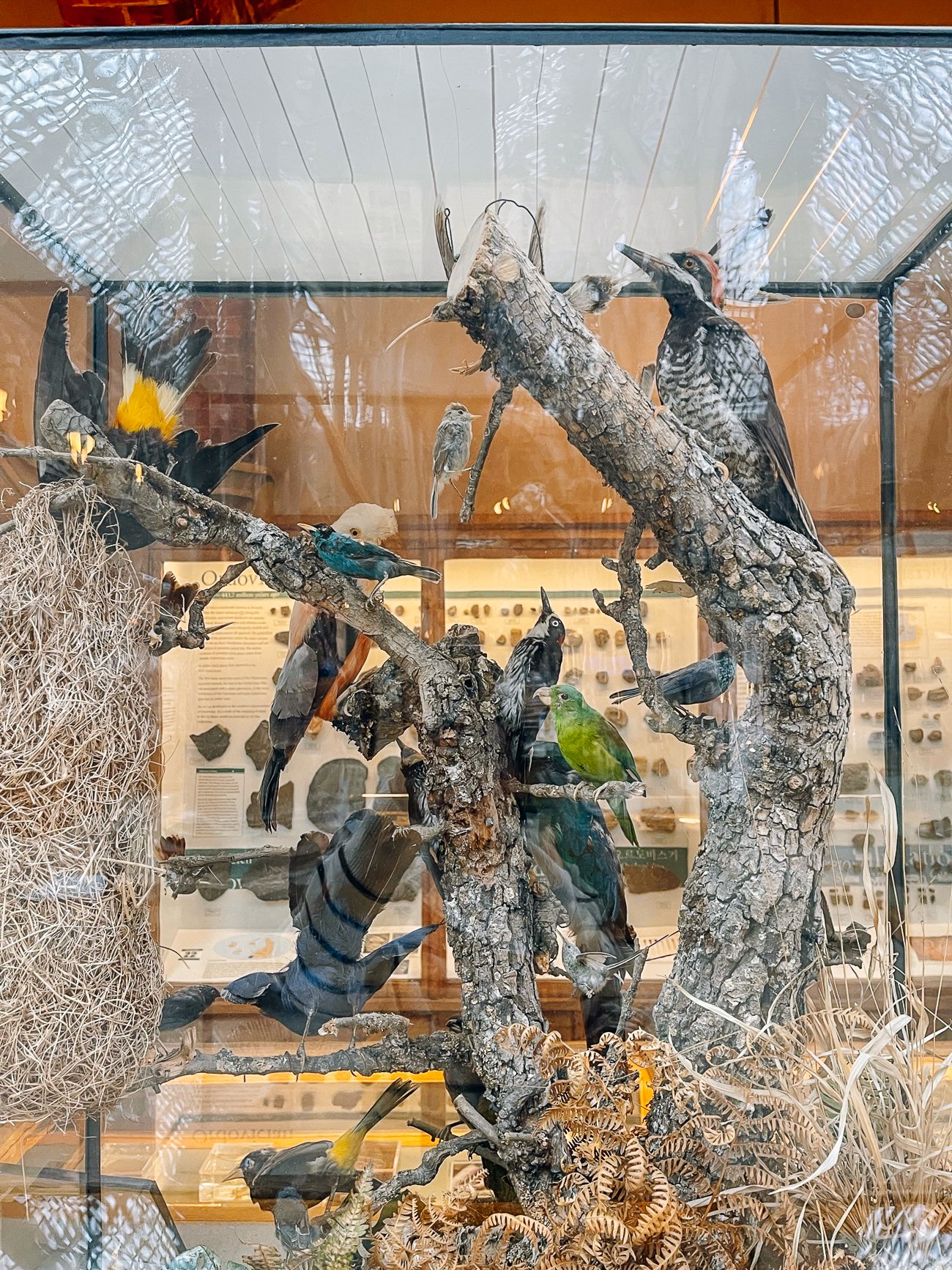
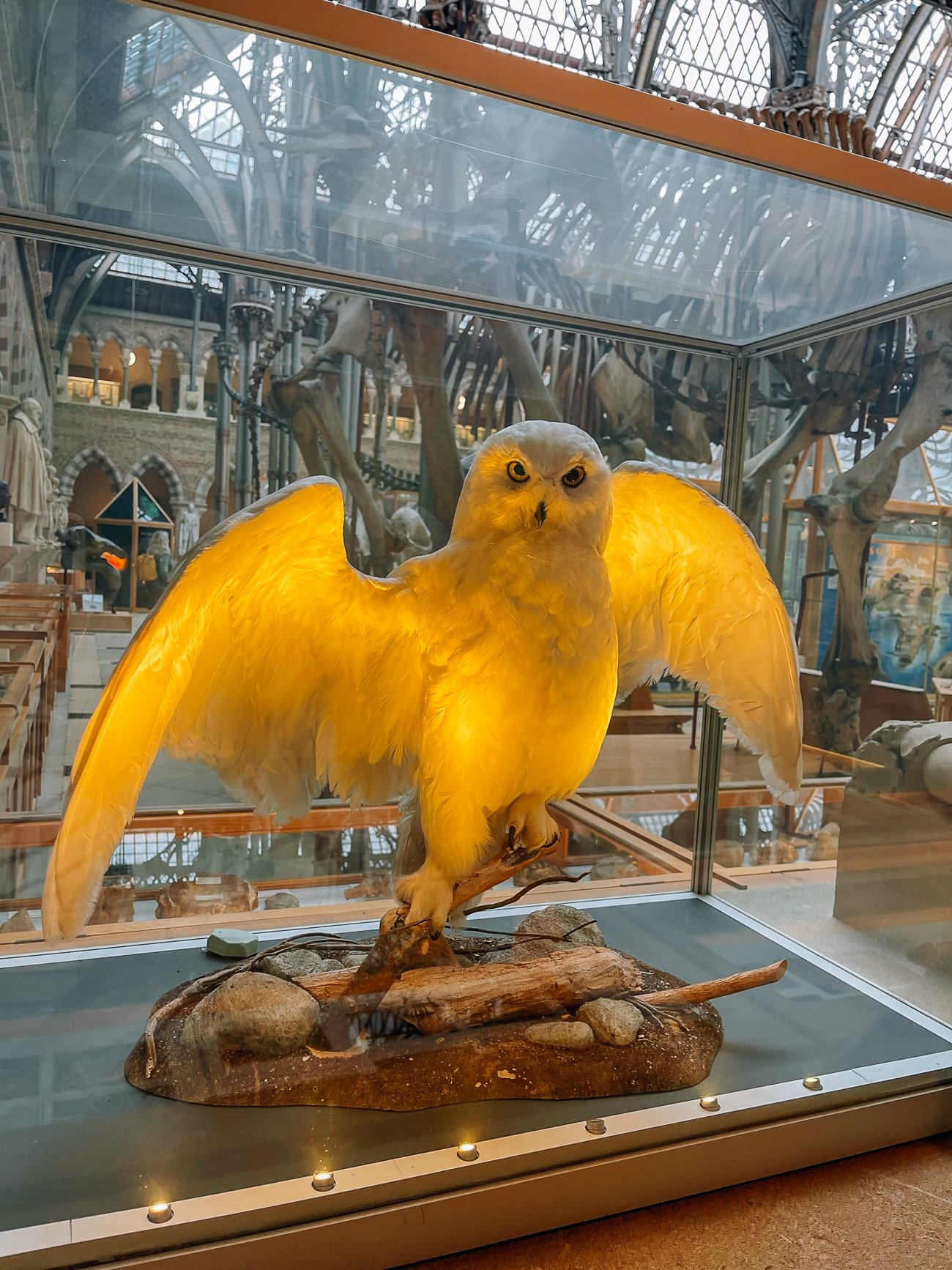
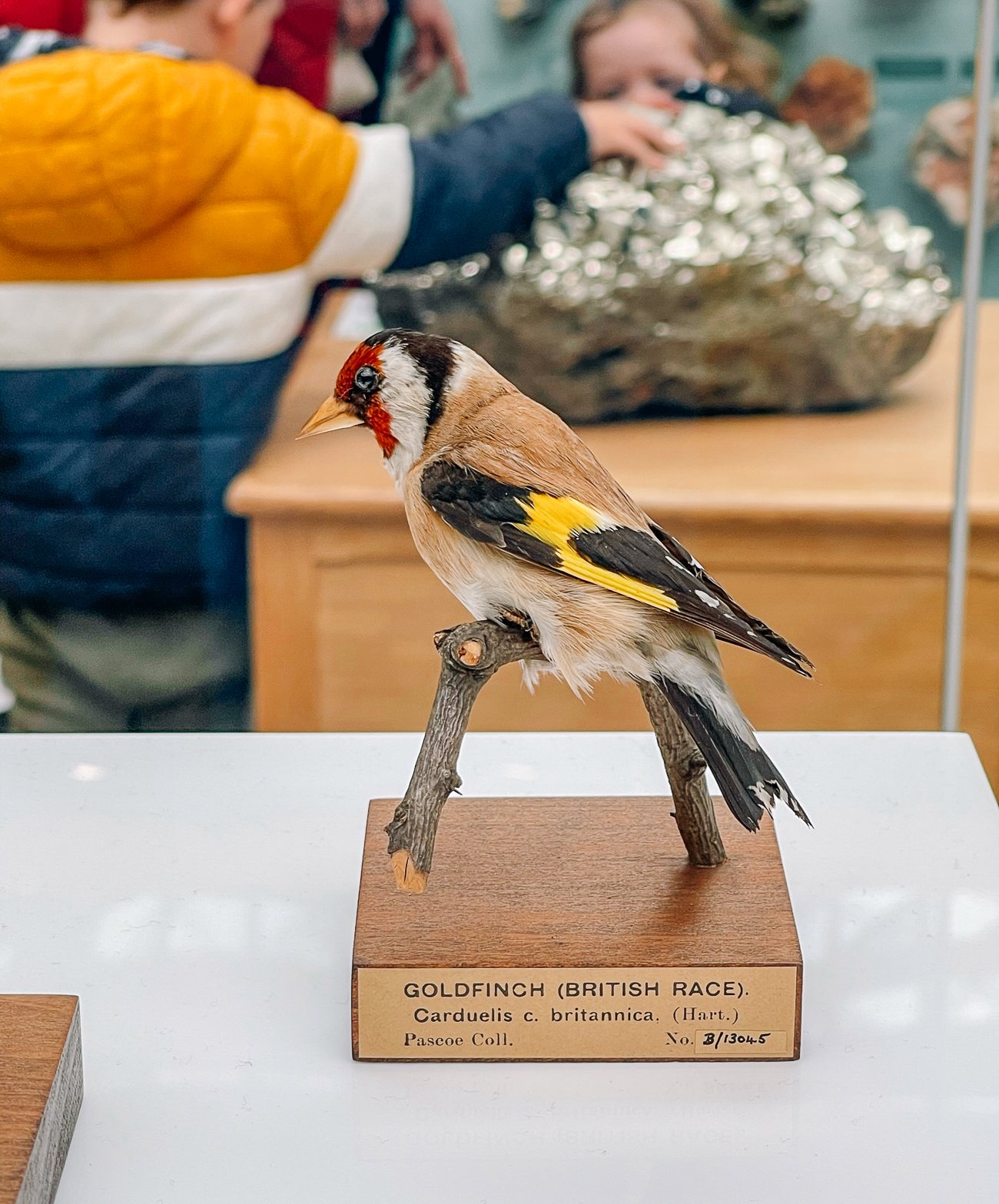
There are also plenty of dioramas of other things. It’s a great spot for little ones, as there are some touch exhibits for tactile kids.
The Pitt Rivers Museum
(It’s inside the Natural History Museum, which Google Maps makes very confusing for pedestrians.)
This is the iconic, yet rather problematic Pitt Rivers Museum, jam-packed to the brim with artifacts from civilizations around the world stretching far back in time.
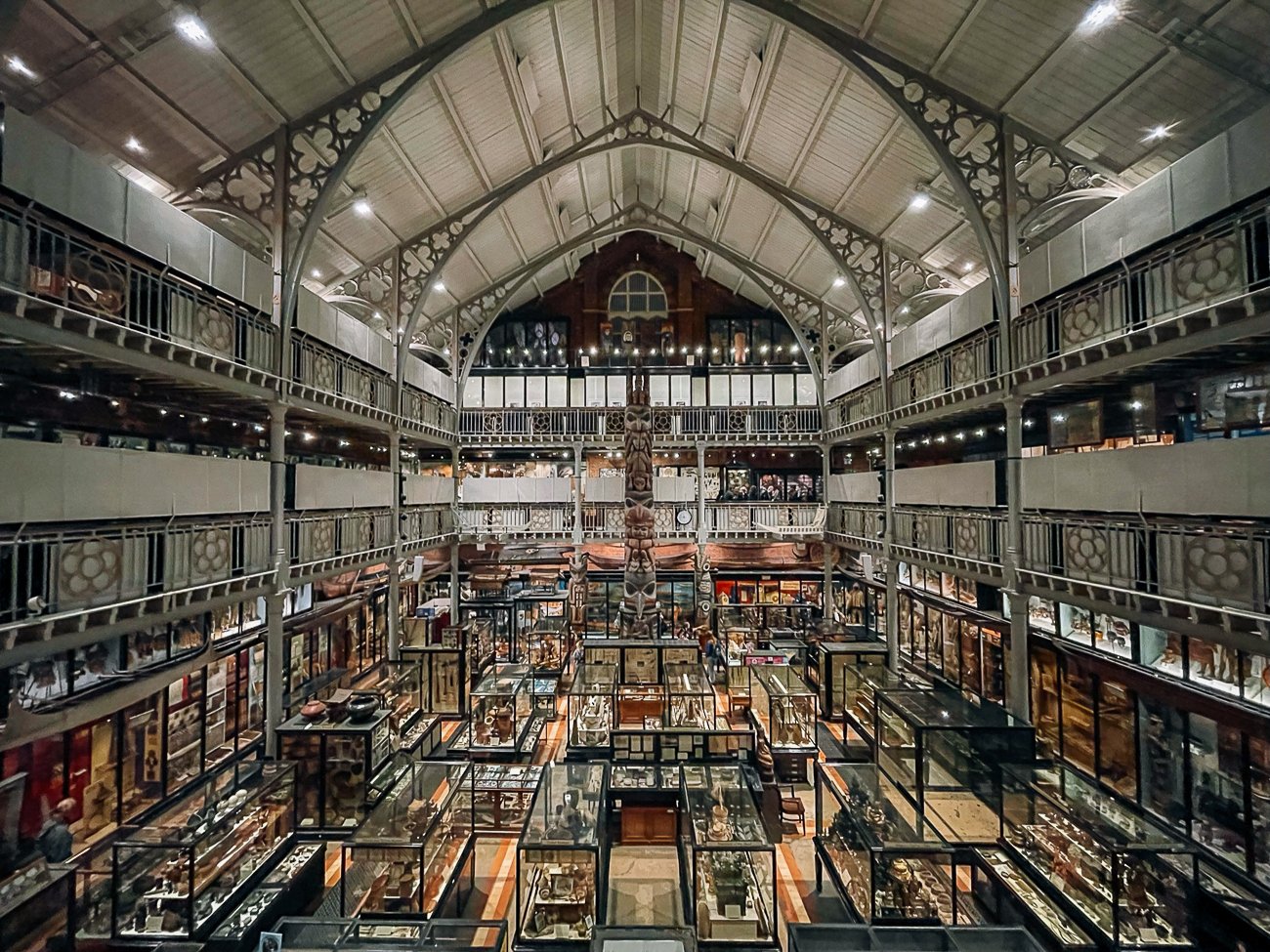
It’s an anthropology nerd’s dream, as there are bits, bobs, trinkets, weapons, clothes, and everyday trappings of life from all sorts of cultures and communities.
I appreciated the fact that at periodic spots, the museum unpacked reasons why certain exhibits and old artifact descriptions were riddled with insensitive thinking and outright offensive content.
If I’m being totally honest, it was a bit creepy. We spent about 45 minutes in there before the density of the artifacts started to weigh on us and we ran for a cup of afternoon tea in the museum cafe.
Afternoon tea at the museum
Remember when I said in the London post that some of our best afternoon teas were literally just an afternoon cuppa and whatever else we could find?
This was what I was thinking of. A simply superb egg salad and watercress sandwich, with coarsely chopped egg (as is often the case in Europe and the UK—the eggs are truly a notch above the average eggs in the U.S.), just a touch of mayonnaise, and arugula.
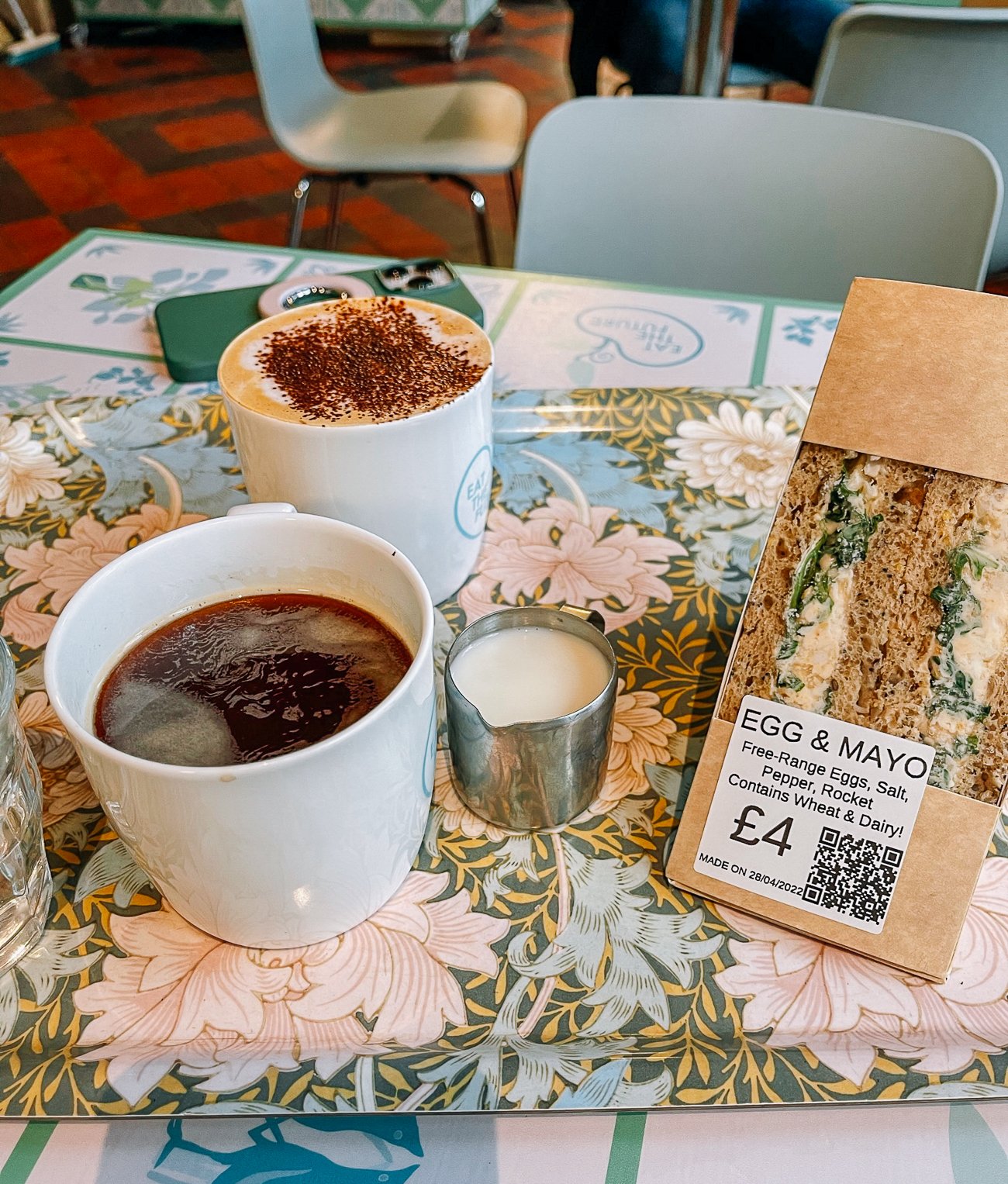
The museum cafe had delicious-looking food, with “planet-friendly” options as a way to examine our reliance on meat.
The Ashmolean Museum
Sadly, the Ashmolean Museum was our quickest stop. It’s a bit of a shame, as there were plenty of beautiful paintings, objects, instruments, and furniture pieces on display.
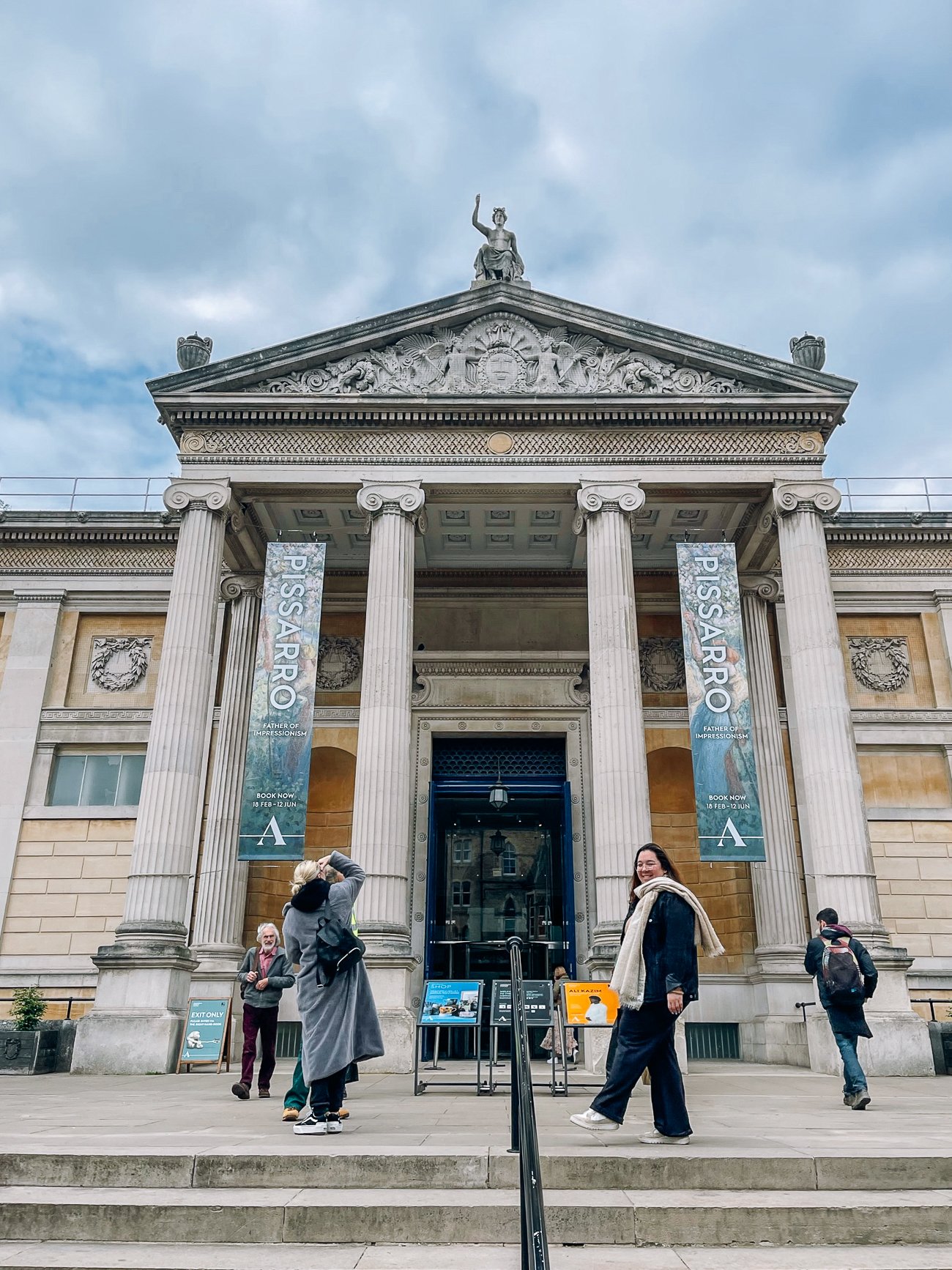
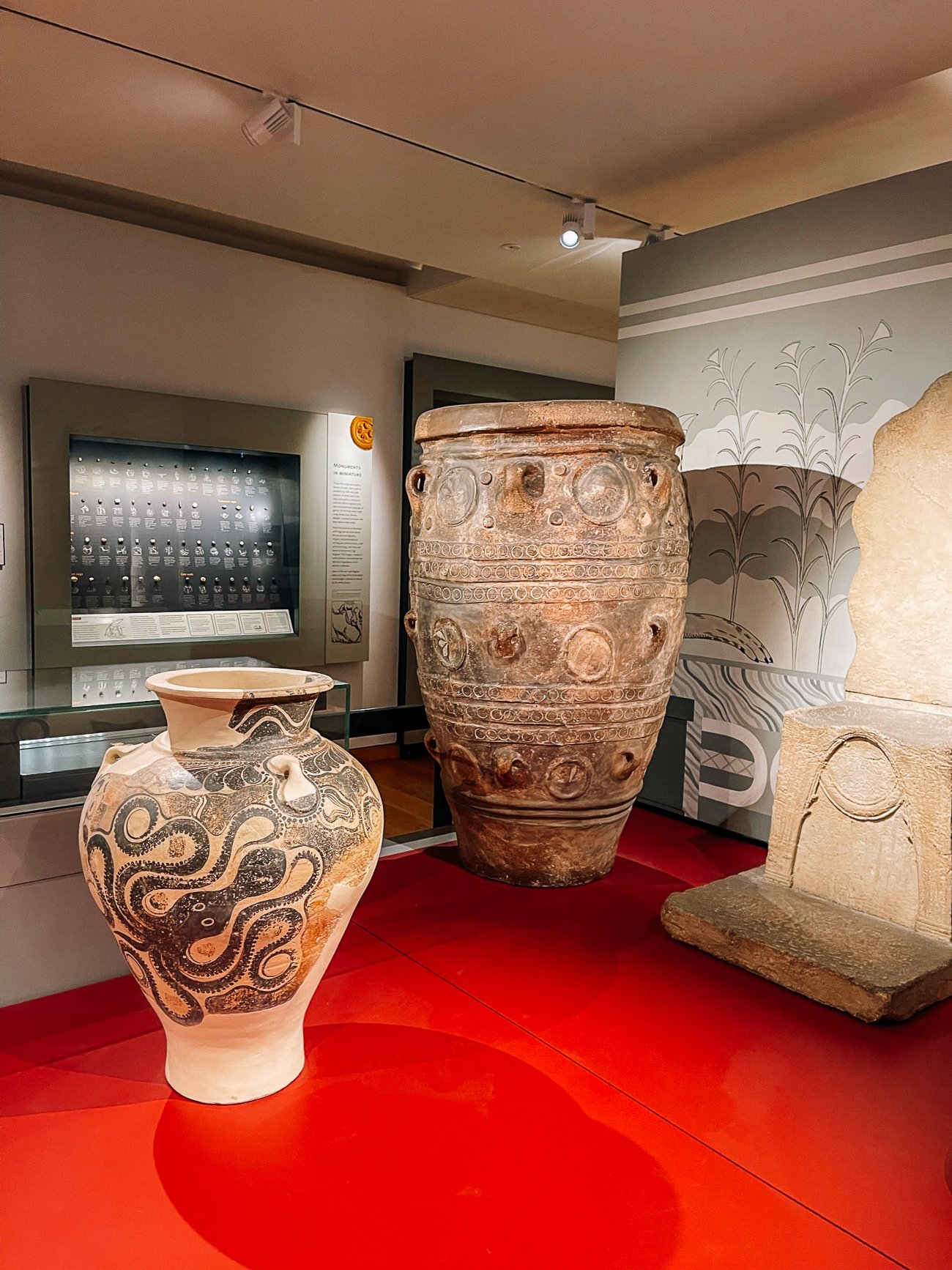
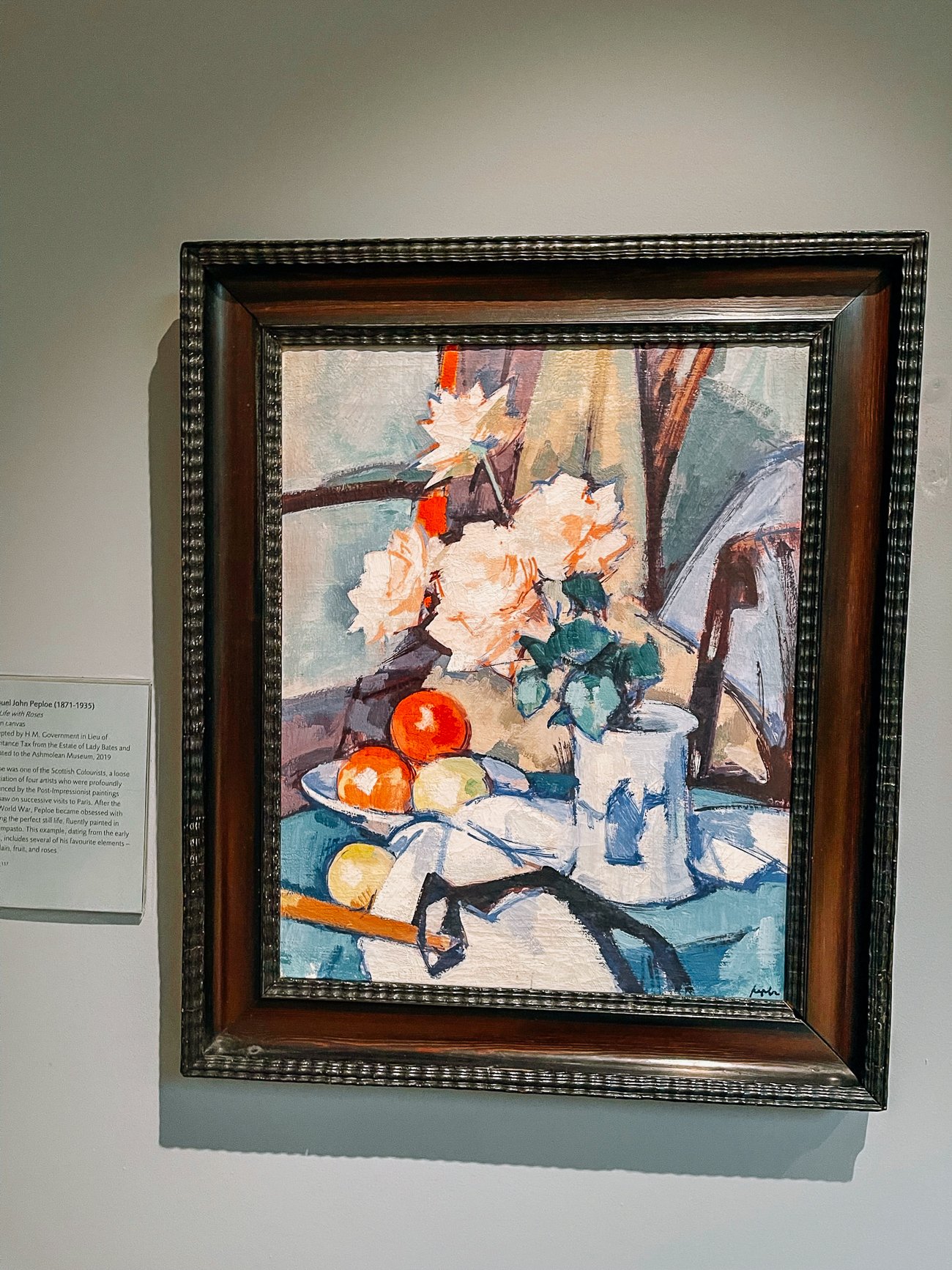
a Scottish painter
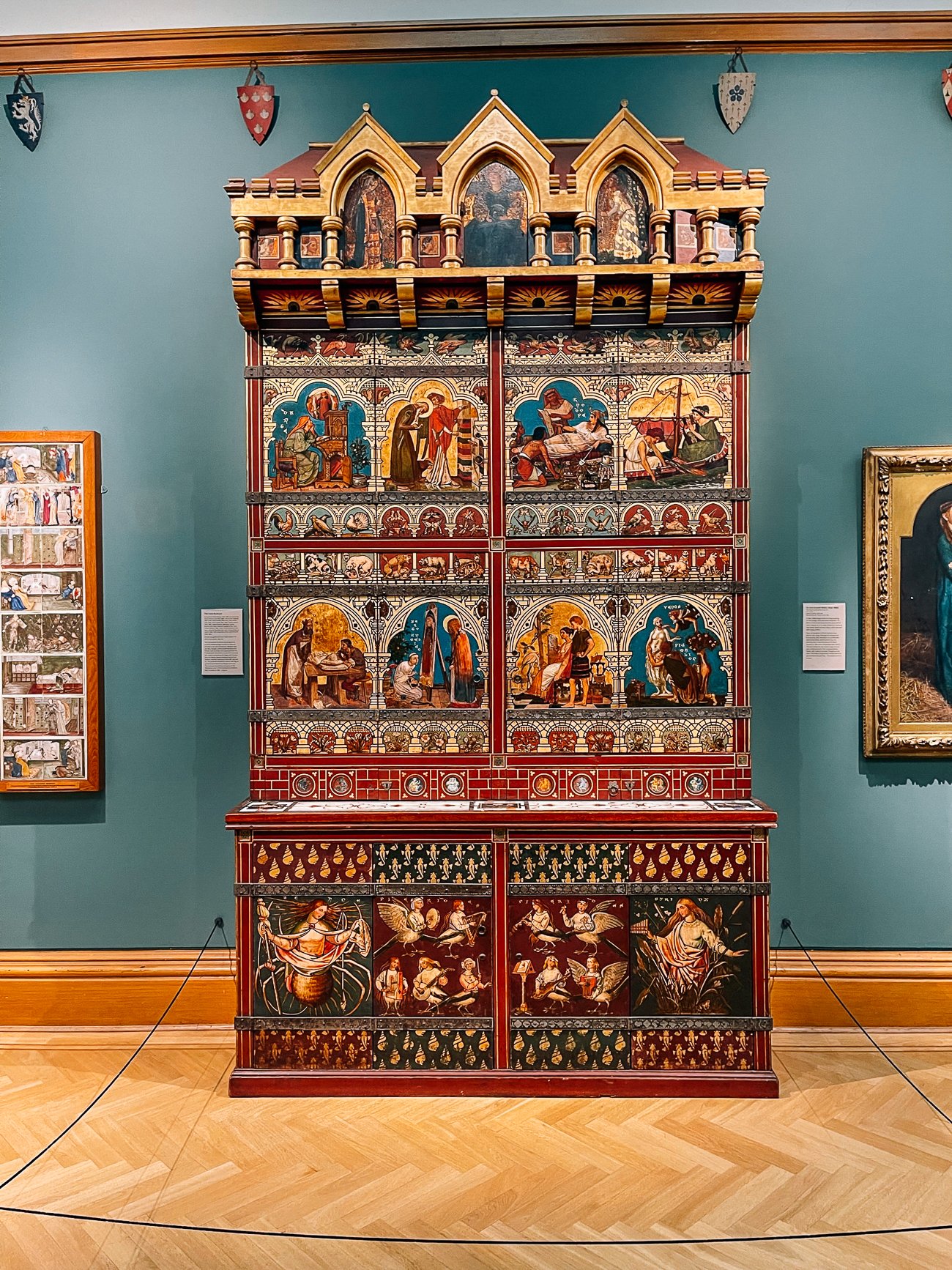
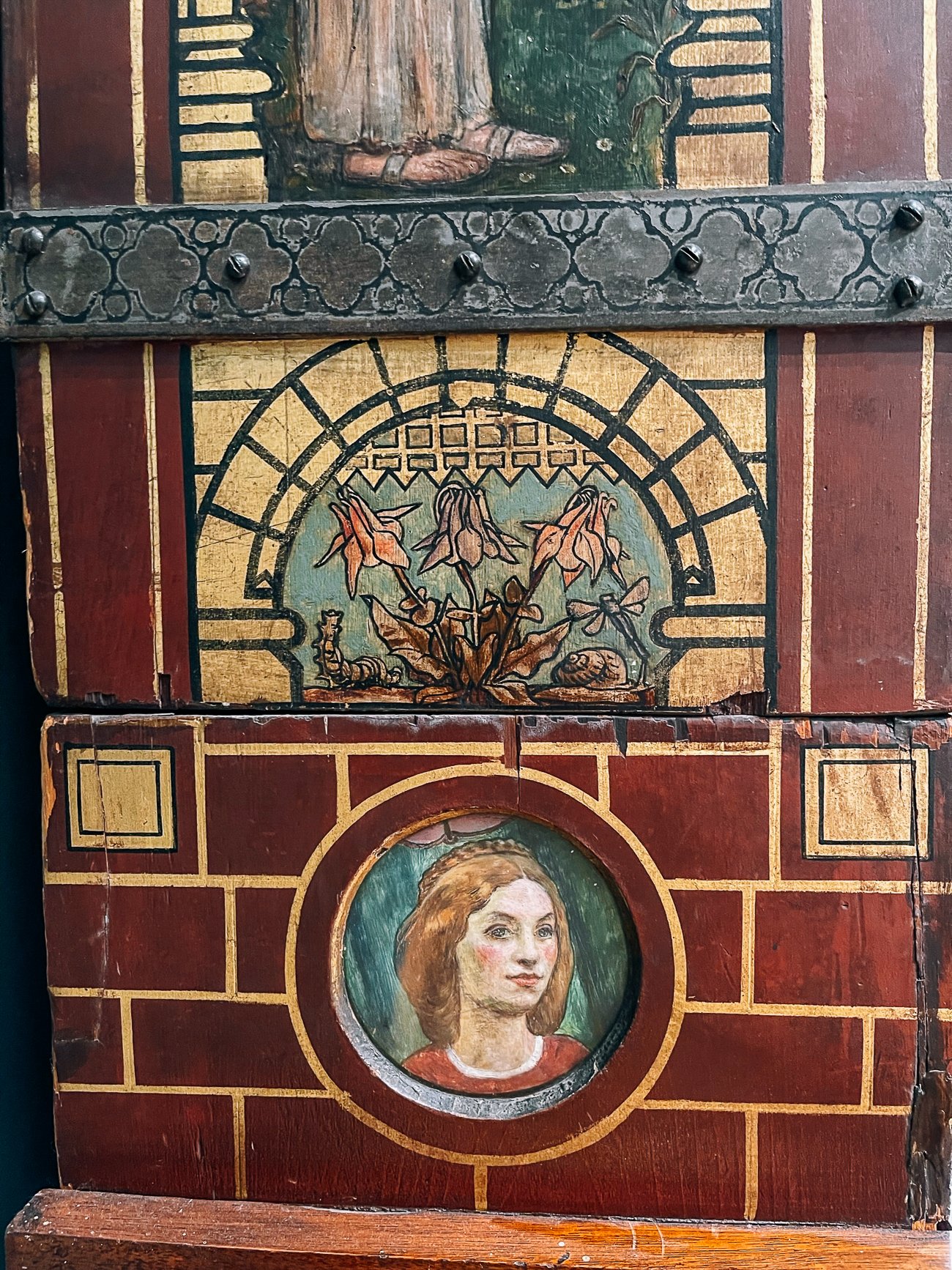
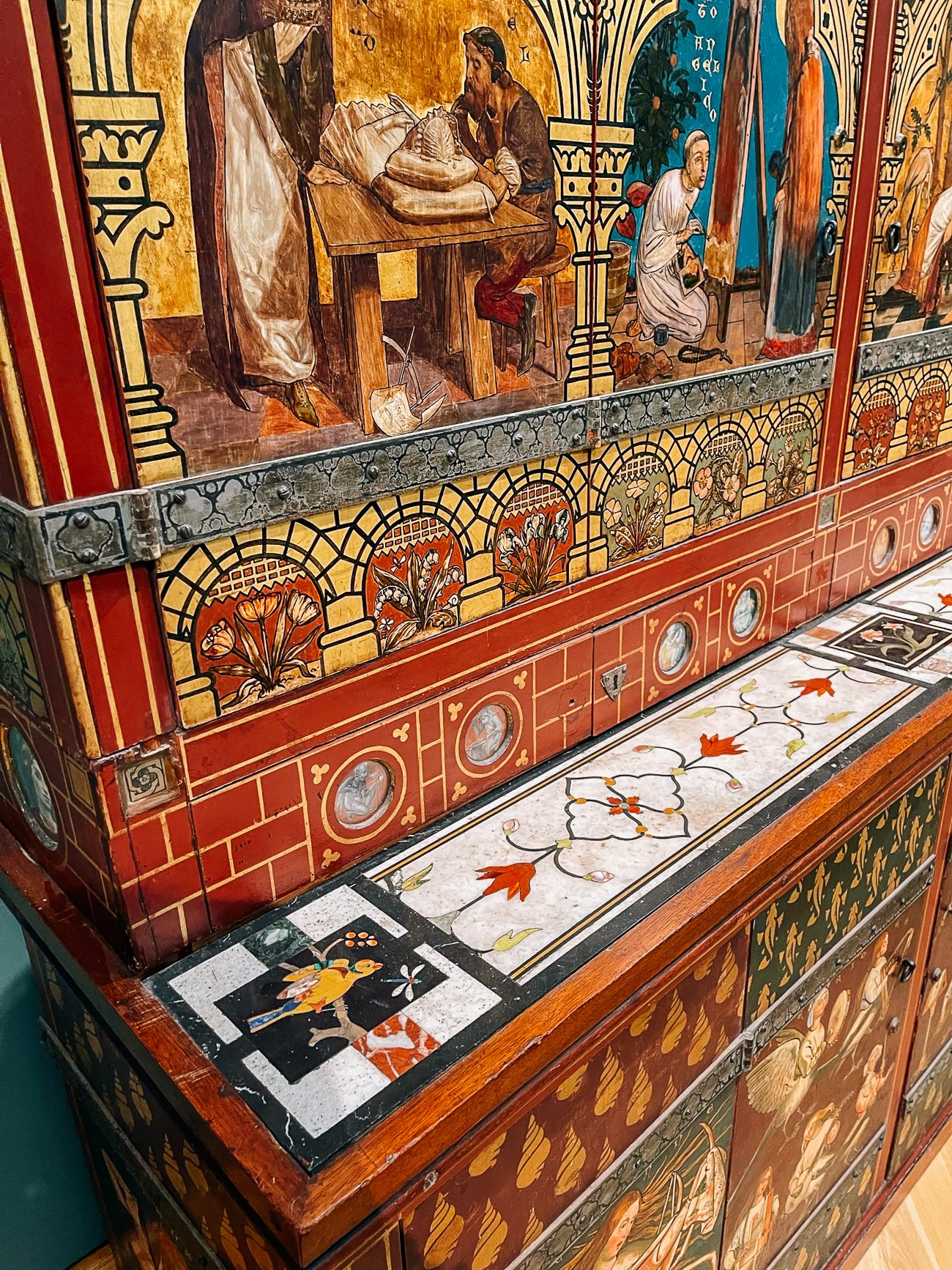
The museum knows what’s up though, because they had a ‘top ten things to see’ interactive map on the floor, so you could easily hit some of the most notable parts of their collection.
Wander the covered market
After our college throwback the night before with the formal dinner and pubs to follow (complete with rowdy Englishmen kindly foisting beers on us and ending the night on the floor with a hot cup of instant noodles), Kim and I woke up wanting nothing more than to granny out in peace at the Oxford Covered Market all morning.
Views from the night before
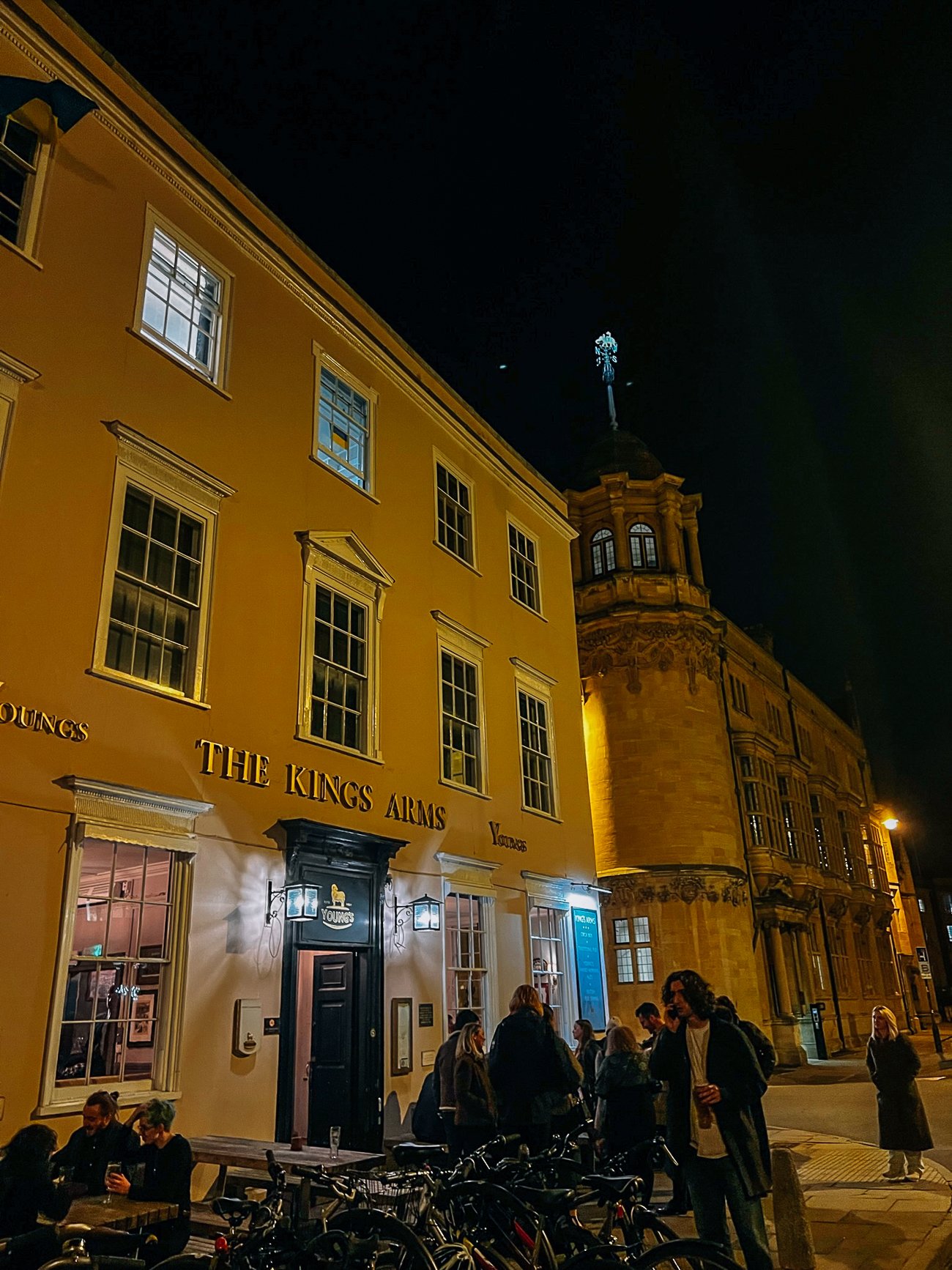

We grabbed two scooters and somewhere along the way, lost track of each other in Oxford’s winding side streets.
Fumbling for my Google Maps (Kim has GPS built into her brain), I got a bit sidetracked. However, the campus and surrounding area had enough landmarks to help me eventually find my way.
It was a quiet Friday morning, and we got there as many of the shops were warming up for the day ahead.
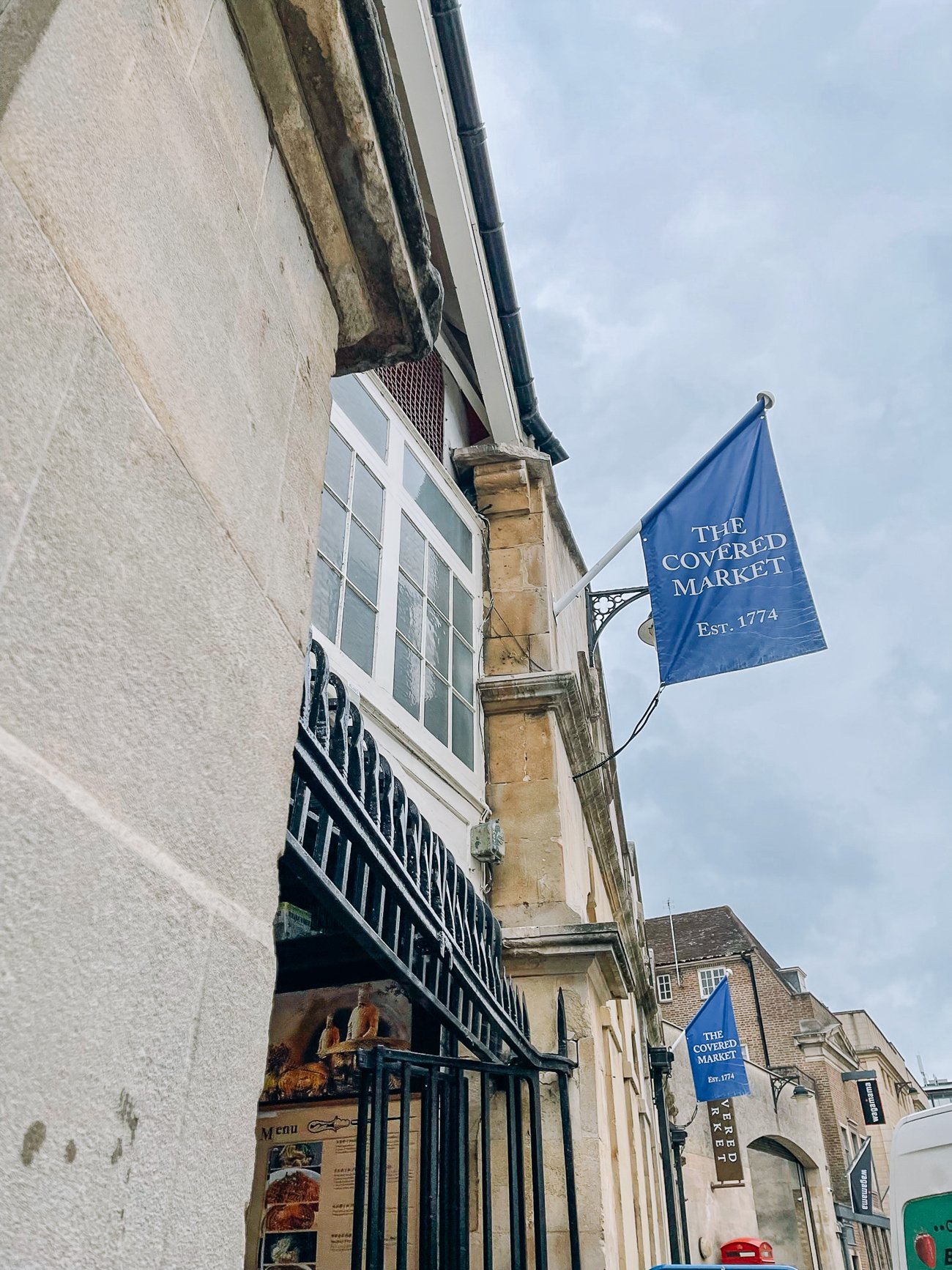
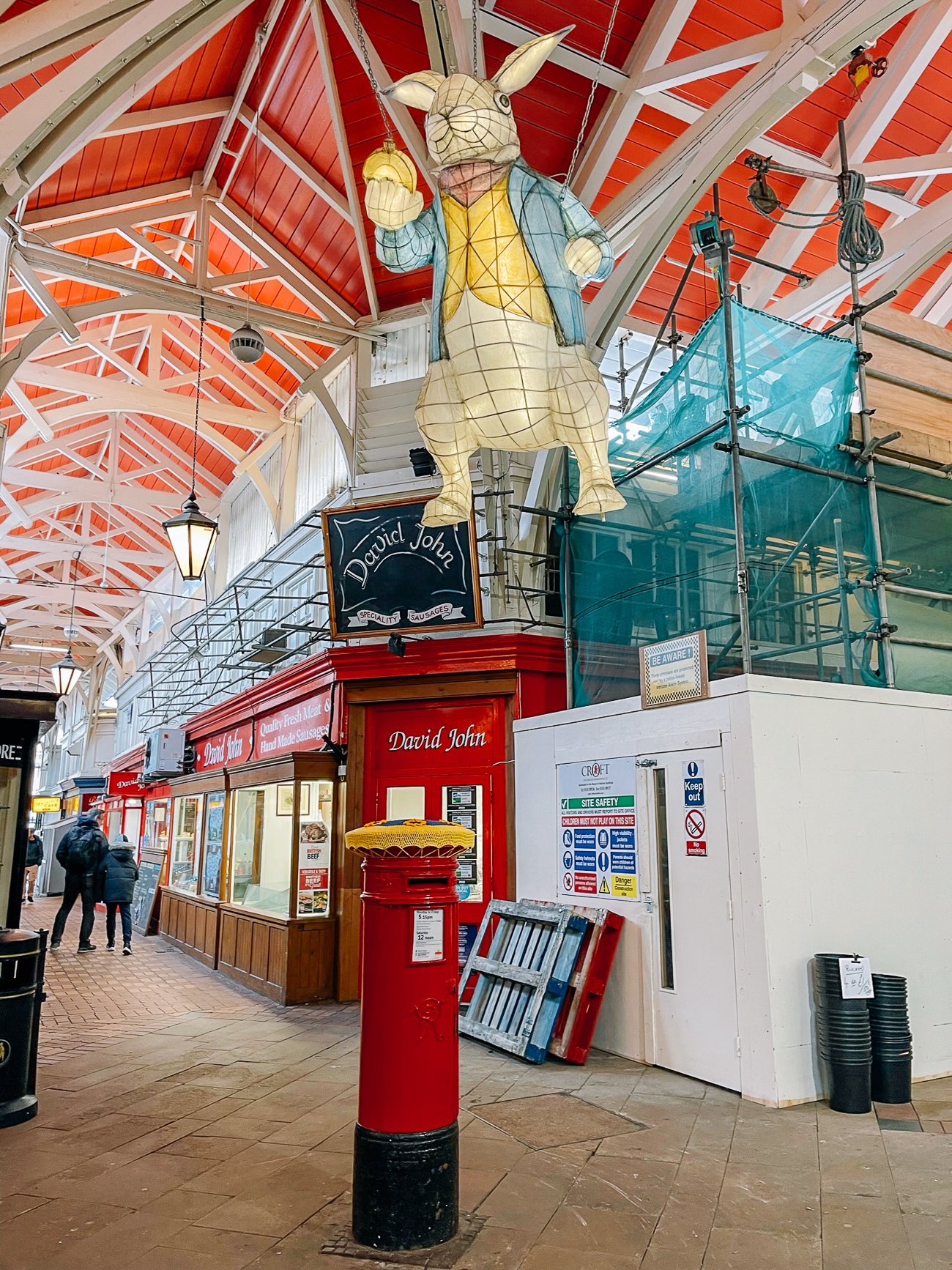
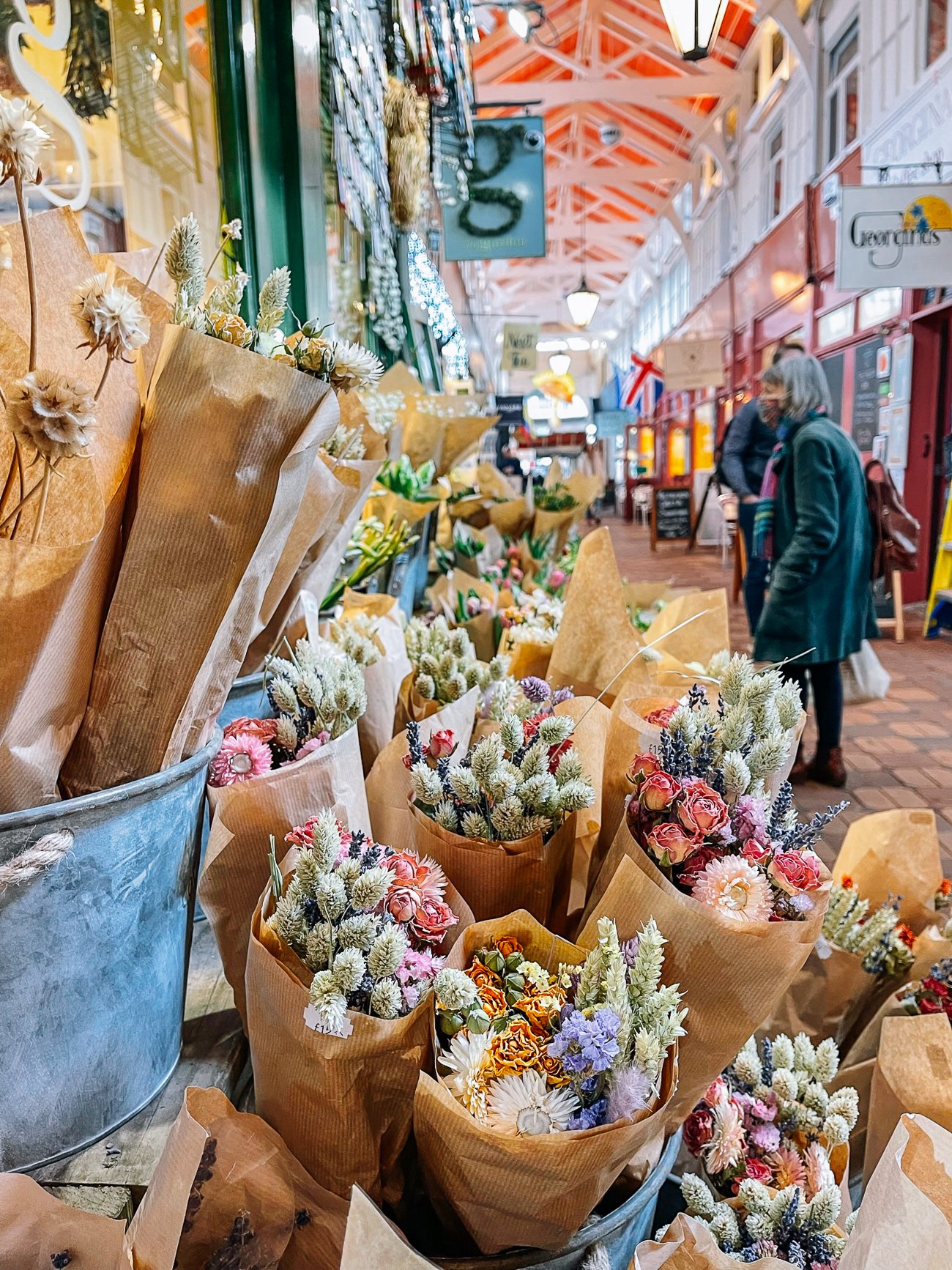
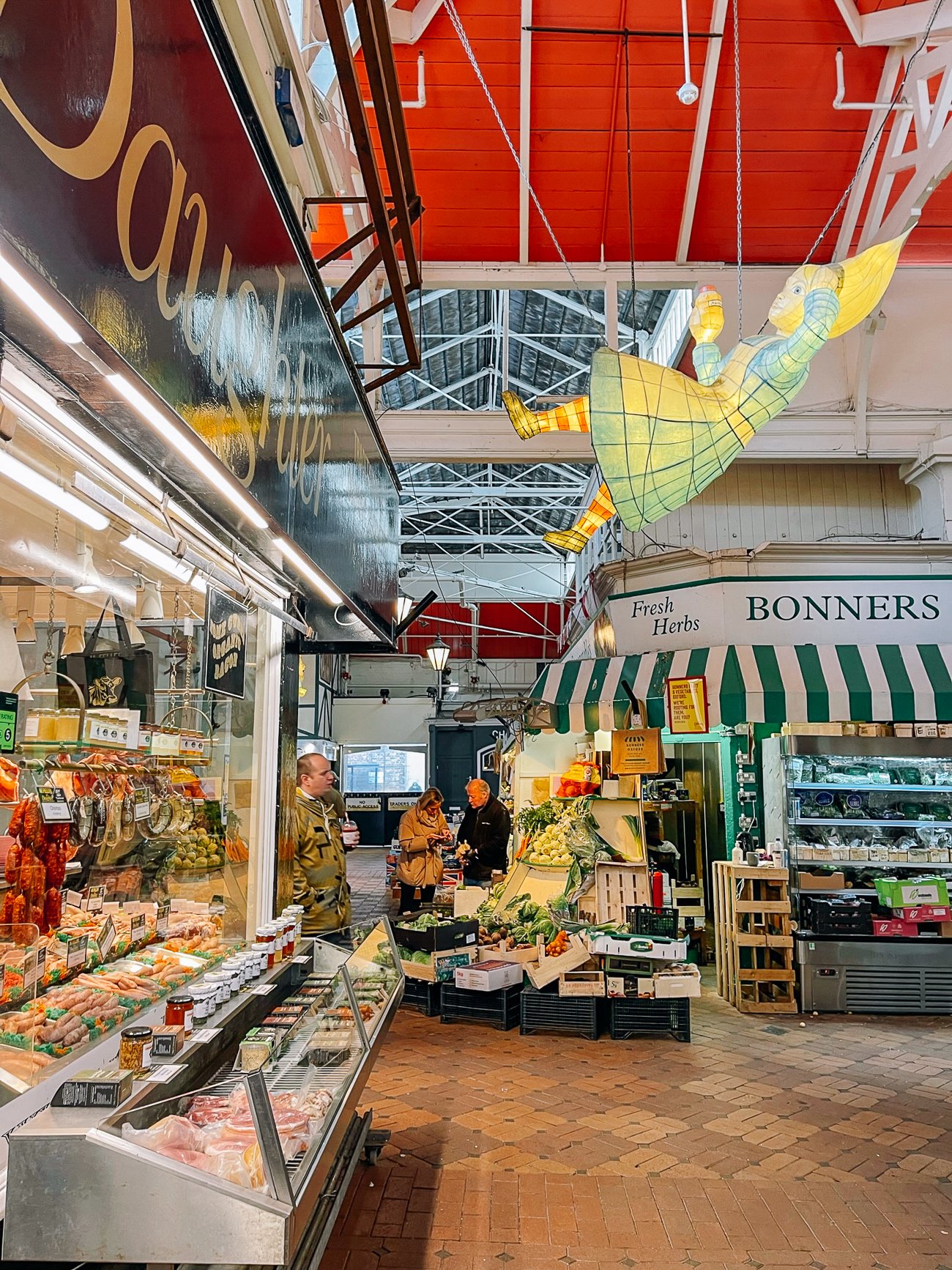
First order of business was getting some breakfast. We had coffee (for Kim), an excellent strong pot of tea (for me), and split an orange marmalade cake at Colombia Coffee Roasters.
It was a lovely cake, but in that moment, I realized maybe orange marmalade is like marmite. Okay maybe not that intense, but it seems like a beloved spread in spite of its bitter flavor (CC: Paddington. But really, watch Paddington 2.)
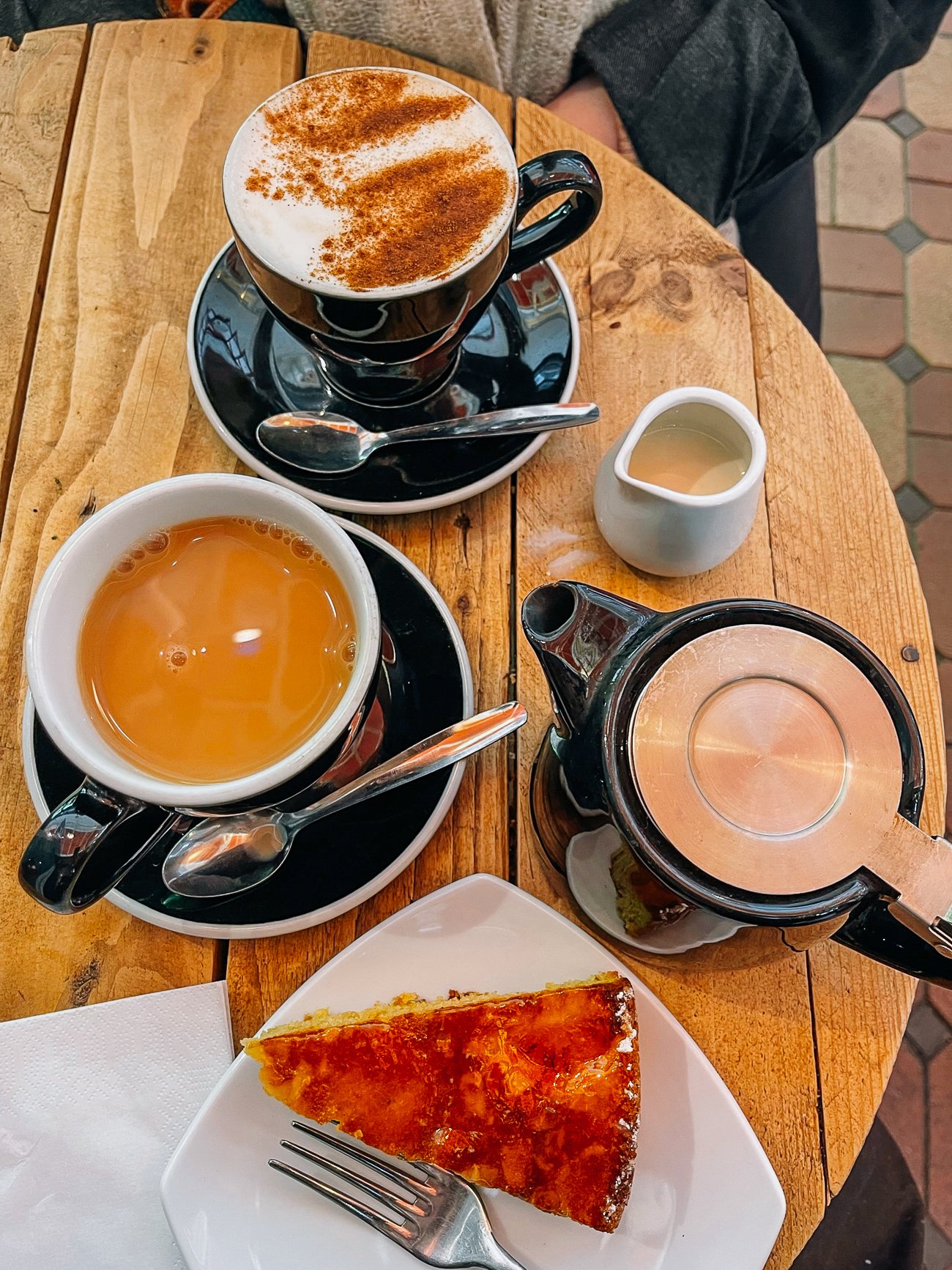
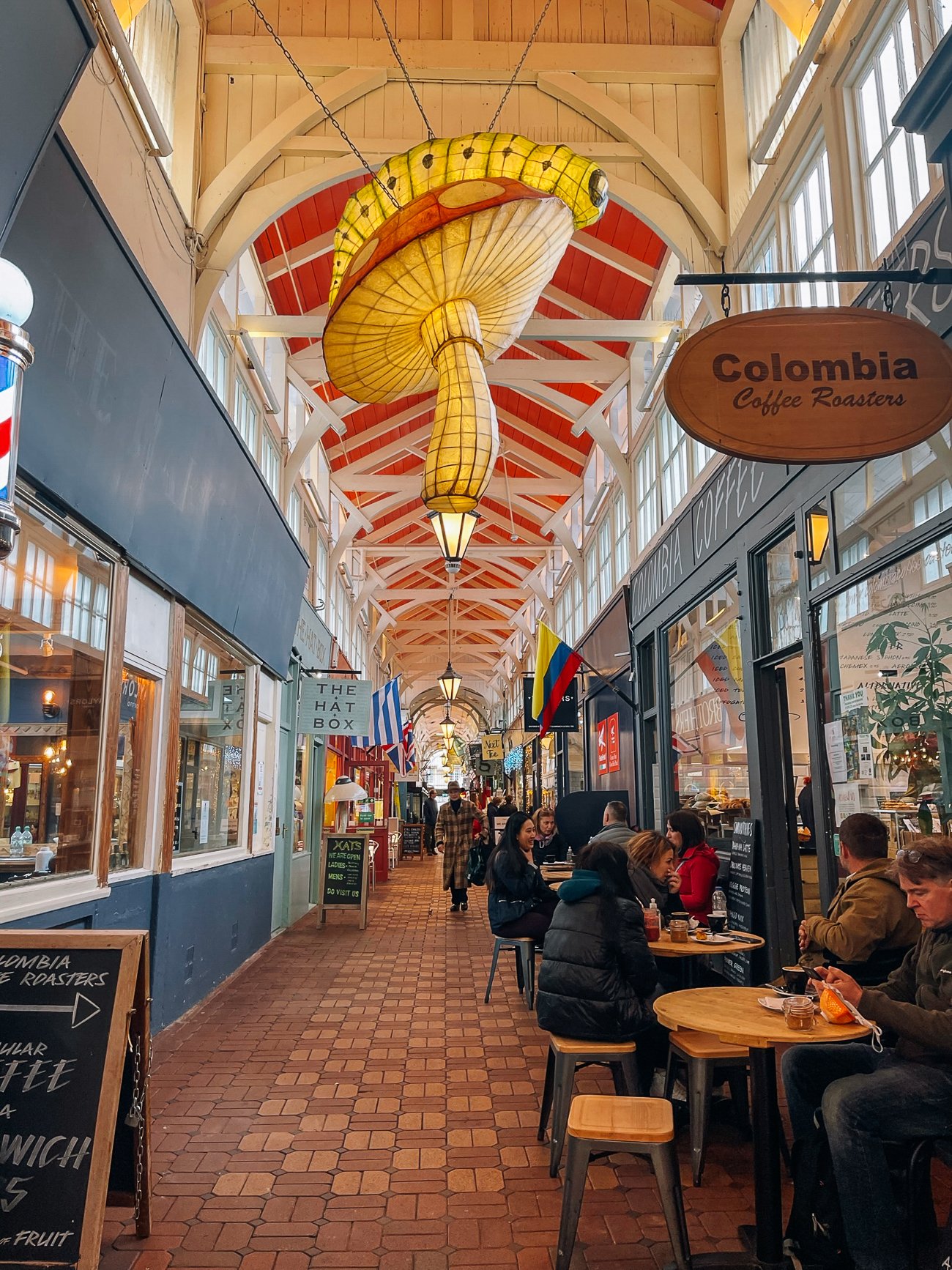
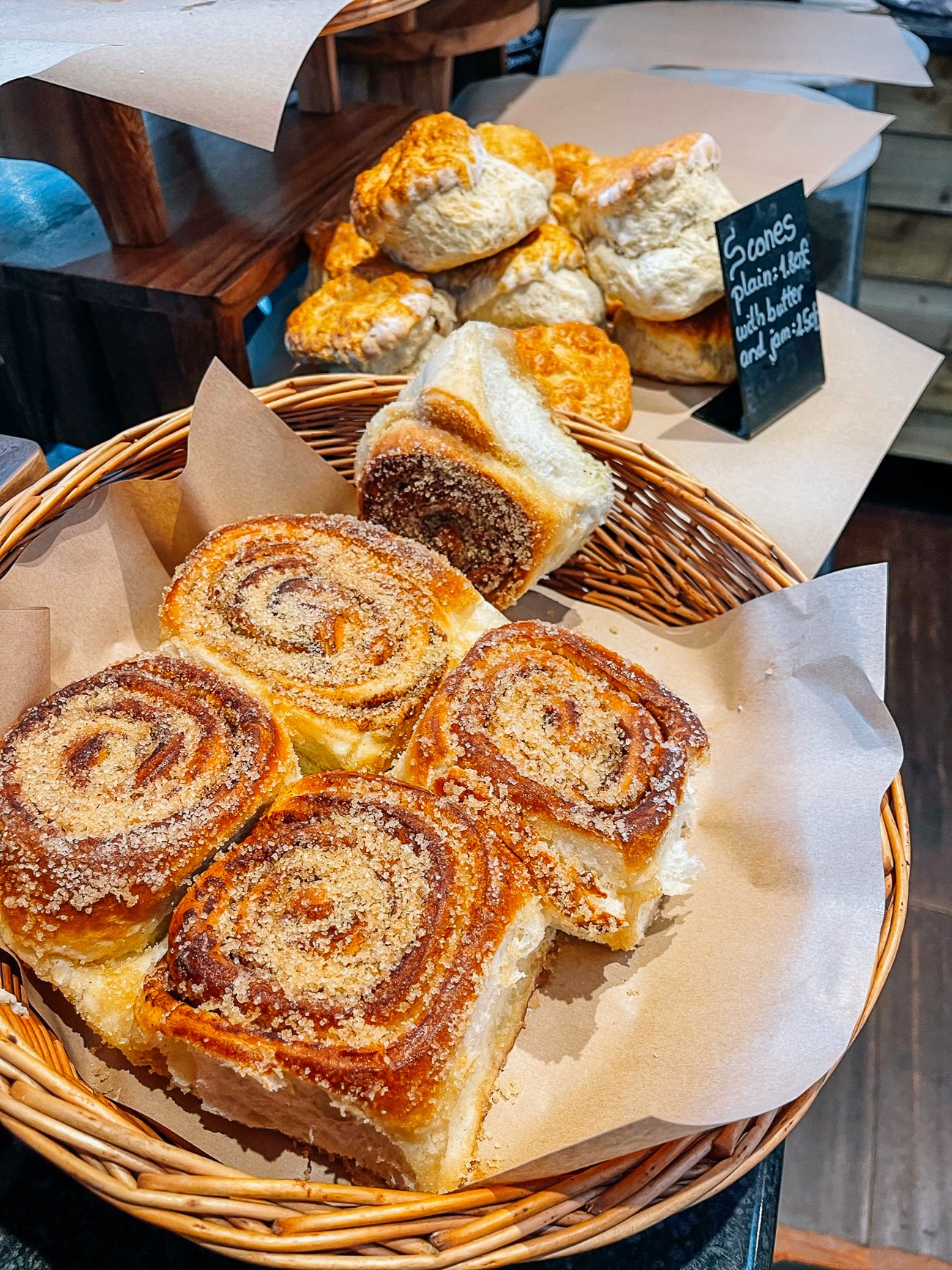
After tea, we walked around to admire the flowers, fresh produce, seafood, and meat. We also stopped into a very extensive pie, ham, and pâté shop, and paused to watch cake decorators make some very elaborate petit fours.
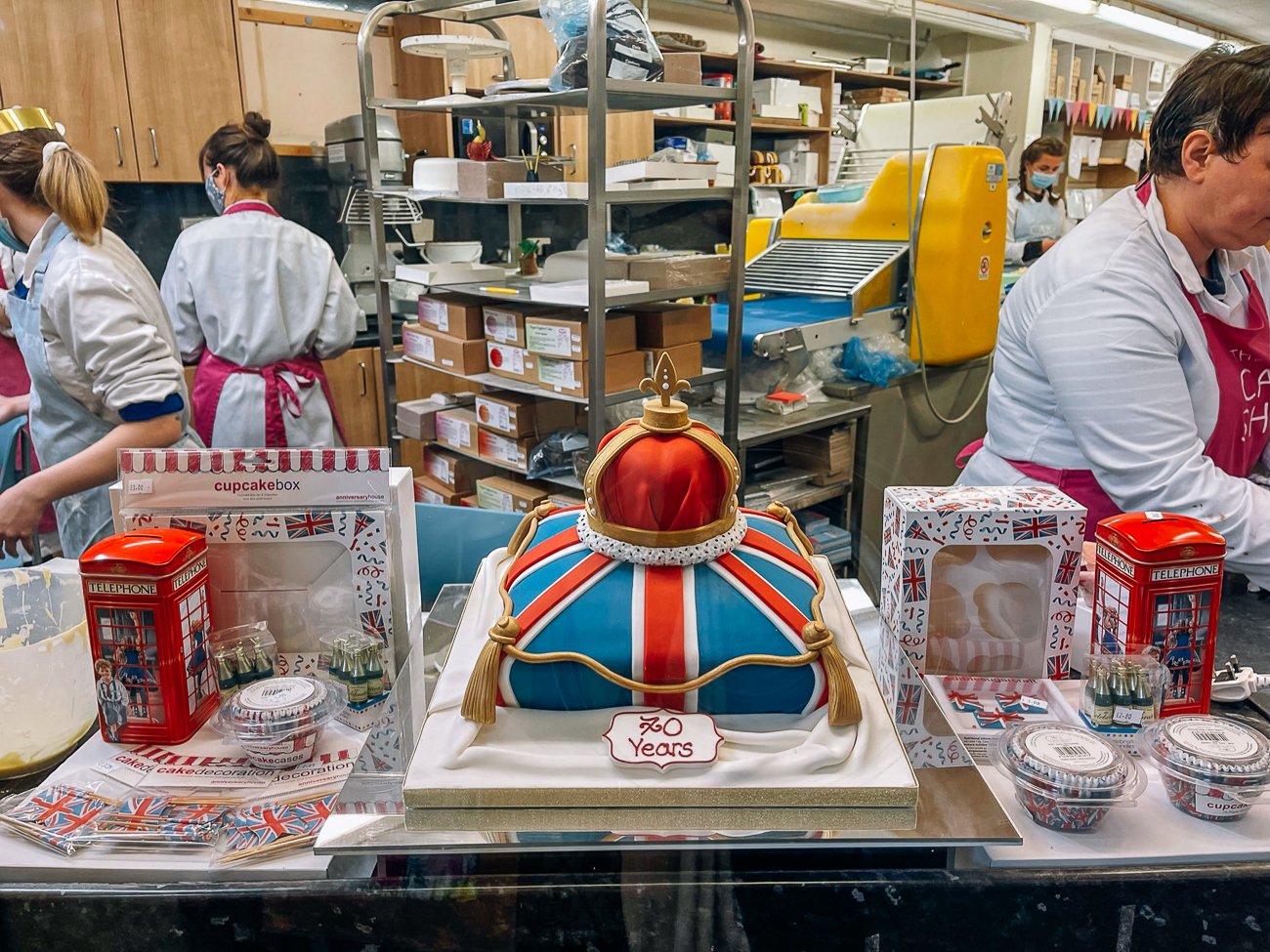
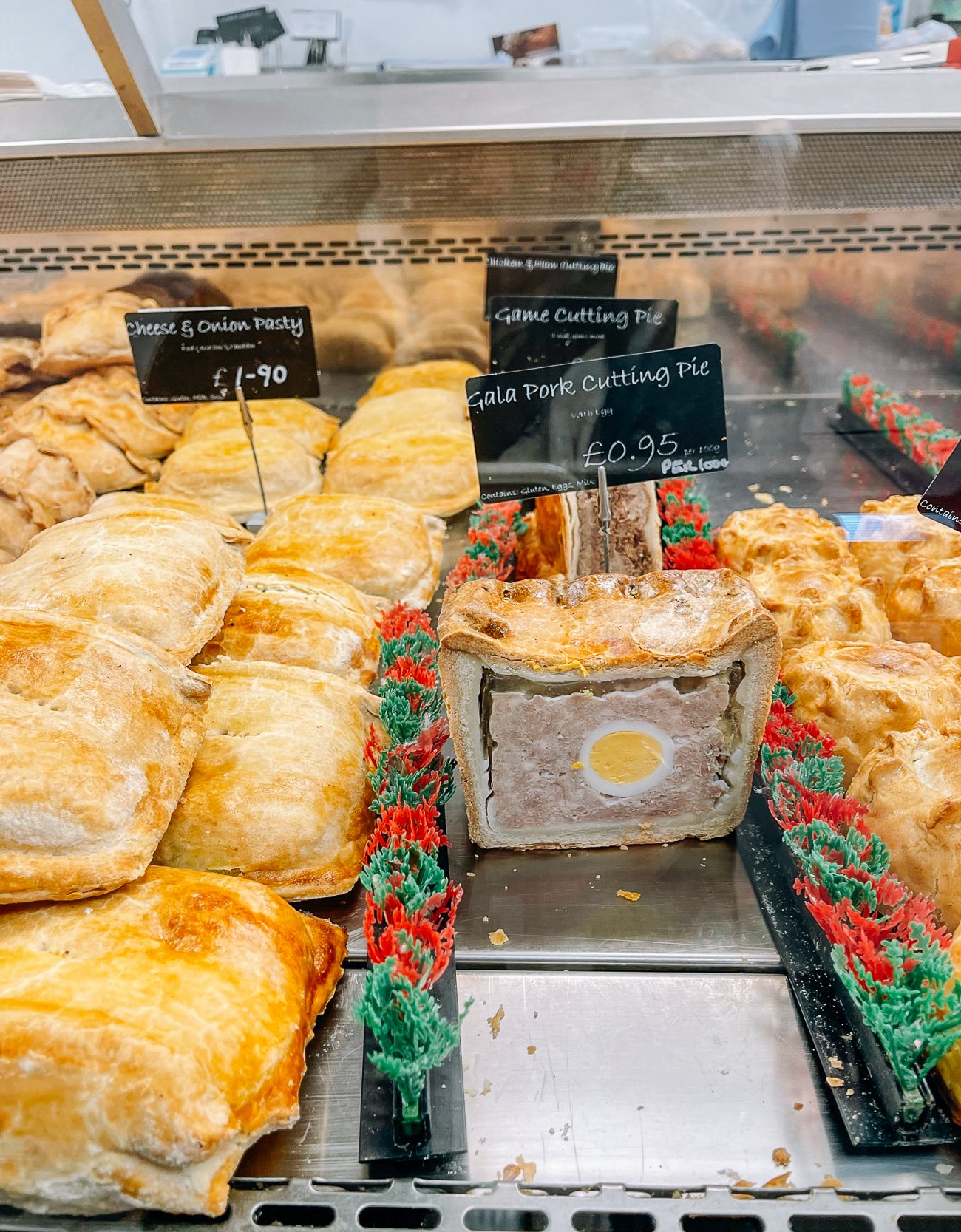
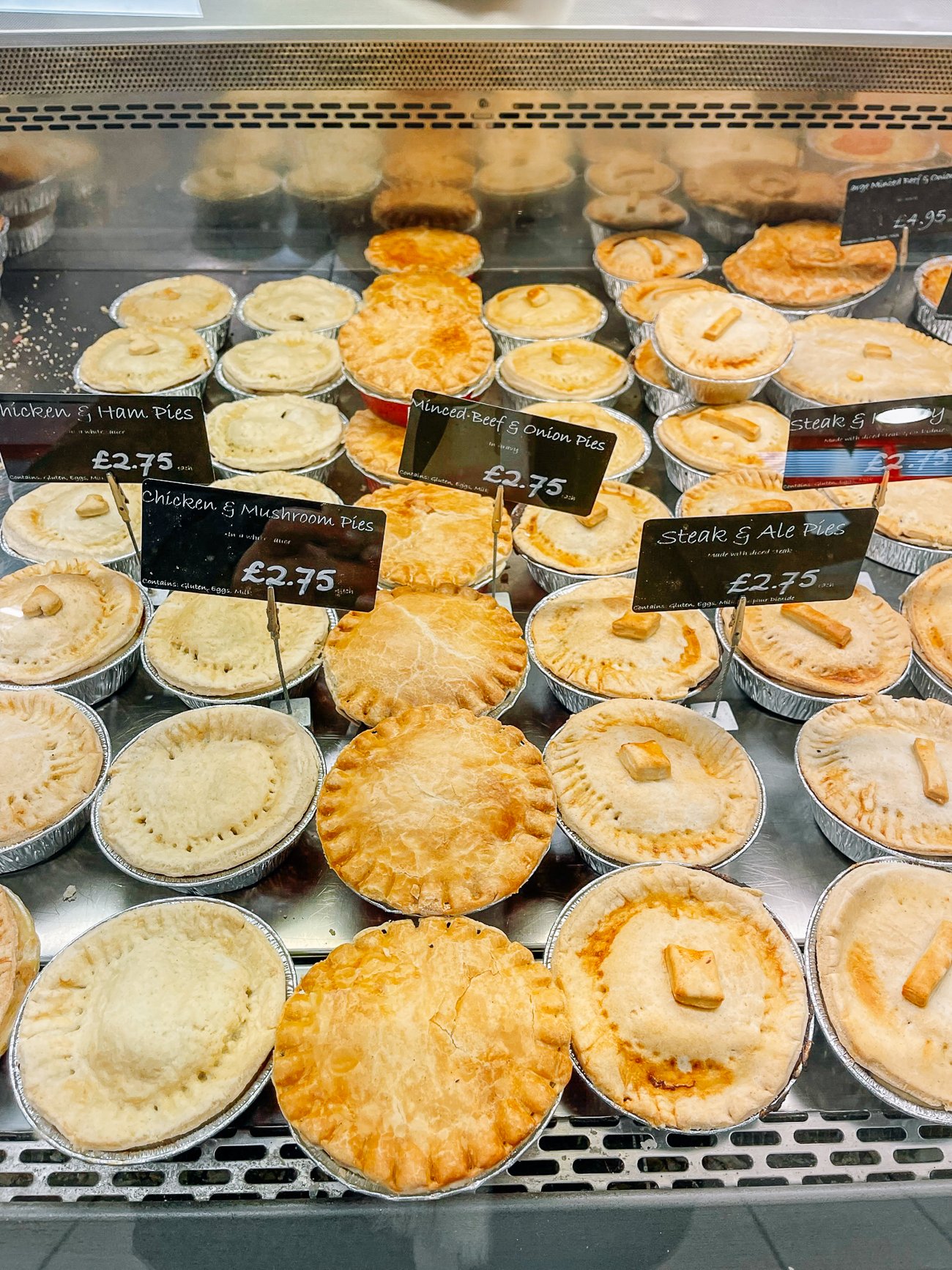


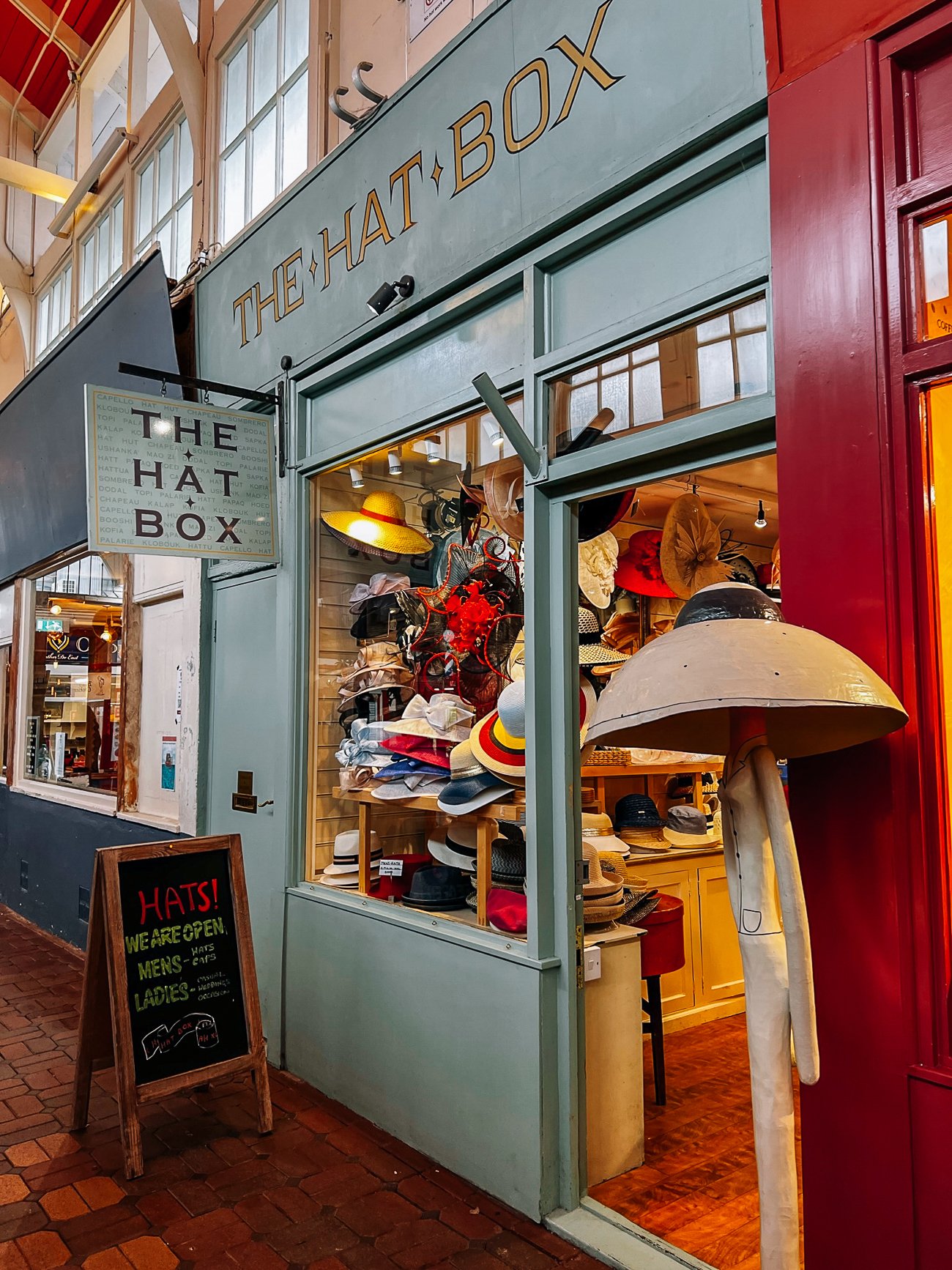
There were a few other little shops. The Hat Box stood out, as did a store called Nothing, which saw this plushie-loving Chinese girl coming from a mile away. I admit I brought home some furry friends.
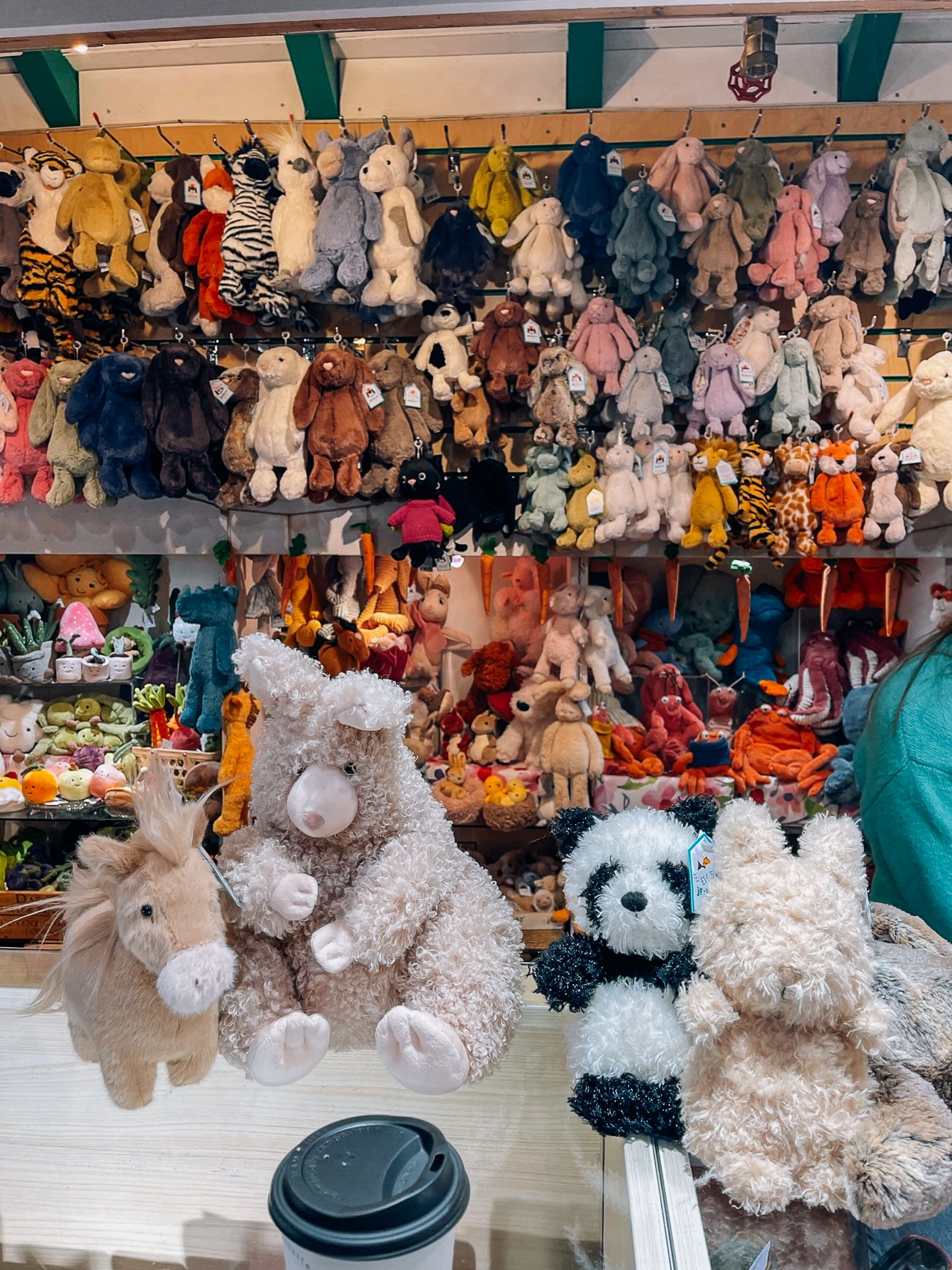
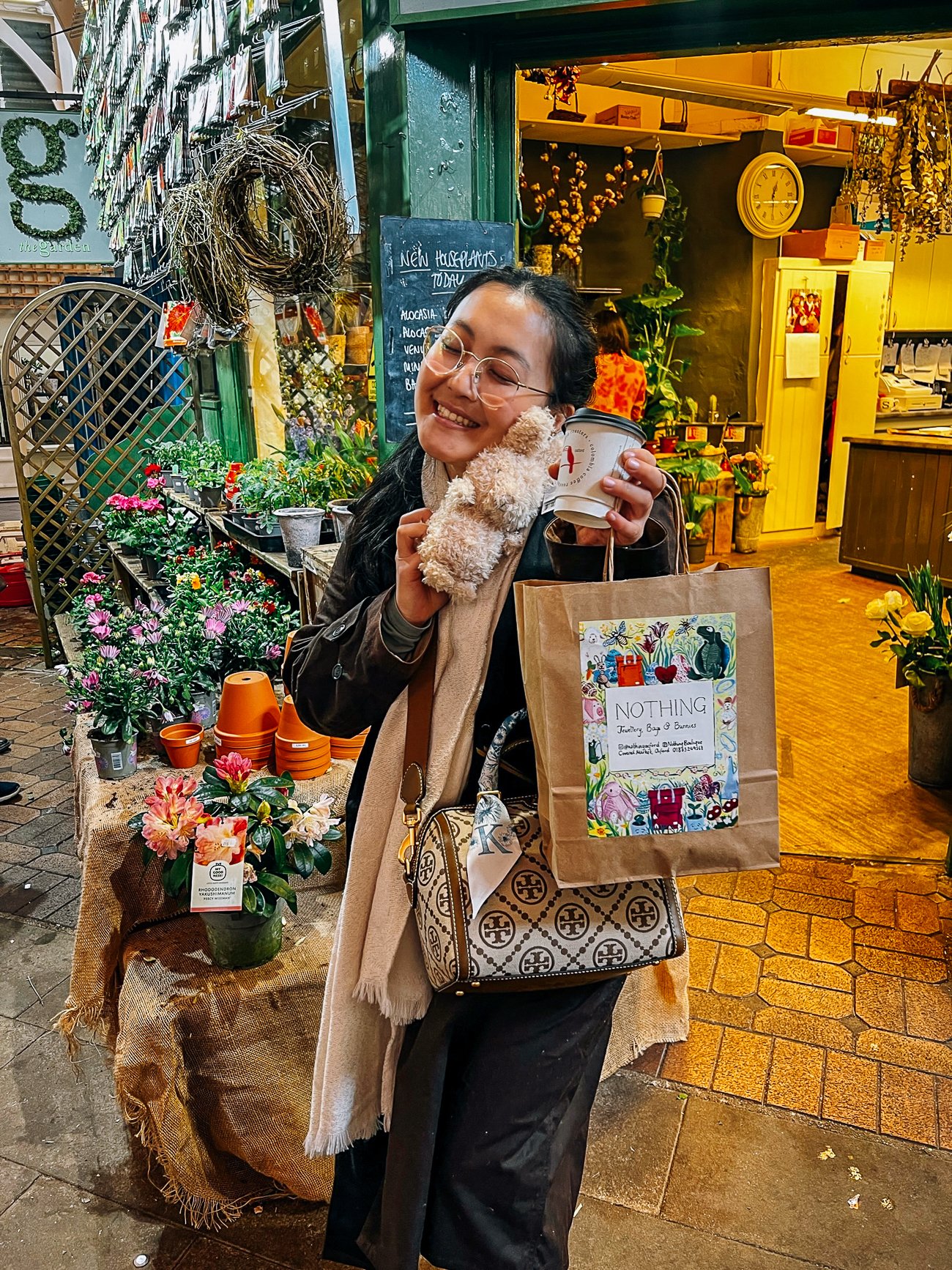
HAVE A MEAT PIE AT PIEMINISTER
With the cake a bit of a disappointment (I’m just not a marmalade person), we moved on to our REAL priority. Meat pies.
There is a Pieminister in the market, which is technically a franchise chain that started in Bristol, with 15 locations around England. My initial impulse was to skip it for that reason, but it really did appear to be the best spot around to get a good pie with mash and peas.
We ordered a chicken and mushroom (fine) and the ultimate: steak and ale pie. To say that this pie eating experience was a revelation would not be an overstatement.
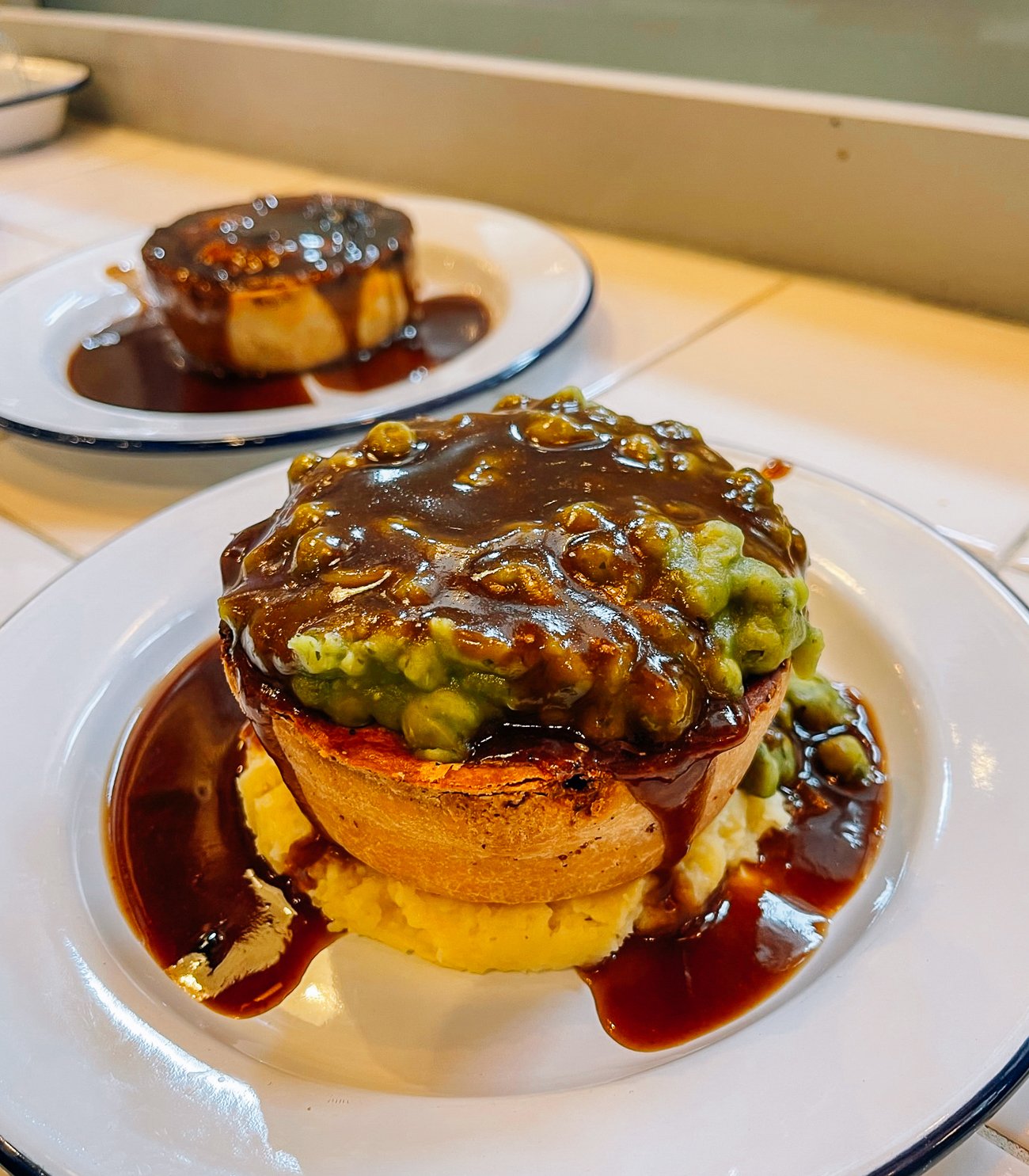
and gravy!
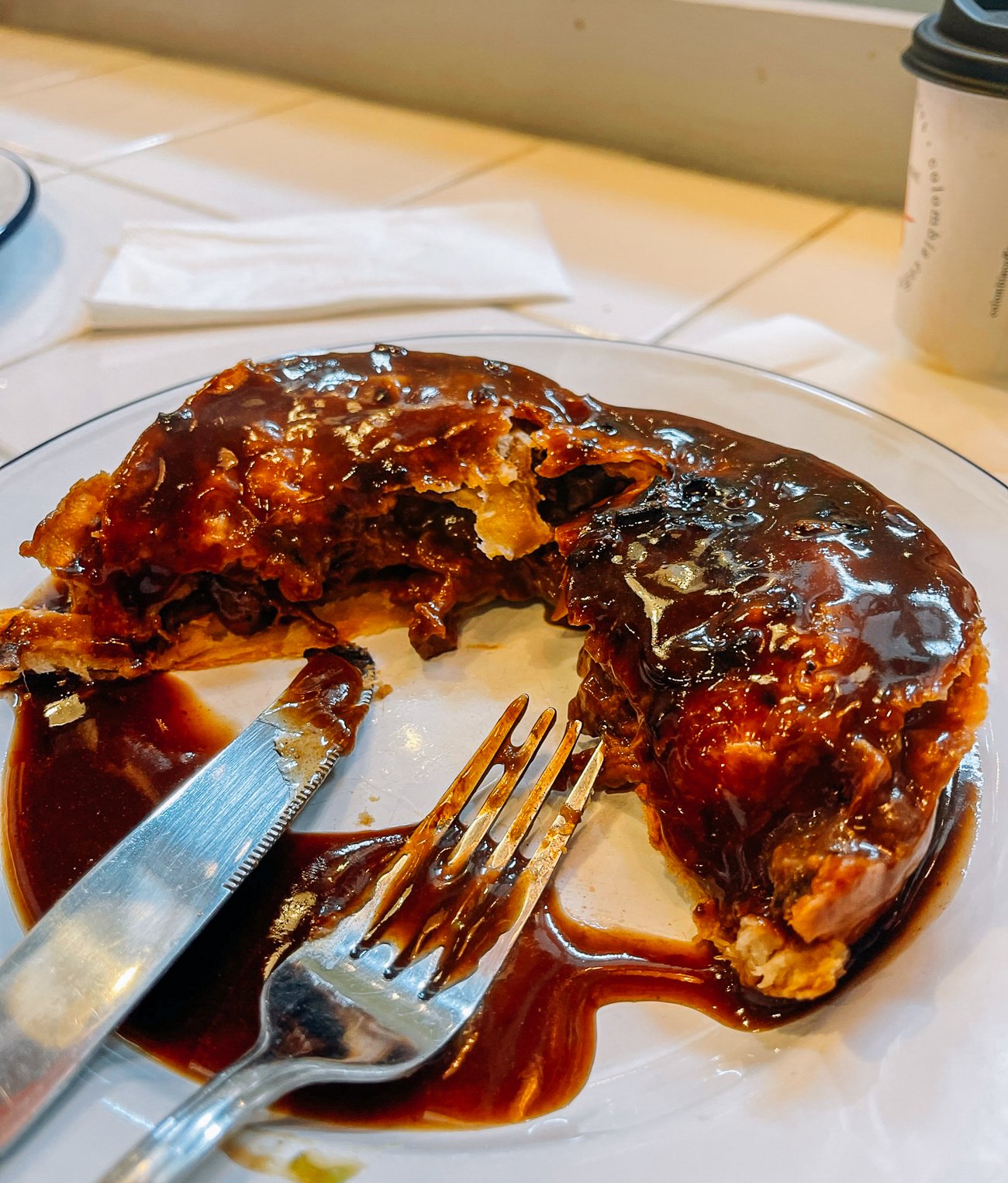
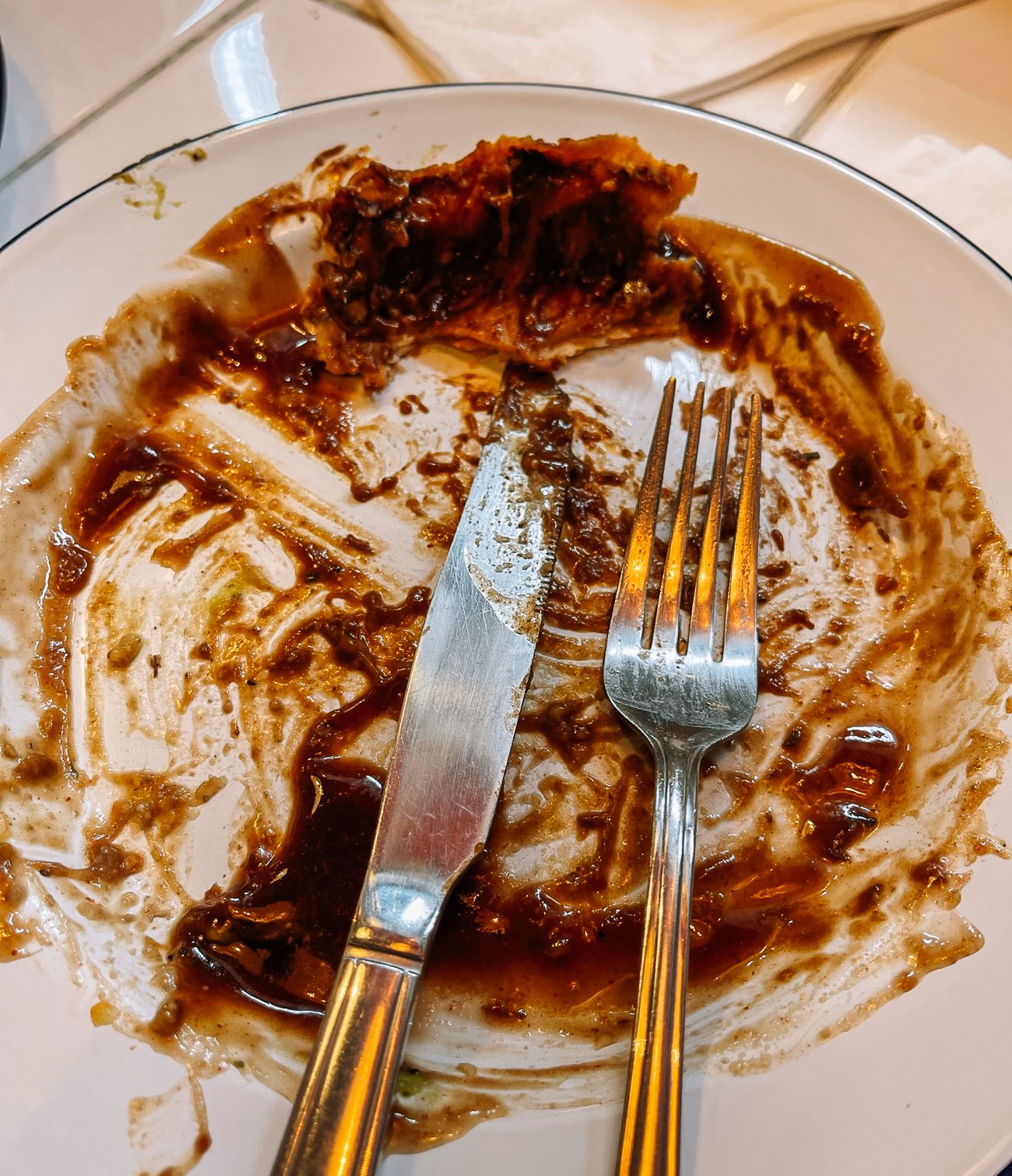
It was deeply amber flavored and had a perfectly silky, stick to your ribs quality. (As Nigella Lawson says in her book Cook, Eat, Repeat—which I bought a UK edition of on this trip, nothing quite compares to the richness and comforting taste of brown foods.)
The mash, peas, and extra gravy are MUSTS. I’m usually skeptical of foods that seem like decadence for the sake of decadence (see my sad, mashless pie in the London post). But how wrong I was to even think this when it came to these pies. The combination is a worthwhile endeavor.
After pie, we drowsily wandered back outside and into the cloudy light of day. On the way out, we saw some other food spots that seemed popular for baked goods, samosas, and Thai food.
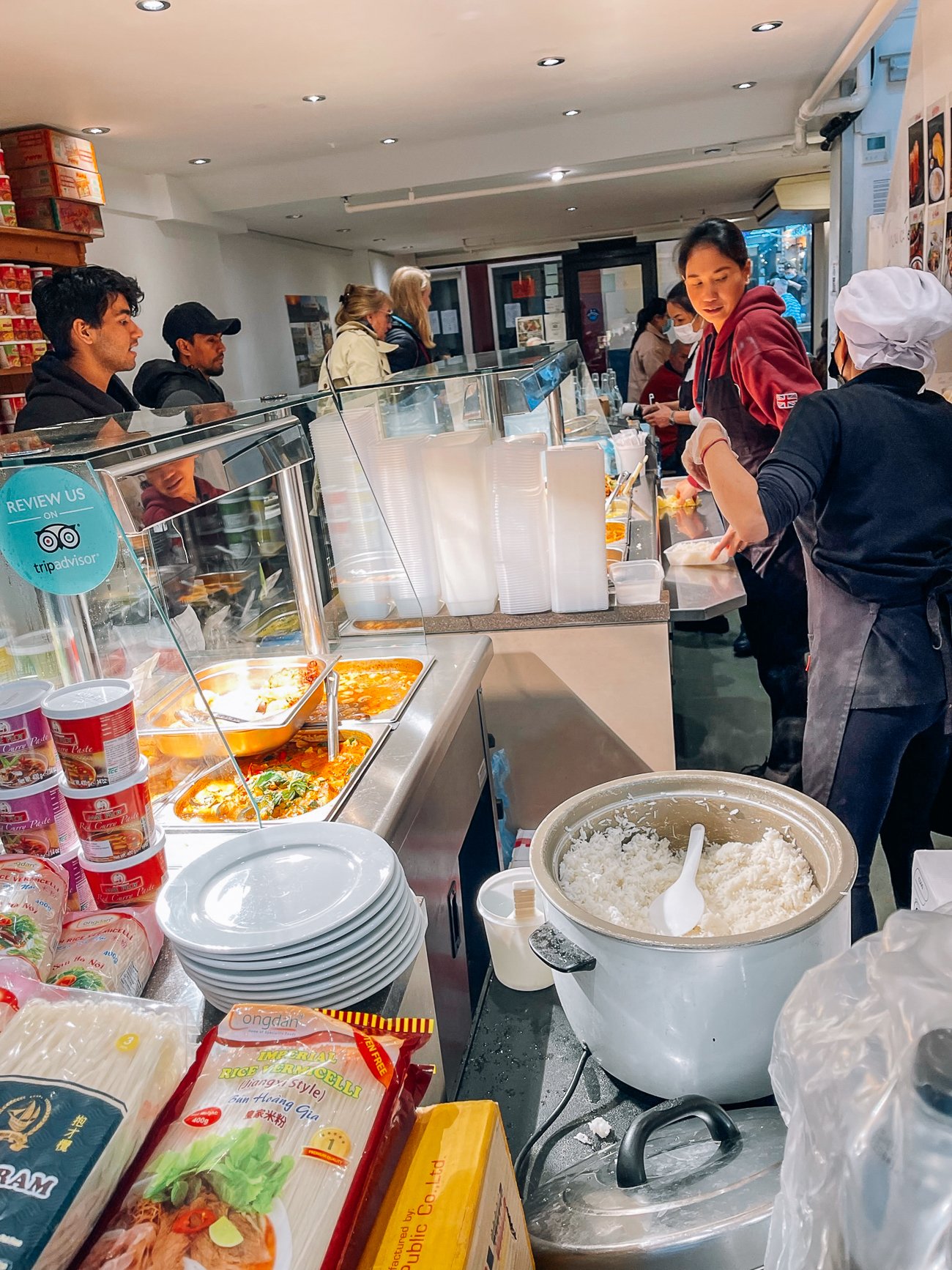
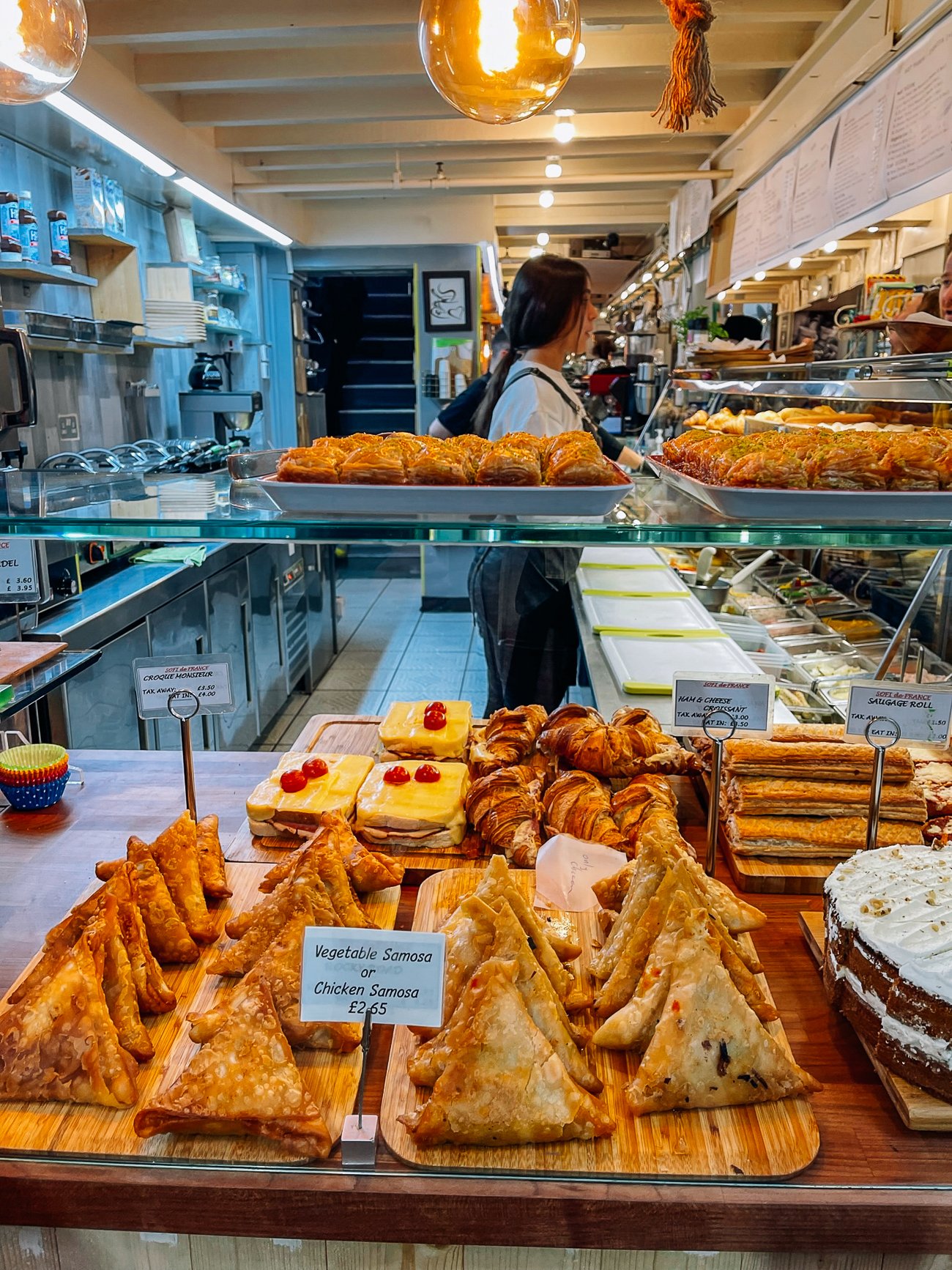
We stumbled upon a last shop: Objects of Use. It is exactly as the name suggests. Extremely useful objects for home and garden, from things to clean with, things to cook with, prestige English gardening tools, whistles of all kinds to train your sheepdogs with, nostalgic camping enamelware, and Scandinavian blankets and kitchen towels.
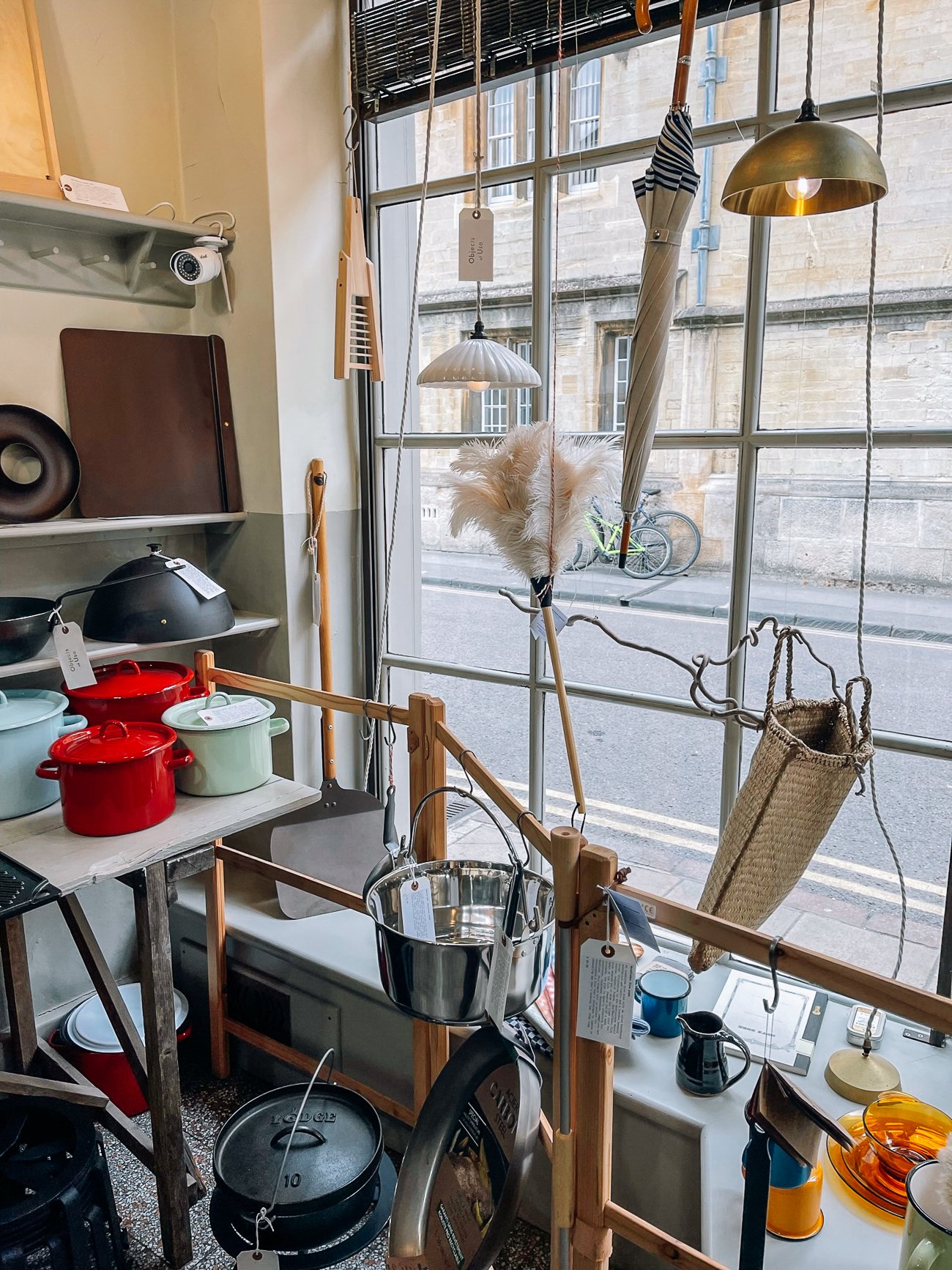
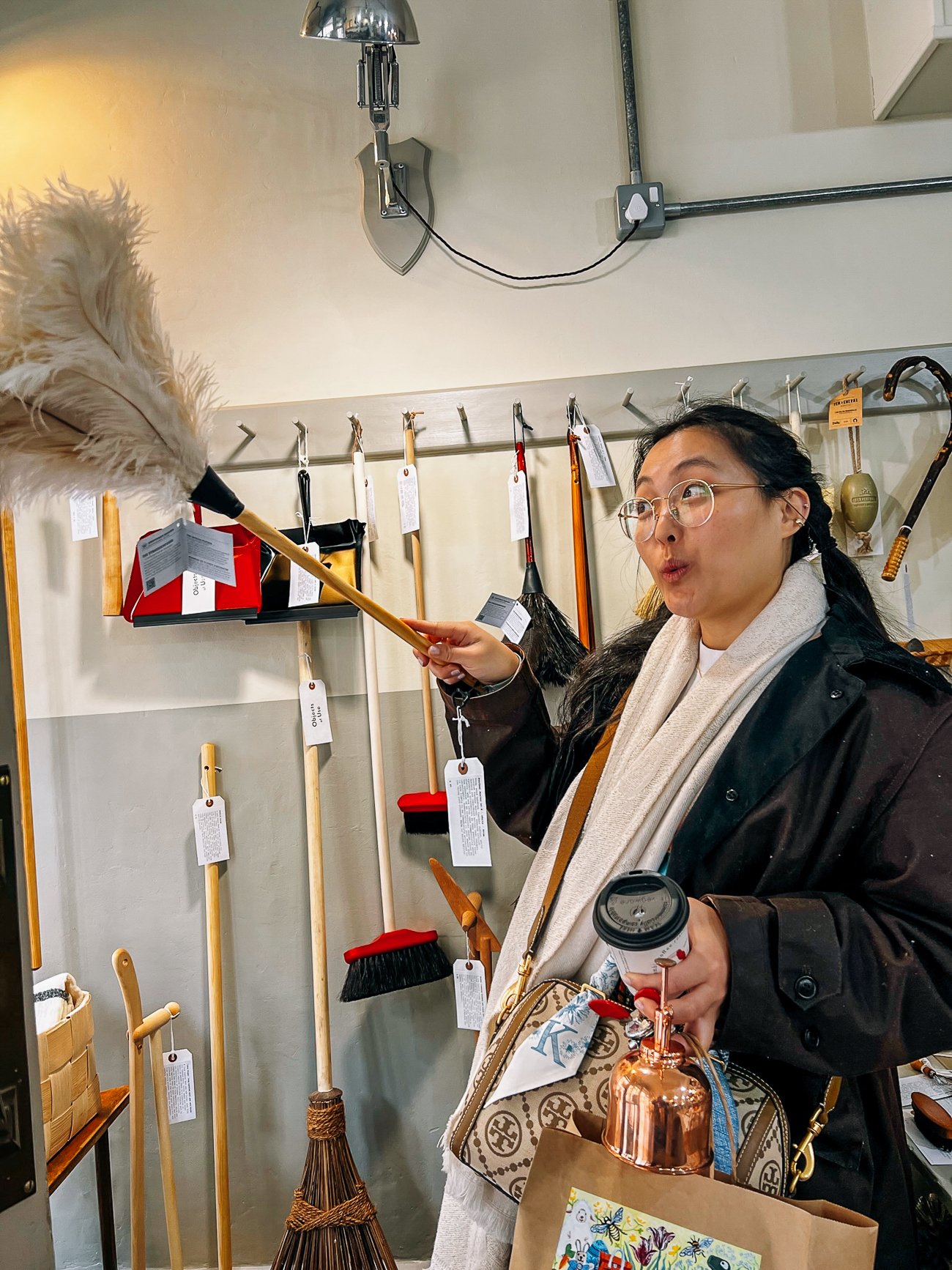
For example, I found a shower brush with the exact perfect roughness of bristles—not too soft, and not like nails on your skin. I also picked up an extremely compact twist can opener. I got it for Sarah as a gift for our camp-cooking mess kit.
(They have options for International shipping—you’ll likely need to email. So if you find yourself in Oxford, it’s a cool stop.)
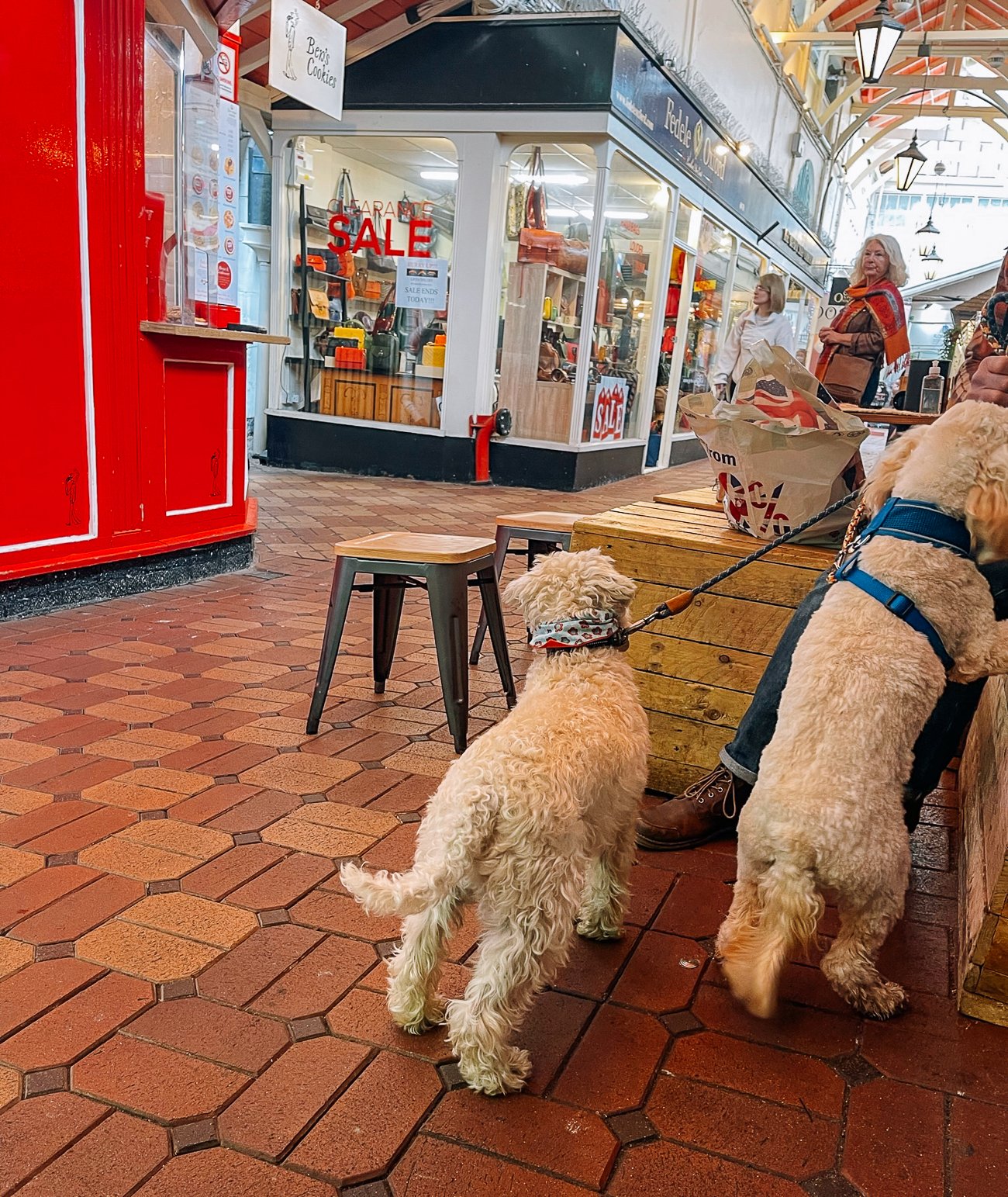
Other things you could do that we didn’t have Time for:
For history buffs and Downton Abbey nerds:
Blenheim Palace
A 20-35 minute drive from the university, Blenheim Palace is a palace, museum, and magnificent garden rolled up in one. It’s probably most famous for being the birthplace and home of Sir Winston Churchill.
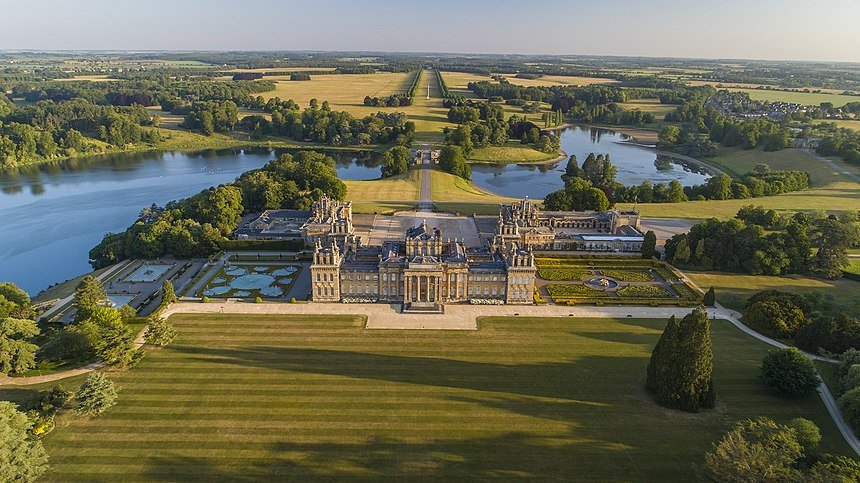
Their website boasts: “Britain’s greatest palace,” which is a strong claim, but I suppose since no one is allowed to go into Buckingham Palace, it’s not too hard to believe.
It actually is bigger than Buckingham Palace! I do wish I had budgeted more time, but it’s a reason to return.
For amblers/wanderers:
Gloucester Green Market
A farmer’s market with prepared foods and produce. We saw it looking cheerful in the distance on our way to have lunch at the aforementioned very reasonably priced Saïd Business School cafeteria. Vicky’s other friends mentioned it was a fun place to walk through.
For Plant lovers:
The C.S. Lewis Nature Preserve
C.S. Lewis studied at Oxford in 1917, and later lived there. It was in Oxford that he befriended casual folks like J.R.R. Tolkien. The nature preserve has no entry fee—it’s a public place to take a walk surrounded by nature.
It’s described as “a tranquil woodland…[with] a large pond full of aquatic plants and toads that migrate to spawn here.”
If you are a C.S. Lewis fan, you can tour his home, The Kilns. And outside of Radcliffe Camera, there is a tall black lamp post that may have inspired the lamp in the wintery woods of Narnia. There’s actually a “door to Narnia” with wood carvings as well that may have fueled Lewis’s imaginings and makes for a fun quick stop.
Oxford Botanic Garden
Oxford Botanic Garden is the U.K.’s oldest botanical garden, home to 5,000 kinds of plants. I wish we’d had time to go and wander! It was founded in 1621 as a physic garden, growing plants for medicinal research.
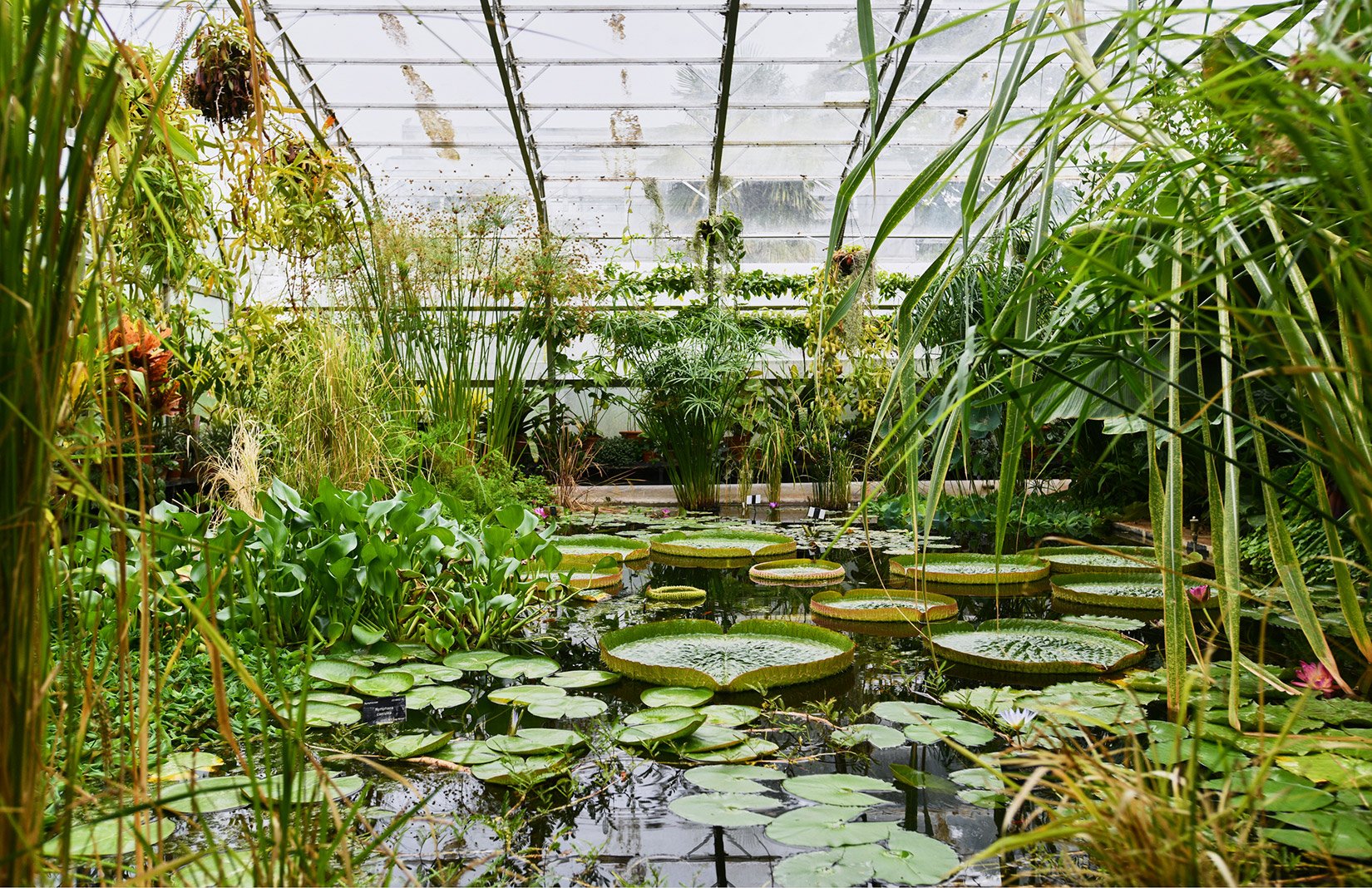
(Across the street is Magdalen College where C.S. Lewis was a fellow, and a ways from there, Merton College of which T.S. Eliot was an alumnus. They also have some sites that you may want to check out. For example, remember all those chapels? I believe every college has their own—some more glorious than others, though they’re all quite impressive).
For more dutiful Lord of the Rings FANS than me:
J.R.R. Tolkien bench and grave
This blog describes all of the obscure Tolkien connections you can find in Oxford. Here, you’ll see the bench dedicated to his life, where he is buried alongside his wife—with the appropriate inscription, “Beren and Luthien.”
For CaR lovers:
Aston Martin Heritage Trust
Old, shiny Aston Martins. Lots of ’em. Revel in the James Bond of it all. Fun fact: an Aston Martin DB5 like the one he drives in the original 1964 Goldfinger will run you in the ballpark of $600,000, to just shy of $1 million.
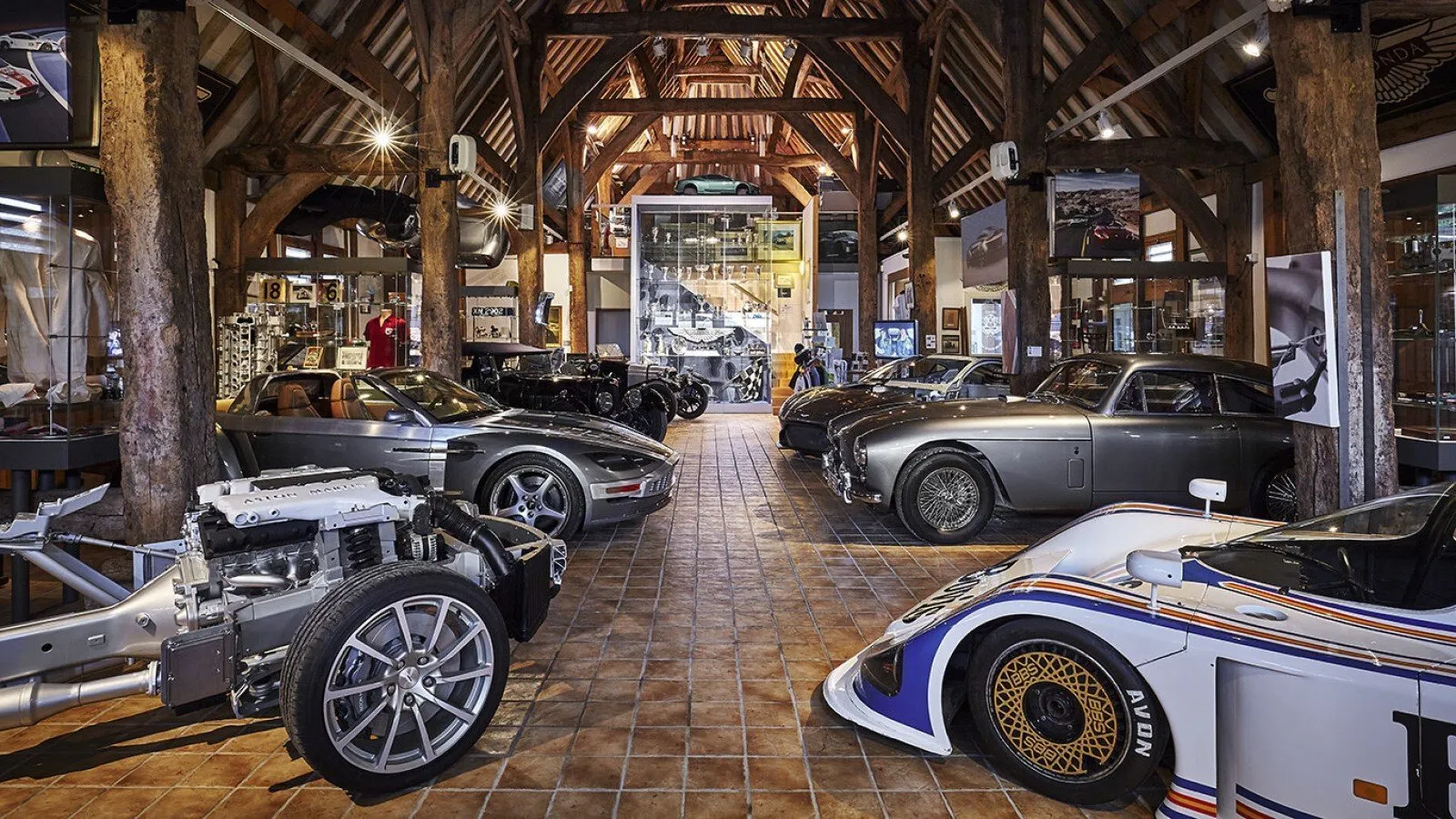
We hope you enjoyed this little armchair vacation or found some ideas to fuel your trip if you’re planning one!
